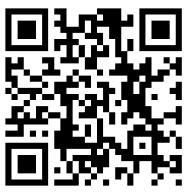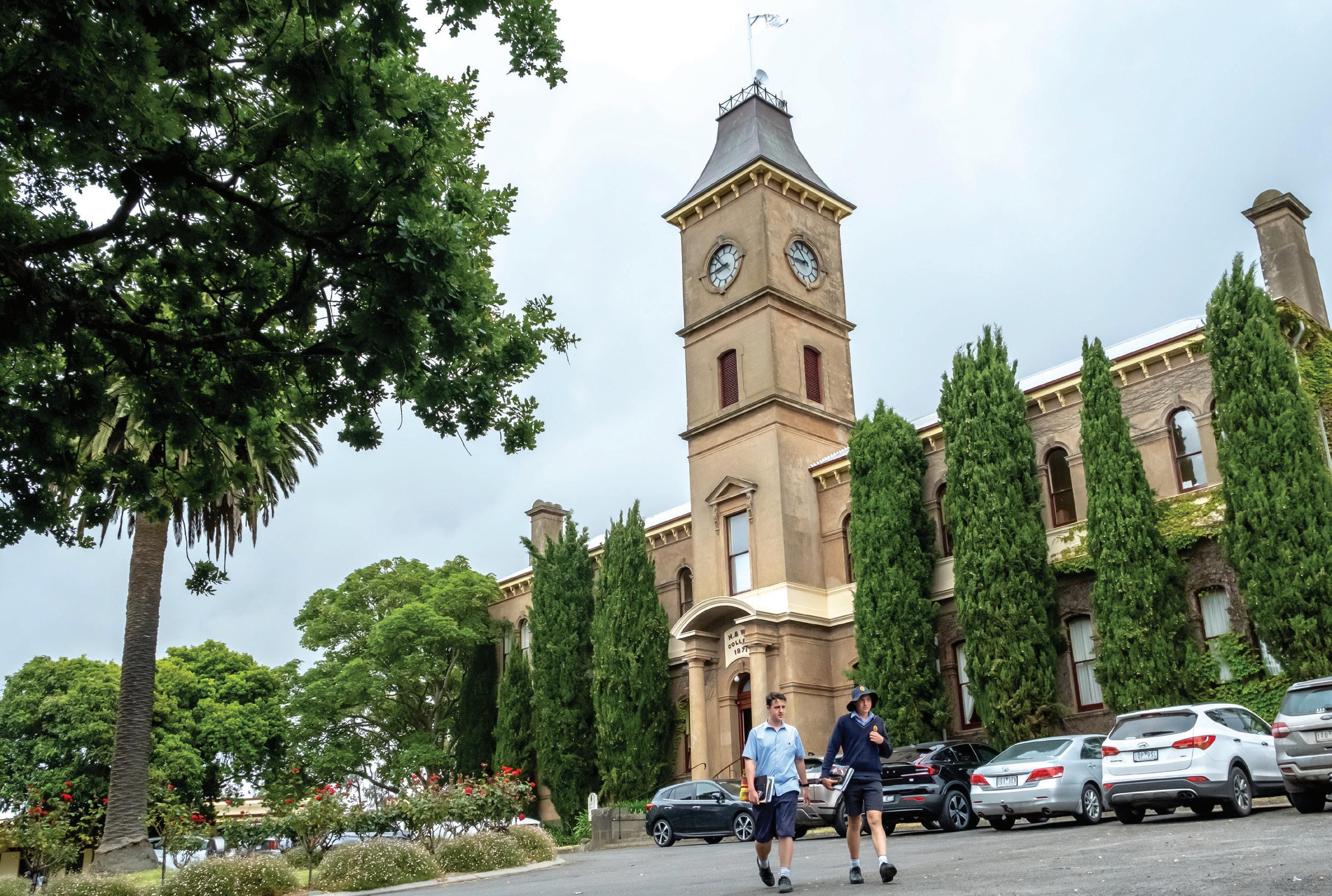
 SENIOR SCHOOL
SENIOR SCHOOL


 SENIOR SCHOOL
SENIOR SCHOOL
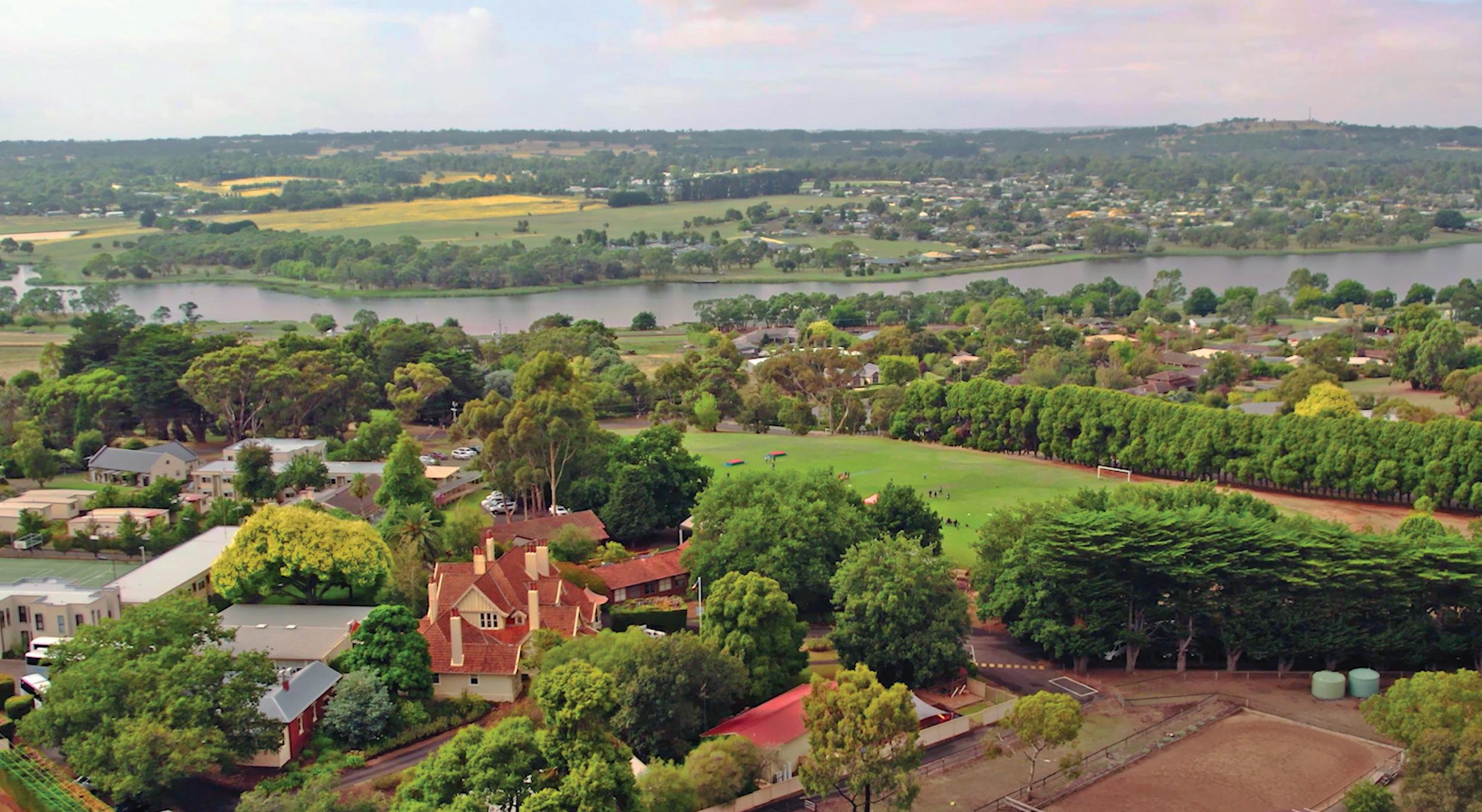


Welcome to the exciting, and hopefully enjoyable, time of subject selection for 2025. This guide contains all of the information you will need to learn about and then select subject preferences from Year 8 through to Year 12. It also contains information about the curriculum structure of Year 7.
Our Senior School curriculum is structured into phases which we call: Engage (Year 7); Explore (Year 8-9); and Emerge (Year 10-12). The structures and options at each phase are specifically designed in line with the name of each. Year 7 seeks to engage young minds by exposing them to a wide range of possible
areas of study. The Explore years are for just that – exploring and testing out areas that might become passions. The Emerge years are when each student starts to come into themselves academically.
Whatever their pathway, we hope that each student is excited by the possibilities on offer, and that they choose well. We hope that they emerge as thoughtful and wise young people, able to discern what matters and with a clear sense of who they are and would like to be.
Mr Michael Horne PrincipalStudent wellbeing is our highest priority. Your first point of contact for any queries or concerns is your child’s mentor who is announced at the beginning of each year.
Following this, please contact your Head of House, then the Head of Senior / Middle Years.
If the matter needs to be escalated, please contact the Deputy Principal Wellbeing before contacting the Principal. We are here to work with you at all times.
School Counsellor
Student / Parent Mentor

Michael Horne Principal mhorne @hamiltoncollege. vic.edu.au
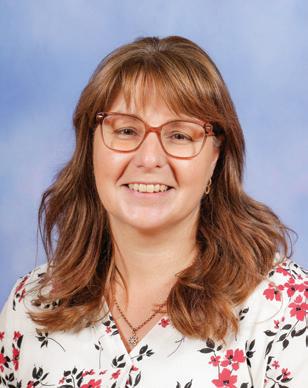
Rebekah Bonnett Head of VCE Studies
rbonnett @hamiltoncollege. vic.edu.au

Kristen Waldron Deputy Principal Wellbeing kwaldron @hamiltoncollege. vic.edu.au
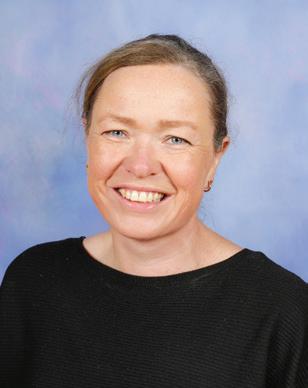
Nerrida Prosser Head of Berry nprosser @hamiltoncollege. vic.edu.au

Anna Robertson Director of Learning and Teaching arobertson @hamiltoncollege. vic.edu.au
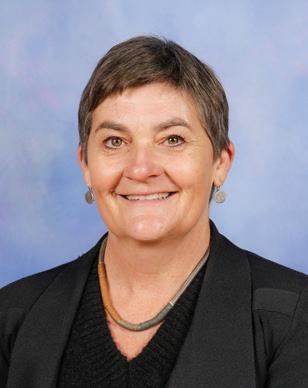
Belinda Nichols Head of Learmonth
bnichols @hamiltoncollege. vic.edu.au
Head of House
Head of Senior Years
Head of Middle Years
Deputy Principal Teaching and Learning Principal Deputy Principal Wellbeing
Head of Junior School
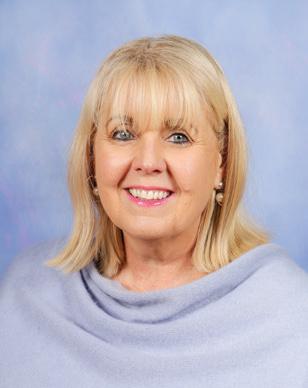
Helen Reiher Head of Senior Years / Careers hreiher @hamiltoncollege. vic.edu.au
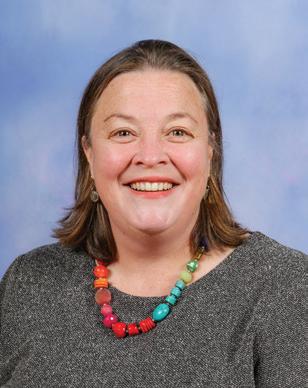
Sylvia McMullen Head of Laidlaw
smcmullen @hamiltoncollege. vic.edu.au

Ben Hawthorne Head of Middle Years bhawthorne @hamiltoncollege. vic.edu.au
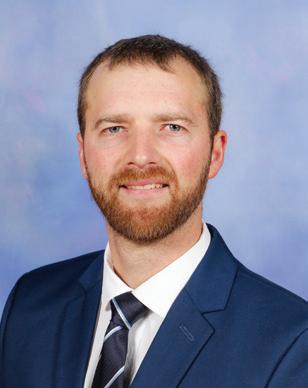
Heinrich Burmeister Head of Young HBurmeister @hamiltoncollege. vic.edu.au

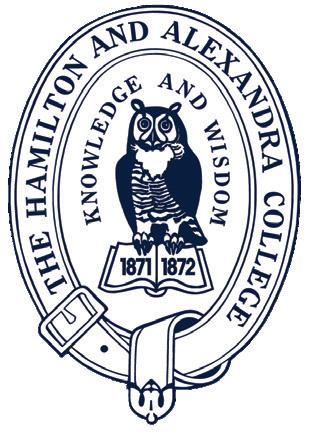
The formation of the Hamilton and Western District College (boys) in 1871 and the opening of both the College and Alexandra College (girls) the following year mark pivotal moments in the history of schooling in western Victoria.
Both schools enjoyed periods where they flourished but also periods of difficulty as economic conditions declined and ownership changed.
For Alexandra College, 1956 was the year the council looked boldly to the future,
There are four Houses to which students are allocated.
Berry House (Red) incorporated Cussen House in 1979, when Houses became co educational. The Cussen Trophy is presented to the House member(s) who contribute(s) most during the year. The House motto is “Impero parendo.” Berry was originally established in 1955 and named after the Principal of Alexandra College at that time, Miss F.W. Berry. Cussen was established in 1937, named after Sir Leo Cussen, a former member of the legal profession and a distinguished old Hamilton Collegian.
Laidlaw House (Blue) incorporated Clifton House in 1979. The Clifton Trophy is its
O God, The Rock of Ages Who with Thine own hath been, Be near to hear and answer Though to our eyes unseen.
We come to Thee for mercy, For guidance, grace and peace; Thou hast been with our fathers, Thy love can never cease.
God bless us in our studies, Go with us in our play; Protect us thro’ night’s darkness And through each changeful day.
Be near all friends who love us, Those here and far away, In Thine Almighty keeping Both we are safe and they.
God bless us in our school days And when school life is gone. Show us the path Thou choosest For us to labour on.
God bless the school we honour, All who its fame maintain; Guide us throughout life’s journey Until with Thee we reign.
purchasing the Myrniong homestead and surrounding grounds on the outskirts of Hamilton. Alexandra College had out grown its original site and the purchase allowed for continued growth and success as a day and boarding school.
In 1961, the Hamilton and Western District College and Alexandra College were combined and became the first Presbyterian co-educational day and boarding school in Australia. Since then, the combined school has continued to grow and prosper.
Myrniong became home to Hamilton College Junior School and Boarding House in 1977.
In 2001, the College changed its name to ‘The Hamilton and Alexandra College’ to embrace the history of both original schools.
In 2023, the school purchased Mirranatwa, a property that will become an outdoor learning facility at the foothills of the Grampians (Gariwerd) National Park.
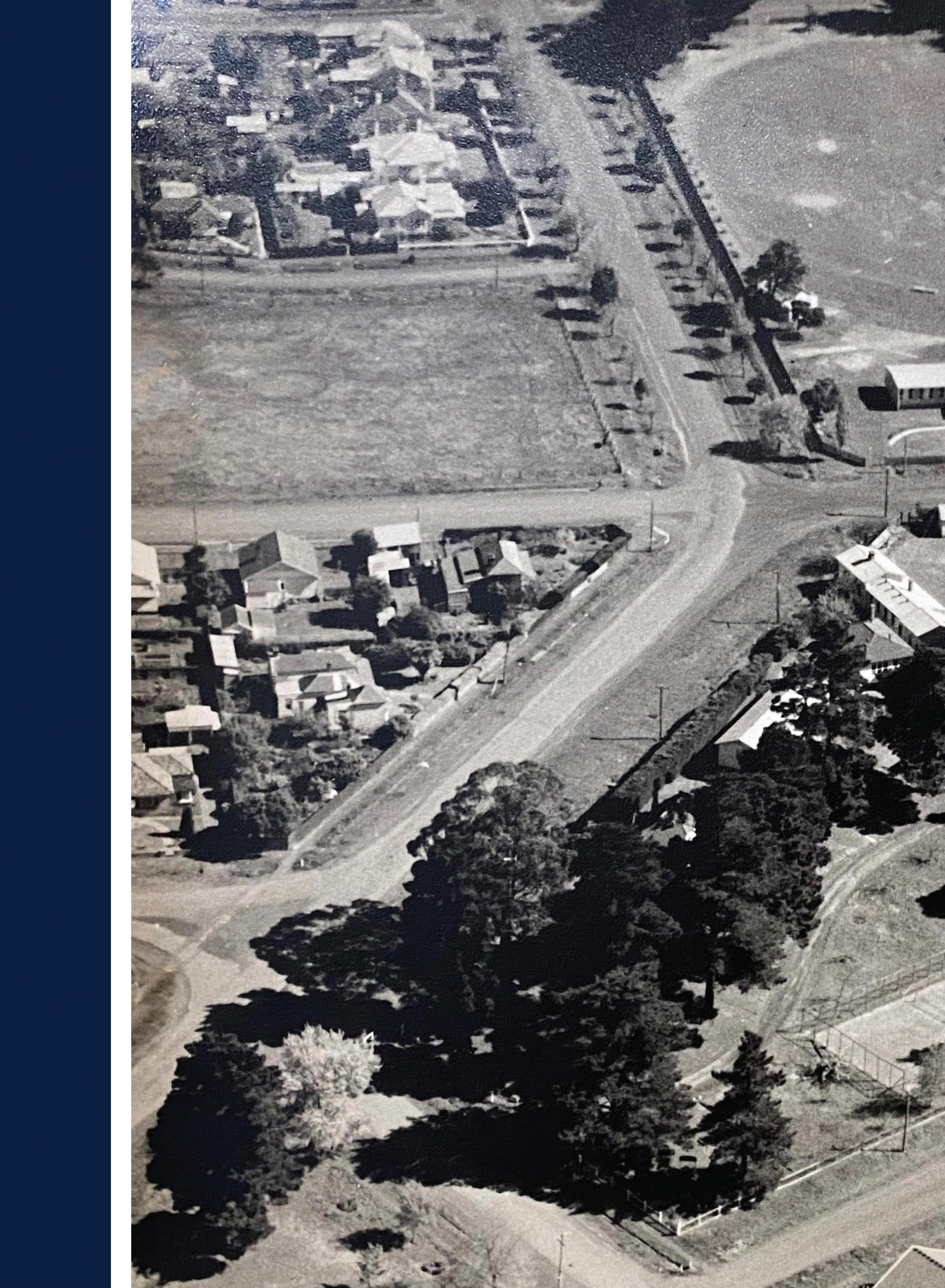
award for service to the House during the year. The House motto is “Non nobis solum.” Laidlaw was established in 1937 and was named in honour of the Laidlaw family and in particular Mr. T.H. Laidlaw, for many years Chairman of Council of the Boys’ College. “Clifton” was the home of the Simpson family; Mrs Simpson was the first President of the Old Alexandra Collegians’ Association. Clifton House was established in 1927.
Learmonth House (Gold) incorporated Hearn House in 1979. The Hearn Trophy is awarded for service to Learmonth House each year. The House motto is “Labore et honore.” Learmonth dates from 1939 and was named in honour of Mr Stanley Learmonth, foundation scholar and later
Director of the Boys’ College. Established in 1927, Hearn was named after Miss Henrietta Hearn, Headmistress of Alexandra College in the 1880s.
Young House (Green) incorporated Waters House in 1979. The Waters Trophy reflects the contribution to the House by a member or members each year.
The House motto is “Nil magnum nisi bonum.” Young was founded in 1939 and was named in honour of a family which had connections with Alexandra College throughout its separate existence (and as a co-educational school), while Waters was established in 1972 and named in honour of Mr and Mrs Waters, Principal and Headmistress at the time of amalgamation.
We are an ambitious academic school that draws on our strong traditions to prepare students for confident futures.

We nurture locally, so that students can excel globally.
Our values in action encourage us to:
• Believe in ourselves and the goodness of others
• Value effort as well as reward
• Show kindness to all
• Give respect and seek to earn it
• Engage broadly and whole-heartedly with the world
We approach each day with a positive outlook, believing in the potential for good in every situation.
We extend kindness and understanding to others, acknowledging and empathising with their experiences and emotions.
We appreciate the abundance in our lives and recognise the value in every moment and every person we encounter.
We are understanding and considerate of everyone’s rights and the environment in which we live, work and play.
We are brave when faced with challenges and accept them knowing that challenge is the path to growth.
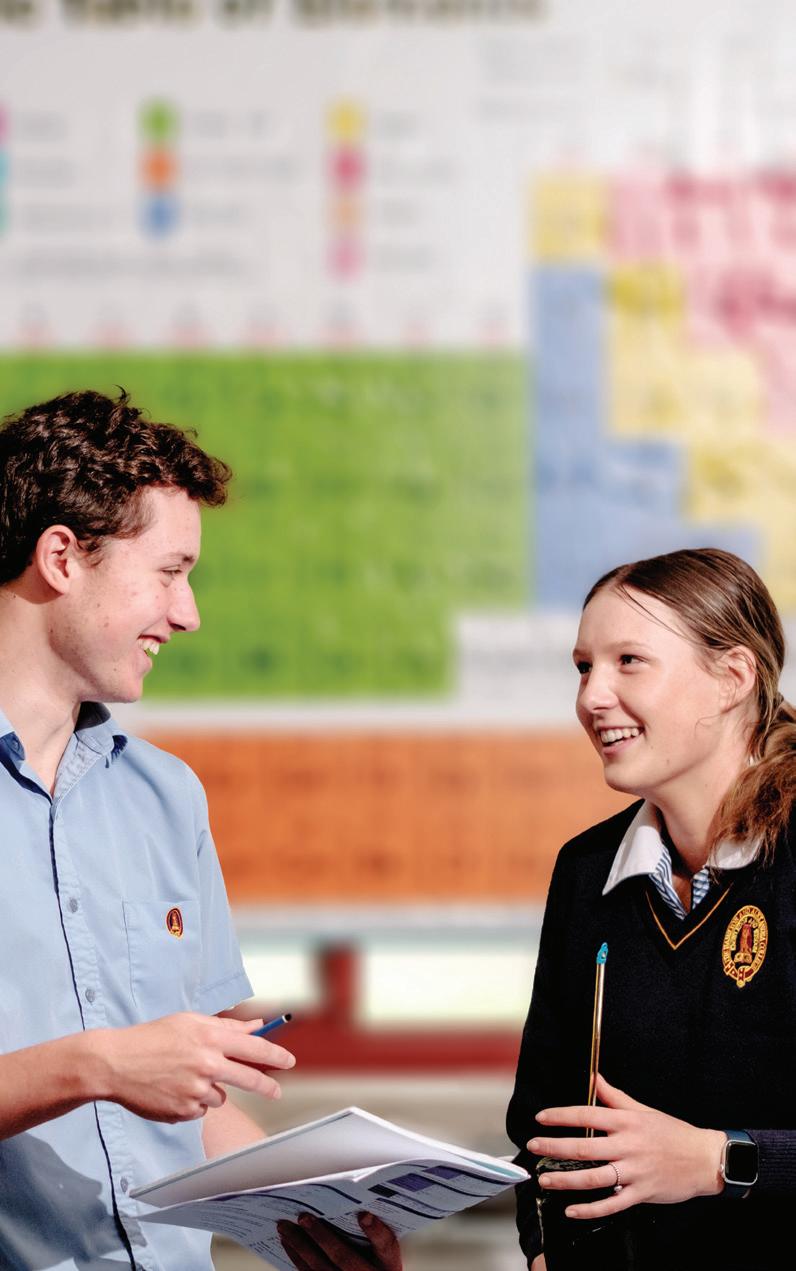
Transition into Year 7 is a pivotal moment in every child’s learning journey as they stamp a new page in their P-12 educational passport. Similarly, creating ‘confident futures’ demands agility, adaptability and innovation. The Engage program gently introduces Year 7 students to a broader secondary curriculum structure.
Engage
The engage introductory program supports the transition from Primary into the Secondary School environment and consolidates routines for effective learning whilst building character and knowledge.
Beyond the core curriculum, students can explore a new language, and the creative and performing arts, engage in an innovative digital technology program and build and apply new skills in our outdoor education program.
At The Hamilton and Alexandra College our learning community encourages academic excellence and engagement of the whole person.
We value curiosity, creativity and collaboration.
Our teachers employ best practice and work together to inspire our students and foster independent and active learning both inside and outside of the classroom.
College students develop skills and knowledge that prepares them for a
Learning should be transformational; it should be continuous and develop the whole person.
Each student’s learning program is unique and it is designed to give them agency and the opportunity to direct their own learning pathway.
As a student moves through the school, the College curriculum is designed to enable each student to engage in foundational literacies, explore a broad range of subject interests and emerge from the VCE with the skills, knowledge and character that will equip them for the future.
Our connected community at The Hamilton and Alexandra College ensures students are empowered to achieve their best. Students have three entry points in our program:
Year 7
Year 8 and 9
Year 10-12
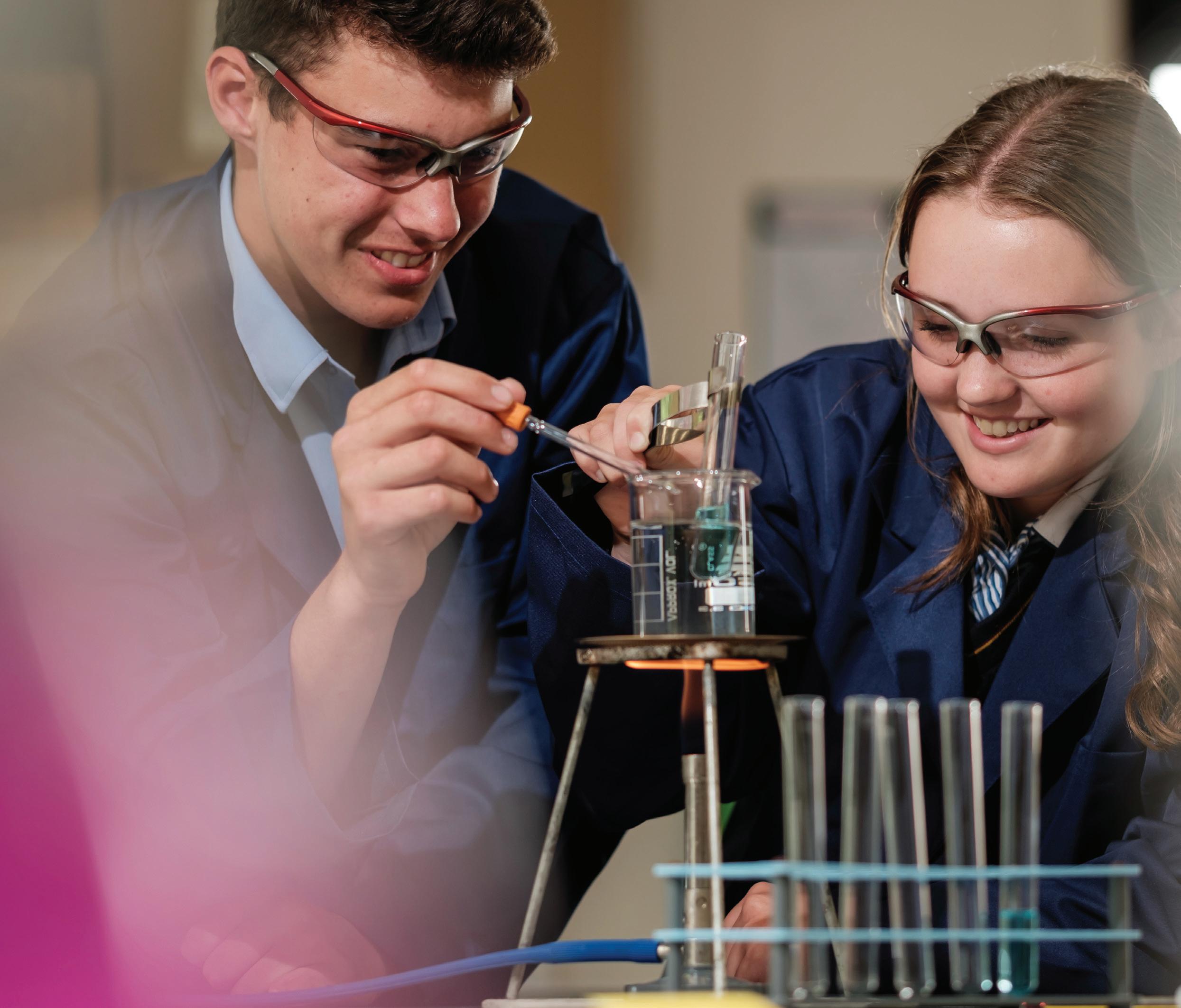
Music
The Concert Band program provides an opportunity to learn new brass, woodwind, string or percussion instruments.
Learning a musical instrument improves memory and brain development and assists with management and social skills while providing students with achievement and confidence.
Explore
Designed to assist Year 8 and 9 students to consolidate learning whilst having more choice and freedom to investigate a range of learning areas that build character and knowledge.
The Explore program offers breadth, ignites passion, and develops skills as students explore new subjects.
future world of work and equips them to be exemplary global citizens with strong personal values.
In the Emerge program, we invite you to partner with us as we work together, student, parent and teacher on an exciting final three years of secondary schooling.
Year 10s are embarking on their VCE journey and are encouraged to stretch themselves and develop positive study habits.
Year 11s are fully immersed in VCE and
Year 8 students continue with LOTE and choose four electives
Year 9 students choose 6 electives.
Students in Year 8 must choose at least one visual arts, one performing arts and one design technology and digital technologies subject in their program over the next two years.
Explore offers a blend of practical, vocation orientated pathway subjects, as well as the opportunity to explore the Visual and Performing Arts, Technology, Sport and Outdoor Education, Agriculture, Equine, Literature and Business Management.
Ben Hawthorne Head of Middle Years
many of them are fast tracking a subject.
Year 12s are on the brink of exciting new futures, whilst studying hard to be the very best they can be.
Our staff work individually with Year 12s on university and pathway opportunities for next year and beyond.
Helen Reiher Head of Senior Years
We run a 10-day cycle, with 6 x 50-minute periods (approximately). per day
Students will be advised of special timetable arrangments ahead of time for special occassions and school photos. Formal student uniform is required for these occasions.
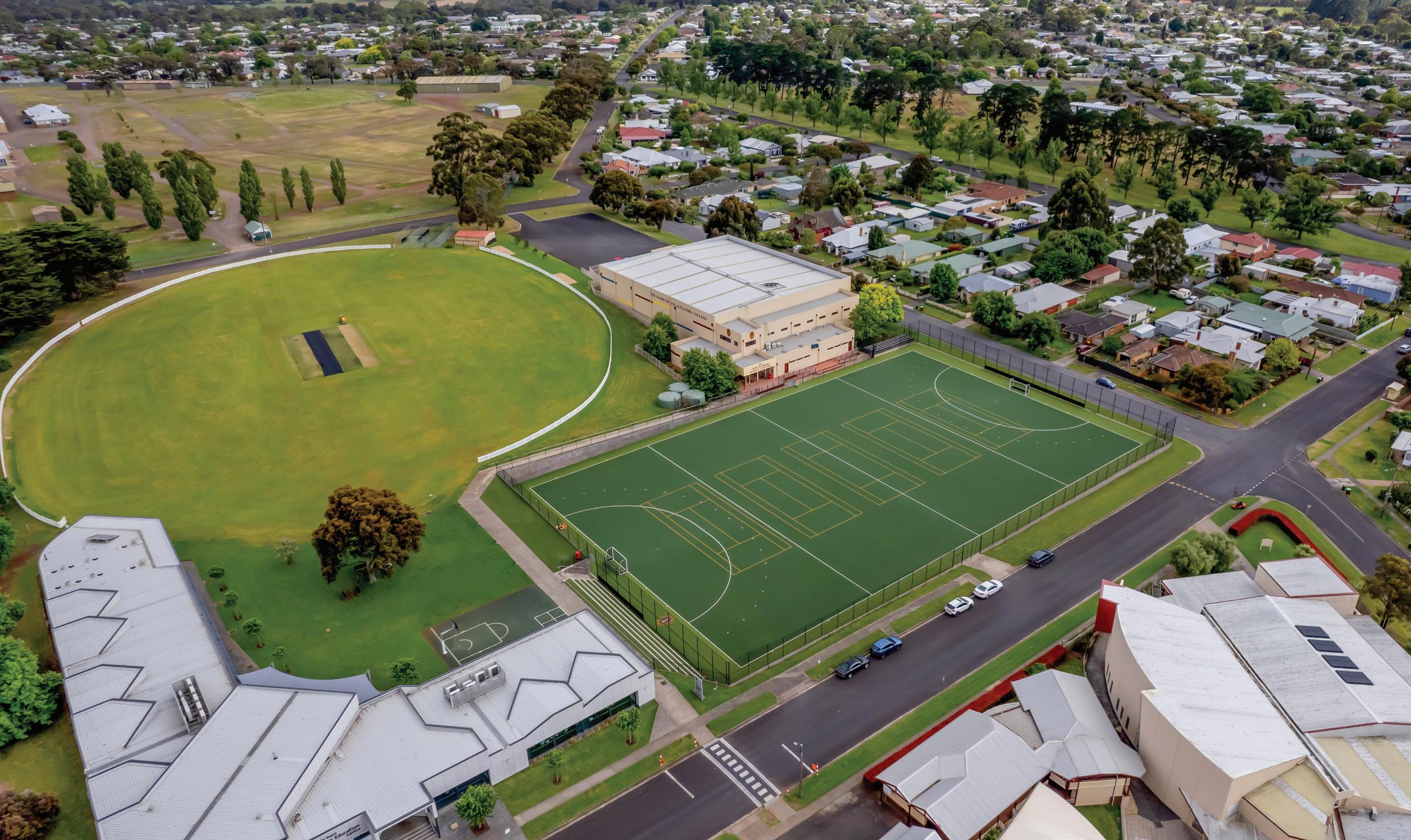
• The Locker Areas are to be kept clean and locks on lockers.
• Students are not permitted to use their mobile phone between the hours of 8:30am-3:30pm. Please refer to the mobile phone policy in this document.
• Pack your school bag with homework books during the day.
• Students are not permitted to wrestle or ‘be physical’ at any times. If students do not follow this rule, they may receive an OnTrak.
• You need to wait quietly for your next teacher.
• If you are changing classroom, you need to wait quietly outside.
• If you are in the same classroom, you need to sit quietly and use this time to record homework in your Record Book.
• Get books ready for two lessons between main breaks.
• Be on time to class.
• Quietly enter the classroom and sit down promptly (unless instructed to remain standing).
• Have your books open and ready to start the lesson quickly.
• Reduce unnecessary talking, as this distracts you and others.
• Only one person is to talk at a time.
• Show respect for the ideas of students and wait your turn to speak.
• Before the end of the lesson, accurately record all homework tasks in your Record Book.
• Pay attention to instructions and stay on task.
• Students are not allowed to leave the classroom unless for urgent reasons, in which case the student must be accompanied.
• You need to be prepared and organised.
• You are responsible for your own learning.
• Show initiative.
• Set your goals and have expectations high.
• Work independently when needed and cooperate with others through teamwork.
• Develop good study habits.
• You are expected to complete adequate homework each night based on your year level.
• Make sure you take the books and sheets you need home.
• Establish a regular homework routine at home. You require discipline and persistence.
• Learn with purpose. Keep in mind why you are at school and reflect on shortand medium-term goals about what you want to achieve.
• Ask relevant questions.
• Help your peers with their learning.
• Always wear your uniform well.


Our College is proud of its pastoral care program and recognises its importance in promoting students’ emotional wellbeing, academic success, personal development and social competence. Our aim is to create a positive and supportive school environment where students can thrive and to establish a strong partnership between the school, students and parents.
Our wellbeing team plays a critical role in focusing on the emotional and social wellbeing of our students. We know our students face a range of challenges today, from academic pressure to social media and the pressures of social life. As a school community, we are committed to supporting our students through these challenges and ensuring that they have the resources they need to thrive.
One of the key components of our pastoral care program is our mentor program and House system. These programs pair each student with a dedicated mentor and Head of House who is there to offer support and guidance throughout their educational journey. Our mentors know their students well and closely track their wellbeing. Our mentors also work closely with our full-time counsellor. Students meet with their mentor four times a week for pastoral support and academic guidance. Mentors also monitor students’ co-curricular commitments to ensure they are balancing their academic program and external commitments.
In addition to our mentors, we also rely on our student leaders to help support their peers. Our Year 12s, Middle Years Captains and Student Representative Council leaders play a critical role in creating a positive and inclusive school culture. By modelling positive behaviours and engaging in activities that promote empathy and understanding, they help to create a welcoming and supportive environment for all students.
Kristen Waldron Deputy Principal WellbeingOur uniform identifies students as an important part of a community and ensures a positive image in line with our College values and our place as a academic school. The uniform must be worn at all times and all uniform items can be sourced through the College Uniform Shop, in the main Tower Building. A full list of uniform items can be found on the College website.
Uniform shop opening hours:
Tuesday: 8.30am – 4.30pm
Thursday: 12.00pm – 4:00pm
Additional hours in January leading into the start of the term.
1 Chaucer Street, Hamilton
Phone: (03) 5571 1300
Online: Order uniform items at https://tha.ac/uniform
Each student at The Hamilton and Alexandra College is individually responsible for ensuring that they are dressed in the College uniform and neatly presented at all times during every school day. Students will be advised when specific uniforms are required. The uniform shop is open during school hours for uniform items.
Students must wear the correct school uniform when travelling to and from school.
Please ensure that all clothing items are clearly named.
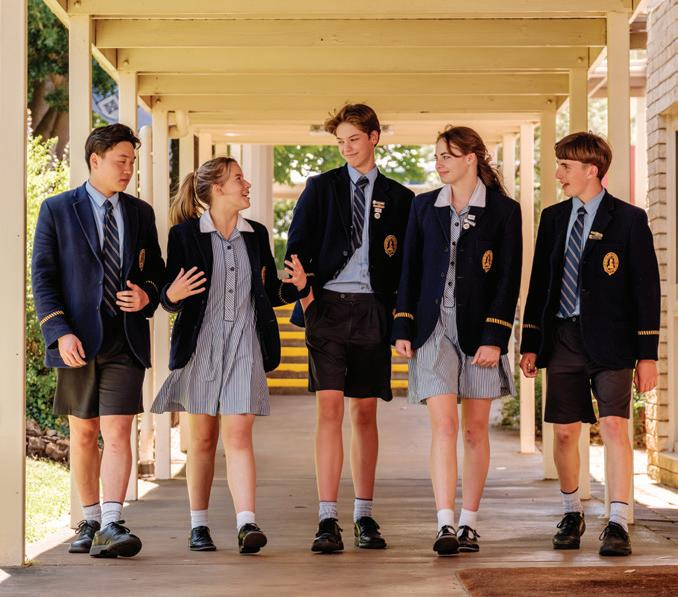
Academic Uniform Summer (Term 1 and 4)
Option A
• College summer dress. Dress length:
- The bottom of the hem must touch the knee.
- Plain white socks - mid calf.
• Navy College jumper.
- Year 12 students may wear the approved Year 12 jumper
• Polished black leather school shoes.
• College blazer as stipulated.
- The blazer is worn as the outer garment with Summer and Winter uniforms to and from school.
- Badges worn on the blazer are those awarded by the School.
• College straw hat.
- Regulation hats are to be worn to and from school and at recess and lunchtimes.
Option B
• Navy school shorts.
• Socks
- Boys: Blue fleck.
- Girls: white socks.
• Belt (optional) – plain buckle.
• Short-sleeve school shirt with logo.
- The shirt must not be visible below the jumper.
- The summer shirt is designed to be worn with or without the school tie. If students choose to wear the tie, the blazer must be worn as the outer garment and shirt tucked in at all times.
• Navy College jumper.
- Year 12 students may wear the approved Year 12 jumper.
• Polished black leather school shoes.
• College blazer as stipulated.
- The blazer is worn as the outer garment to and from school.
- Badges worn on the blazer are those awarded by the School.
• Navy College broad brim hat.
- Hats are to be worn to and from school and at recess and lunchtimes.

Academic Uniform Winter (Term 2 and 3)
Option A
• College winter skirt - length:
- The bottom of the hem must be no higher than mid calf
• Plain navy socks or tights.
• Mid blue long sleeved shirt
- shirts are to be tucked in.
• College tie
• Navy College jumper.
- Year 12 students may wear the approved Year 12 jumper.
• Polished black leather school shoes.
• College blazer as stipulated:
- The blazer is worn as the outer garment to and from school, at assemblies and for formal occasions.
- Badges worn on the blazer are those awarded by the School.
• College scarf as stipulated:
- Uniform item in term 2 and 3 only
- Not to be worn to assemblies or formal occasions.
• College pant
- Boys: grey.
- Girls: navy.
• Socks
- Boys: grey.
- Girls: navy.
• Belt (optional) – plain buckle.
• Mid blue long sleeved shirt
- shirts are to be tucked in.
• College tie
• Navy College jumper.
- Year 12 students may wear the approved Year 12 jumper.
• Polished black leather school shoes.
• College blazer as stipulated:
- The blazer is worn as the outer garment to and from school, at assemblies and for formal occasions.
- Badges worn on the blazer are those awarded by the School.
• College scarf as stipulated:
- Uniform item in term 2 and 3 only
- Not to be worn to assemblies or formal occasions.
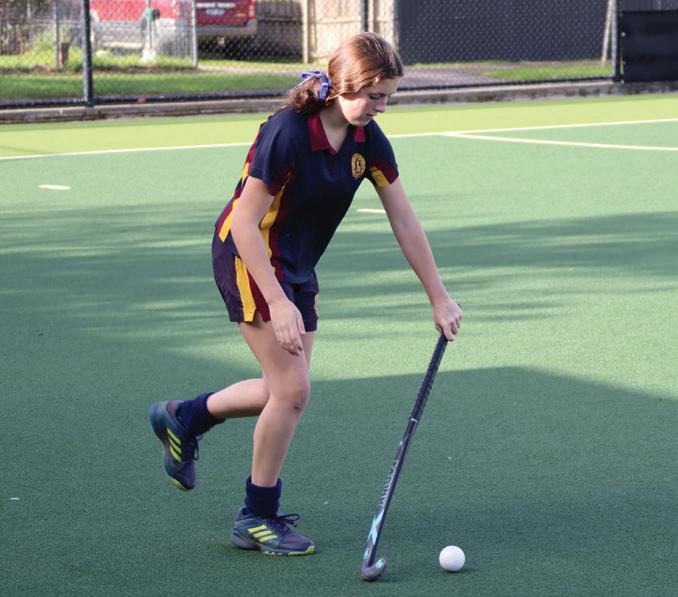
• College polo shirt.
• College sports shorts.
• College tracksuit pants.
• College hat.
• College sports jacket.
• Black OR White Socks.
• Lace up sport shoes are to be worn for PE lessons and sports activities.
- They are not to be worn with either the Summer or Winter Uniform.
No skate or street shoes are to be worn.

• House polo shirt
- Colour assigned
• College sports jacket
• College sport shorts OR College tracksuit Pants
• Black OR White Socks
• Lace up sport shoes are to be worn for PE lessons and sports activities.
- They are not to be worn with either the Summer or Winter Uniform.
No skate or street shoes are to be worn.

Senior students who have been awarded badges are to wear these with pride on the lapel of their blazer.
Colours presented to students are to be sewn on their blazer pockets within an appropriate time frame.
Prefect and Captain Ties are to be worn with the top button secured at all times.

Students attending formal events such as Speech Day, or representing the College at RSL ANZAC Day and Remembrance Day Services are to wear the following uniform: College blazer and College coloured hair ribbons - Navy or white
Our students learn invaluable life skills through participating in age-appropriate outdoor education experiences during their time at the College. Our camps are a significant part of our school culture – a time for students to bond together, step outside their comfort zones, test resilience and learn new skills.

A four-day canoeing journey, staying in tent accommodation.

The Central Australia Experience is an optional eight-day adventure through the centre of Australia at the start of Term 3. This is a challenging and rewarding program of cultural immersion, service opportunities, and the chance to experience the spectacular Central Australian landscape.
• Riding lessons (horsemanship)
• Clinics
• Events
This unique offering encourages participation, effort, good sportsmanship and equestrian skills. Students can develop their skills in an encouraging and nurturing environment with individual attention and guidance by qualified instructors.

Mittagundi – Expedition and base camp in the Victorian High Country, involving snow camping, skiing, pioneer skills and outdoor challenges.

This three day retreat in a tertiary environment is a great team building, goal setting and preparation time for the year ahead. The retreat gives Year 12s exposure to a university setting.

Programs includes Grampians Retreat, Melbourne and Vietnam. This is a full year of experiences that encourages students to step outside of their comfort zones in many different situations and environments.
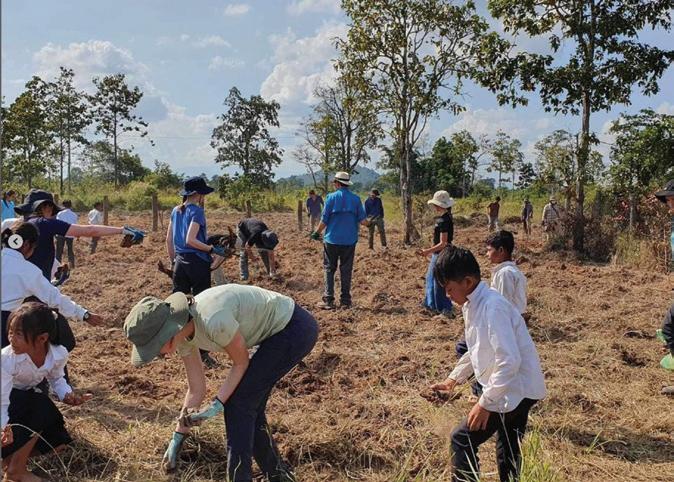
Students have the opportunity to participate in diverse trips that encompass a wide range of experiences. These trips may include immersive ventures, engaging international platforms or sporting adventures. These experiences aim to provide students with valuable opportunities, broadening their horizons.
We hold regular clinics run by guest instructors.
We host a combination of the annual Western District Inter-School Equestrian Championships, Inter-Primary School Games Day, and the Inter-House Jumping and Dressage events.
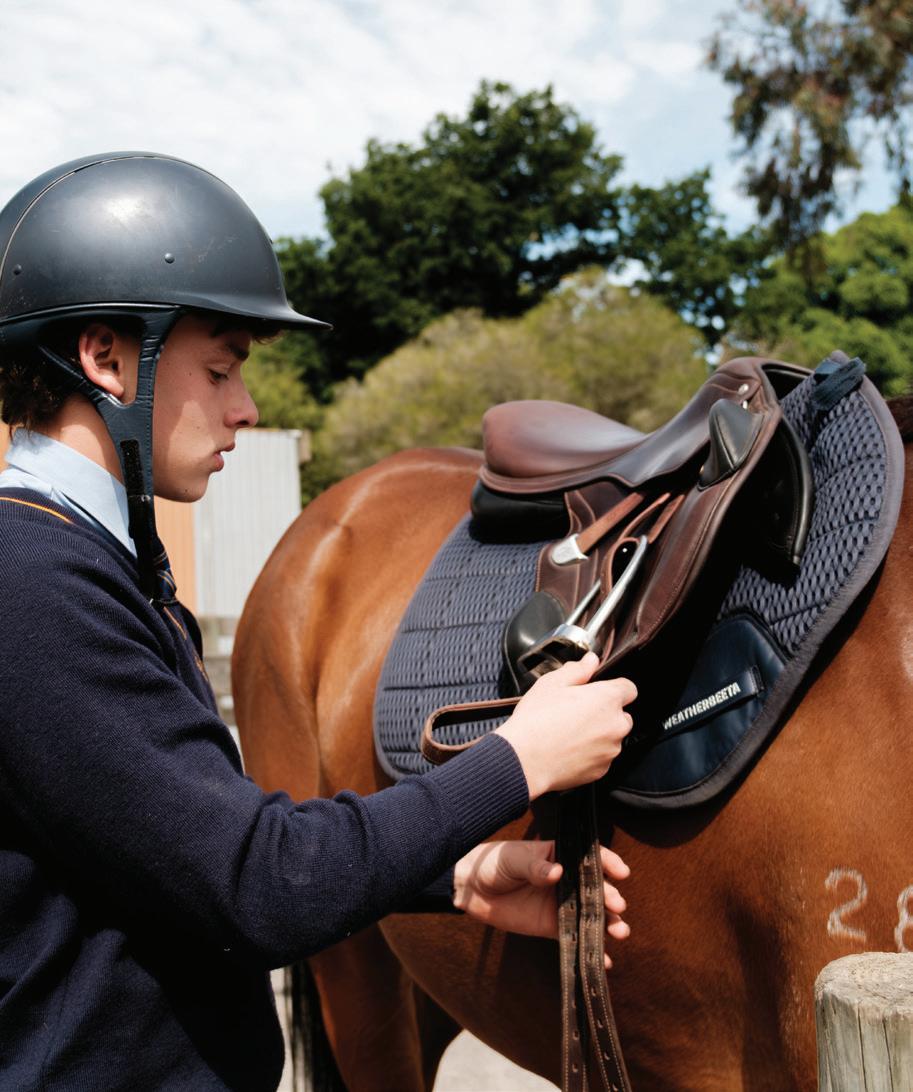
Individual and team sport
Our students can choose from a wide range of sports at various levels and all students participate in sporting activities at least once a week. Students with a talent or passion in a particular sport have the opportunity to receive specialist training and competition.
House system - all College students are allocated to a House, which provides an important connection for students in different year levels. Our House system includes four Houses: Berry (red), Laidlaw (blue), Learmonth (yellow) and Young (green). Students have the opportunity to participate in a range of House sports at lunchtimes and activities are open to students in all year levels. House activities are a great opportunity for students to make new friends both within their year level and across the College.
Summer sports (Term 4 and 1)
• Athletics
• Boys Cricket – U14, U16, Seniors, (through the College Cricket Club),
• Girls Cricket – U13, U16, Seniors, (through the College Cricket Club)
• Rowing
• Swimming
• Tennis
• Netball
Winter sports (Term 2 and 3)
• Australian Rules Football (Inter-school)
• Senior Boys Australian Rules Football –U13, U16, First 18
• Senior Girls Australian Rules Football –Year 7/8/9, Year 10/11/12
• Netball (Schoolgirls)
• Soccer
All year
• Badminton
• Basketball
• Clay Target Shooting
• Equestrian
• Hockey
• Table Tennis

Classroom music is a core subject at Year 7 and becomes an elective subject in Years 8 to 12.
Students may learn a musical instrument on a rotational, withdrawal basis during the school day from one of the school’s instrumental music teachers. Private fees are charged for this service.
Students may play in the Stage Band, Concert Band, Orchestra and/or String Ensemble. They may also sing in the school choirs.
Musical instruments can be stored safely in The Kantor Family Music and Performing Arts Centre Building.
An integral part of the College house program sports days are held throughout the year in Swimming, Athletics, CrossCountry Running and Old Fashioned Sports. Students also have the other opportunities to represent their House in five House sport afternoons held each year; including Golf, Volleyball, Rock Climbing, Football, Netball, Hockey, Soccer, Badminton, Tennis, Table Tennis, Cricket, Lawn Bowls, Touch Rugby, Softball, Basketball and Dodgeball. Students wear their House colours.
College students represent the school in two sporting associations.
Locally, we compete as part of the Glenelg Division (GD) against other Southern Grampians and Glenelg Shire schools. Our GD competitions annually include: Swimming, Athletics, Cross Country, Golf, Australian Rules Football, Triathlon and Shooting.
We are also a long term member of the Independent Country Co-Educational Schools (ICCES) Association. The ICCES Association is made up of likeminded independent schools across regional Victoria to give our students opportunities to compete at the best sporting venues in Melbourne, including the Melbourne Sports and Aquatic Centre for Swimming and Lakeside Stadium for Athletics. Our ICCES competitions annually include: Swimming, Athletics, Cross-Country Running, Basketball, Netball, Soccer, Cricket and Volleyball.
Monday
Tuesday
Ensembles
Lunch: Female Voice Choir
After School: Kantor String Septet
Before School: Chamber Orchestra
Lunch: Concert Band
Senior String Quartet
Thursday Lunch: Male Voice Choir
Friday Lunch: Festival Voices
Individual lessons avaliable in:
• Piano
• Oboe
• Voice
• Drum Kit
• Violin
• Flute
• Trumpet
• Percussion
• Viola
• Clarinet
• Trombone
• Theory
• Cello
• Saxophone Alto/Tenor
• French Horn
• Classical Guitar
• Double Bass
• Bassoon
• Tuba/ Euphonium
• Contemporary Guitar
Timetable subject to change, please contact music@hamiltoncollege.vic.edu.au for musical enrolment information
Absence and Lateness

Daily Absences: BEFORE 9.15am
Parents are able to notify the College of student absences through the Parent Access Module (PAM) up until 9:15am on the day of the absence.
When you log into PAM you will see the below Parent Notified Absences button. Click on the button and follow prompts to complete the notification. AFTER 9.15am
If you are notifying an absence after 9:15am or are unable to access PAM please notify the College via the following ways: Email: absence@hamiltoncollege.vic.edu.au
Phone Senior: 03 5572 1355
Phone Junior: 03 5571 1066
If you are notifying the College via email please use the generic absence email address only.
Other Absences: The procedure is listed in the student Record Book. Absence permission for special reasons is given by the Principal, we request that you write a letter to the Principal. Please email this letter to assistant Mrs Linda Archer: larcher@hamiltoncollege.vic.edu.au
If students are late they must report to Reception and if they leave the grounds they must also first report to Reception.
Academic Assistance
The Hamilton and Alexandra College offers all Senior students the opportunity to study in the Winifred Berry Library from Monday – Thursday from 3.45 – 5.30pm during term time. These study sessions are supervised and teachers are available for individual and group support. Students can use the library for a full academic assistance session or attend for a short time. Many students who live out of town find academic assistance very helpful in prioritising study in between travel and co-curricular commitments. Students sign in and out of the library as a record of their attendance.
Assemblies
Full school assemblies are held each Wednesday morning at 8.50 am. Full uniform is required (see uniform under General Information page 7). The Assembly consists of a hymn, prayer or reading and a review of past events, reports and comments on current happenings and things to come. There are occasional guest speakers and musical items. The students stand when staff leave at the conclusion of the Assembly.
Academic awards are presented at the Scholars’ Assembly at the start of the year for Academic Achievement and Effort. Non-academic awards are presented to students whose achievement or contribution to an co-curricular activity warrants acknowledgment.
College Boarding offers twin-share accommodation. Casual boarding is available on request. Homework is supervised and students receive academic assistance from members of the teaching staff. Please contact The Registrar, Mrs Susie Holcombe, for further information: holcombes@hamiltoncollege.vic.edu.au
The Hamilton and Alexandra College works with Campion Education in Warrnambool to provide books for students. Parents are required to login to the Campion website, create an account, click on the school name and type in a code for the resource list section. The year level, items and delivery method is then selected and payment finalised online. More information about booklists and details of how to order will be provided in Term 4. For further information families may contact the Business Office.
A comprehensive policy is listed in the Record Book. All students at The Hamilton and Alexandra College have the right to feel comfortable and safe. We have adopted the Shared Responsibility Program which aims to teach student positive communication skills and give students strategies to cope with a range of social situations.
Bus services operate to Warrnambool, Woorndoo, Portland and Casterton. Permission is needed for students to use the bus service at any time. See Reception for a bus pass reception@hamiltoncollege.vic.edu.au
The Government buses are coordinated through Baimbridge College. For general bus enquiries please contact the Registrar, Mrs Susie Holcombe. For any behaviour management issues please contact Head of Middle Years, Mr Ben Hawthorne.
The Department of Education buses depart from Baimbridge College after school. Two buses leave from myPEC to transport our students to Baimbridge at approximately 3:35 pm.
If students miss their bus they should report to Reception and ask to ring home to make alternative arrangements.
The school rules are listed in the Record Book. A OnTrak and incident points system operates for misdemeanours.
These are posted in all rooms. Fire and lock down drills are held each term. The school Camps and Expeditions committee requires organisers to consider evacuation procedures.
Our students are prepared for the examinations that are held at the end of each semester. We encourage the students to focus not only on results, but also the examination process. We encourage students to thoroughly revise their notes and past tests. Teachers deliver revision lessons, which allow core topics and learning to be reviewed and reinforced. During the sitting of examinations, we encourage students to develop the following techniques:
• Arrive at the examination room in good time, with the approved materials and equipment.
• Read and follow the instructions on the examination paper very carefully.
• Read the paper thoroughly during the allocated reading time.
• Read the questions carefully to ensure that your answers are thorough.
• Be aware of the timing of each section of the exam and use all the time available to you.
The examinations are not only an opportunity for students to demonstrate their learning but to also gain practise performing within a limited timeframe in preparation for the Senior Years and beyond. We see this as an essential learning opportunity for our students.
All students must accurately record daily homework. The homework timetable is recorded in the front of the Record Book. Every effort is made to set regular but worthwhile homework tasks. The level of study required increases as students move through Senior school into VCE. Where a student has worked beyond the allotted time and is becoming overtired or frustrated, it is appropriate for parents to use their judgement regarding completion. A note in the Record Book will explain to the teacher why the homework was unable to be completed.
There are four Houses at College: Berry, Laidlaw, Learmonth and Young. All students in the school are allocated to one of these Houses. Year 7 to 12 students within each House are divided into Mentor Groups.
Minor accidents and illness are attended to by the School Nurse. Staff members have undertaken First Aid Certificate courses. It is important that the school is always in possession of current medical information. Parents are notified to complete Operoo annually and update Operoo if any changes to your child’s medical information. The School Nurses are available five days per week.
Library
Hours and borrowing procedures are listed in the student Record Book but students may borrow before school, after school and at lunchtime. Students also use the library for research under the supervision of their subject teachers and they enjoy one guided reading period per cycle with their English teachers. There is no limit to the number of resources that may be borrowed if no books are overdue.
Students have individual lockers in the locker rooms. Lockers should be kept locked during the day and a master key is available in emergencies. If students have money or phones at school, these items must be stored in their lockers and phones on silent. A combination lock is provided per student.
Please ensure all uniform garments and stationery are named clearly. There is a pound in the Tower Building (outside the uniform shop), myPEC, Sports Centre and Year 12 Common Room.
We stress the importance of good manners. Manners are important to learn and it means acting in a way that is respectful and socially acceptable. Manners refers to how you behave and what you say to others. It means being polite and behaviour that is respectful and considerate of other people. Our staff are conscious of modelling good manners.
Students need to make sure they develop good manners, in fact most of our students are very well mannered all the time.
Basic manners and etiquette:
• Saying please, thank you, excuse me, you’re welcome.
• Not interrupting when someone is speaking.
• Not swearing and being aware of your body language.
• Raising your hand in class.
• Holding the door for the other person if possible.
• Not commenting on someone’s physical appearance.
• Waiting your turn.
Finally, having good manners can improve relationships and manners convey respect for the other person. Respect is one of our key values at the College.
Newsletter
The newsletter is distributed every Thursday by email. Newsletter items of queries in relation to the newsletter can be emailed to: reception@hamiltoncollege.vic.edu.au
Organisation
Being an organised student can save you time in the long run. Here are some helpful suggestions.
• Back up your work - Safeguard your own work by always making copies of important files to your own OneDrive.
• Make a term plan - A useful way to get a visual overview of your commitments and to plan your time is to write yourself a term plan.
• Write a weekly summary - Schedule your study times in advance by writing yourself a weekly timetable. This will help you to allocate specific time for studying, sport, free time.
• Get enough sleep and have good bedtime routines. It is important to be well rested and alert. Pack bags the night before to allow a smooth transition in the morning.
Parent / Student / Teacher Interviews
These are scheduled throughout the year. Bookings with your child’s teachers are essential and can be made online through the SIMON parent portal (PAM). Please refer to the newsletter information at the end of each term. Parents and students are encouraged to attend.
Parents’ and Friends’ Association
The Parents’ and Friends’ hold regular meetings at least once per term. In addition, Year Level Parents’ Nights, social days and special fund-raising events are held. The Parents’ and Friends’ contribute most significantly to the provision of curriculum resources in the school. If you would like to contribute to the active P and F Association, please email paf@hamiltoncollege.vic.edu.au
Plagiarism
Plagiarism is the use of and representation of other people’s words and ideas, in whole or in part, as the student’s own work. This definition applies to words or ideas taken without proper acknowledgement from any published source, such as a collection of literary essays, from any site on the internet, from any essays written by other students and any other electronic or print source not mentioned.
Procedure: When a teacher has reason to believe that plagiarism has occurred, the following steps will be taken:
• The teacher will investigate the matter with the student(s) involved.
• The teacher may consult with other staff members to confirm an act of plagiarism
• If the student denies the charge of plagiarism, a meeting between teacher/ student/Head of Faculty/Head of House may be convened to investigate the charge of plagiarism.
• Depending on level of plagiarism (if confirmed), the teacher will assign appropriate consequences. This may involve completing an alternative task, having grades reduced, receiving zero for the task, detention(s) or some other requirement.
• At VCE levels the Head of VCE will be consulted regarding VCAA processes.
A student who wishes to appeal against the decision must do so to the Director of Learning and Teaching within five (5) days of being informed that a penalty will be applied.
The school magazine, ‘The Collandrian’ is produced at the end of each year. It provides a comprehensive record of the school year.
The ‘Ivy and the Tower’ is also published by the school and distributed to all school families and all Old Collegians.
Continuous reports in each subject are online and formal reports are issued at the end of each semester.
Services are combined with Senior Campus Assemblies. Major Services for the year, Easter (end of Term 1), Anzac (Term 2) and Christmas (end of Term 4). Easter and Christmas services are held in St Andrew’s Presbyterian Church.
A formal occasion for the whole school community to mark the achievements of the school. Held in late October in The Kantor Family Music and Performing Arts Centre (MPAC). Formal uniform is required.
Students can play in sports teams at a variety of levels. They may represent their House in inter-House round-robin events during House Afternoons, which are outlined in the calendar. They may play in school teams in local competitions outside school hours or represent the school at Glenelg District or ICCES carnivals. There are opportunities in athletics, basketball, clay target shooting, cricket, cross-country running, diving, football, golf, hockey, horsemanship, netball, rowing, softball, swimming, tennis and triathlon. Students are encouraged to play sport at lunchtime in the Handbury Sports Centre. An active lunch program is run for all Senior school students.
The Student Representative Committee (SRC) is an elected committee and an opportunity for students to serve the College community.
This is the official school diary which is an important means of communication between staff and parents.
Students are expected to record all homework in their Record Books.
Parents are required to sign Record Books on the weekend and the Class Mentor will sign it on Monday during Mentor time.
The Tuck Shop is in the MPAC Courtyard and is run by a Parents’ and Friends’ Committee and all profits are used for school related projects.
Lunches may be ordered at the start of the day by filling out a special lunch bag and paying. The lunches can be collected from the Cafeteria at the start of lunchtime. Food is also available at recess. Eftpos is now available.
At The Hamilton and Alexandra College, we believe in nurturing the pursuit of excellence from an early age. The Edge program is tailored for students in Years 7 to 9, while the Excel program caters to students in Years 10 and 11. By offering these specialised programs, we aim to instill a love for learning and equip students with the skills they need to thrive in an ever-evolving world.
The Edge and Excel programs are not just about academics; they are about fostering a holistic approach to education. Students in these programs are encouraged to develop critical thinking skills, creativity and a thirst for knowledge. The journey begins in Term 1, where students engage in literacy and numeracy activities to enhance their foundational skills.

The learning needs of most students are met through differentiation in the classroom.
The Learning Enhancement staff further support students with identified or imputed learning disorders, or other conditions which impact learning, by meeting with students, families and teachers and devising appropriate adjustments for their learning journey.
At the Senior School, we operate our reporting system through the online learning management system, SIMON. SIMON provides parents with continuous online feedback regarding their child’s learning progress in a timely and relevant manner. Using PAM (Parent Access Module) within SIMON, parents can access their child’s assessment schedule, grades and feedback comments as the learning unfolds. By doing this, we are inviting parents to actively track and monitor their child’s learning progress. This, along with Parent/Teacher/Student interviews throughout the year offers transparency and opportunities for frequent teacher feedback. Parents are encouraged to regularly log on to PAM to view their child’s academic progress.
As the program progresses into Term 2 and beyond, students have the opportunity to delve deeper into subjects that pique their interest. They work closely with specialist staff to identify a research goal and commit to improving their knowledge, motivation and abilities. This personalised approach allows students to enrich their learning experience and cultivate a genuine passion for the world around them.
Excel Programs?
Holistic Development: The programs go beyond traditional academics to promote holistic growth and development.
Specialised Guidance: Students receive individualised attention and guidance from specialist staff to nurture their unique interests and talents.
Future-Ready Skills: By prioritising “learning how to learn,” the programs equip students with essential skills for the future world of study and work.
Curiosity and Exploration: The programs foster curiosity and promote a deeper understanding of the world, encouraging students to become lifelong learners.
A student with an identified or imputed learning difficulty may access extra support through a range of programs, including:
• Literacy intervention programs in Years 7 and 8.
• Complementary intensive programs conducted be specialist teachers.
• Access to Learning Support staff in the mainstream classrooms.
• Regular or occasional withdrawal sessions focusing on strategies or specific tasks.
• Support in study blocks.
• Individual Learning Plans.
Students may also be provided with adjustments during assessments including extra time, rest breaks, a reader, a clarifier, computer based assessment for accessibility or a separate room.
For each Year 10 course and Year 11 and 12 VCE subject, students receive letter grades and comments that are based on the skill level and outcomes achieved.
For VCE Unit 3-4 this is specific School Assessed Coursework (SAC) and School Assessed Tasks (SATs). The scores for School Assessed Coursework and School Assessed Tasks in the VCE reports are un-moderated and should be considered an indicator only. The VCAA adjust these scores using Statistical Moderation which applies to all School Assessments conducted under the VCAA regulations.
The College produces two formal reports a year, which also focuses on the learning behaviours and dispositions that have a profound influence on
student learning. Each semester teachers provide parents with an indication of their child’s communication, work ethic, attitude toward learning and behaviour. In addition, mentors provide wellbeing comments for students.
In practical terms, it means that academic reports are not merely summative accounts written at the end of each semester. Instead, teachers are continually tracking and updating each student’s learning profile and parents can access this information online from PAM at any stage throughout the academic year. At the end of each Semester the College publishes a full PDF summary of major summative assessment tasks.
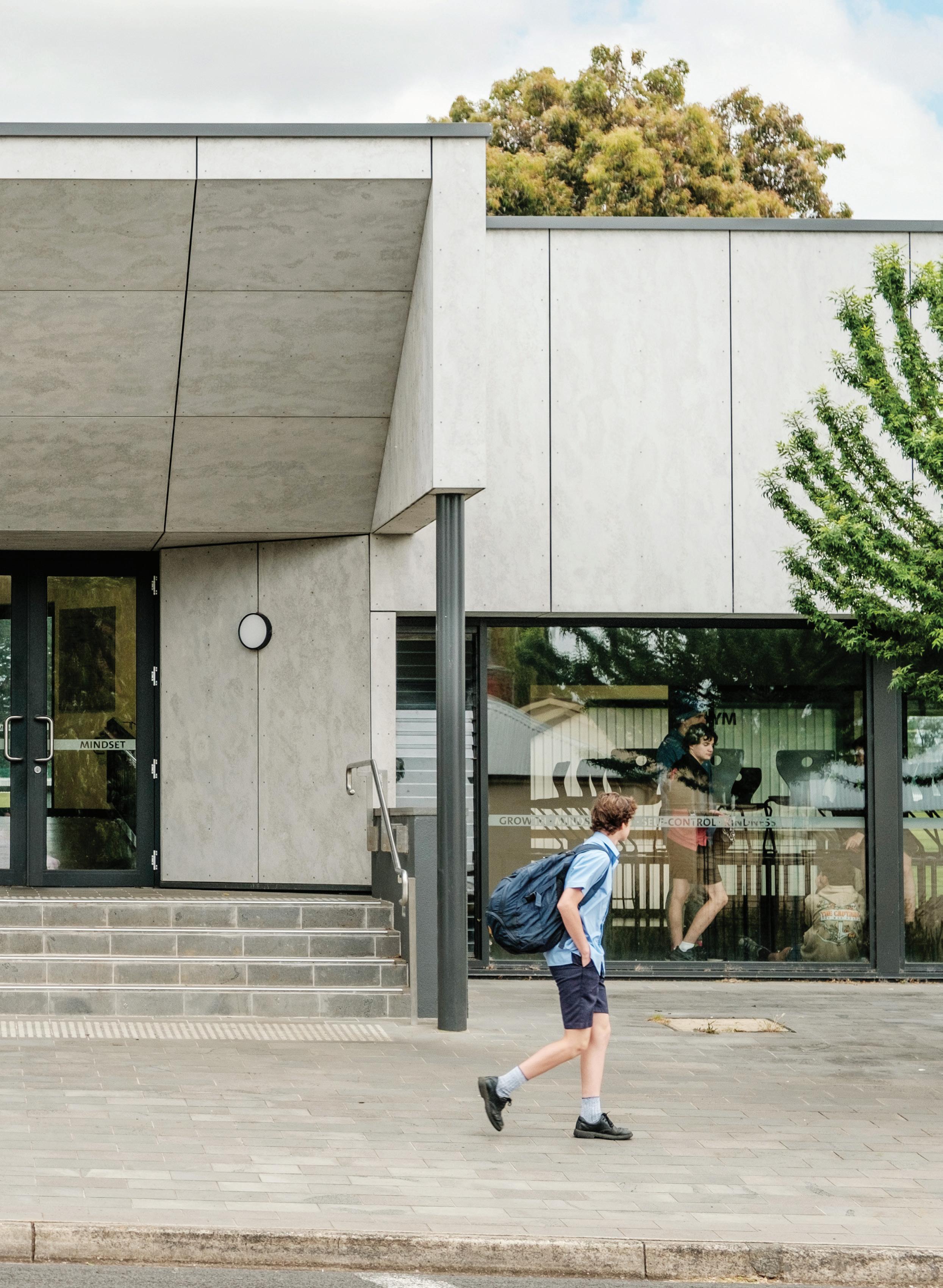

Engage is an exciting introduction to our Middle Years program at The Hamilton and Alexandra College. It allows our Year 7 students to transition from Junior School into the Senior School environment and consolidate routines for effective learning whilst building character and knowledge. The Engage program aims to consolidate student knowledge in the core curriculum and offers students the opportunity to explore a new language, the creative and performing arts and engage in an innovative digital technology program.
In the Middle Years students are encouraged to develop a growth mindset, to be curious and committed to becoming independent learners through the application and mastery of new skills and experiences. We want our students to be confident, collaborative and considerate young people, who are aware of their responsibility to both local and global issues.
Year 7 is an important year of transition, of skill building, of learning how to learn and to meet the challenge of establishing a new set of relationships with students who are beginning their Senior school learning journey.
Anna Robertson Director of Learning and Teaching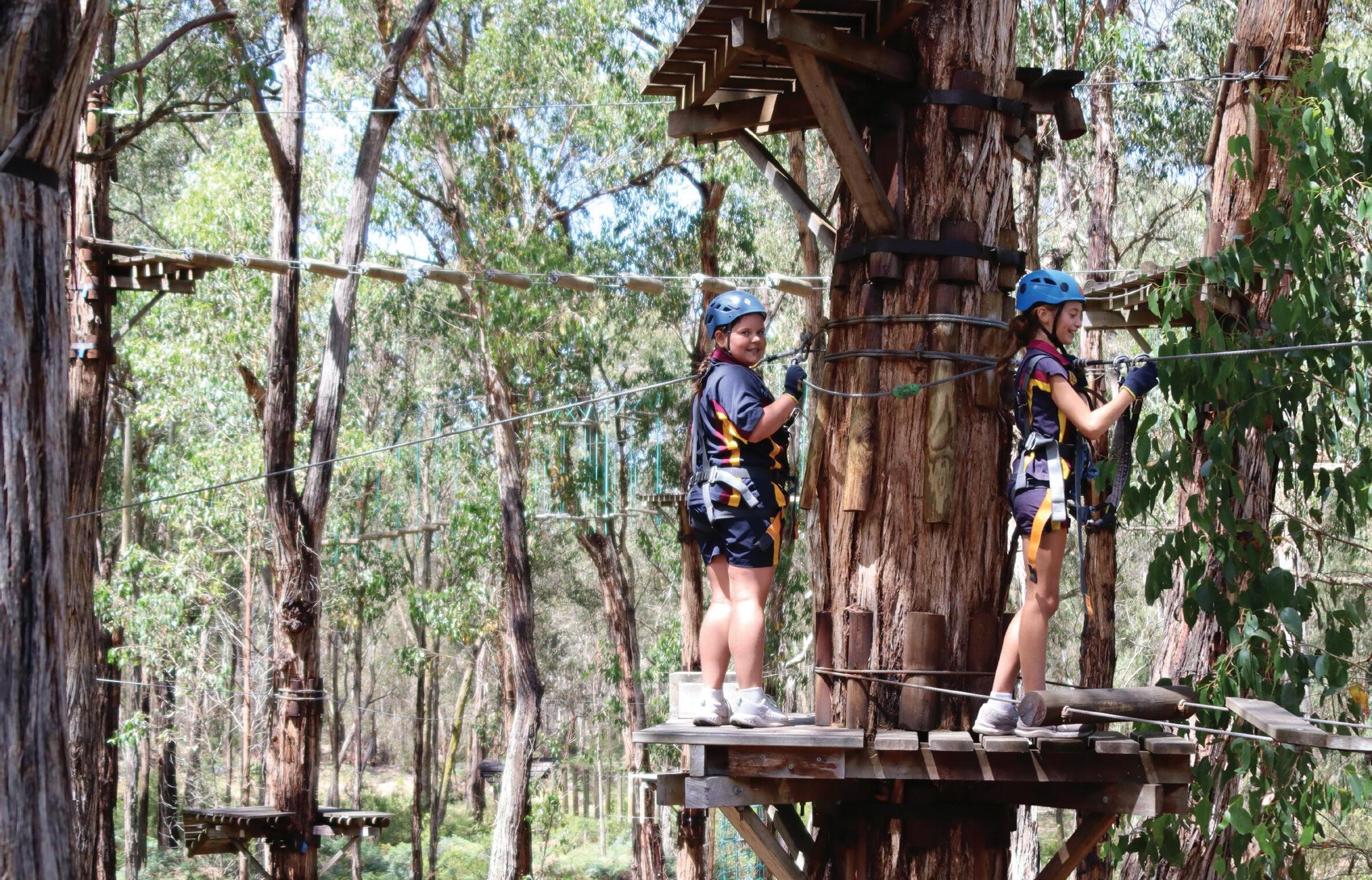
• The early weeks of transition can be tiring for students and they can easily feel overloaded.
• Students can become disorganised during transition and there can also be an academic dip; parental support is crucial for smooth transition. Please contact Mentors if you have any concerns.
• The early weeks require students to become familiar with new routines and structures, getting to know new teachers and start making new friends.
• Clear communication between school and families is pivotal to our success.
• Students will have a range of ‘transition worries’, from missing buses to detentions. Staff are kind and we will guide and support students as they transition to secondary.
• Transition days at the beginning of the school year aim to help Year 7s familiarise themselves with the senior campus and their peer group.
Our Year 7 students are in House Mentor groups and they will have the same Mentor for the time they are in myPEC.
We seek to develop close relationships with families, through the House Mentors, who see their Mentees most mornings to act as advocates for each child in their care.
The Mentor is the first point of contact for parents and will work in close connection with the teachers to make sure your child is settled and enjoying their learning journey.
They ‘walk the second mile’ to make sure their mentees are looked after and grow under their care.
This relationship is vital and special. Middle Years students are closely monitored through the College’s wellbeing and academic programs.
Academic growth is tracked and individual needs are monitored through regular assessment and online progress reporting.
• Students belong to a Mentor Group and have a close connection to a Mentor teacher.
• Strong relationships between students and Mentors.
• A greater sense of House identity develops, whereby older students look out for younger ones, developing a community culture.
• Friends are made across year levels.
This is the key to accomplishment in the Middle Years. Sporting, House activities and co-curricular programs in music and community service are abundant. They offer a wide range of experiences that complement the core learning subjects undertaken at each year level.
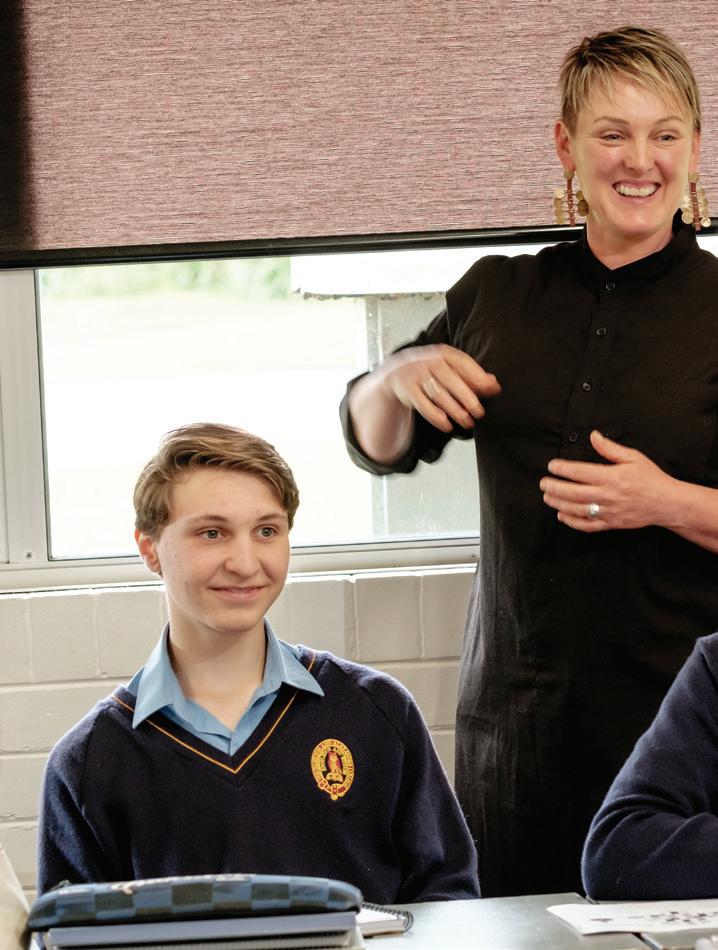
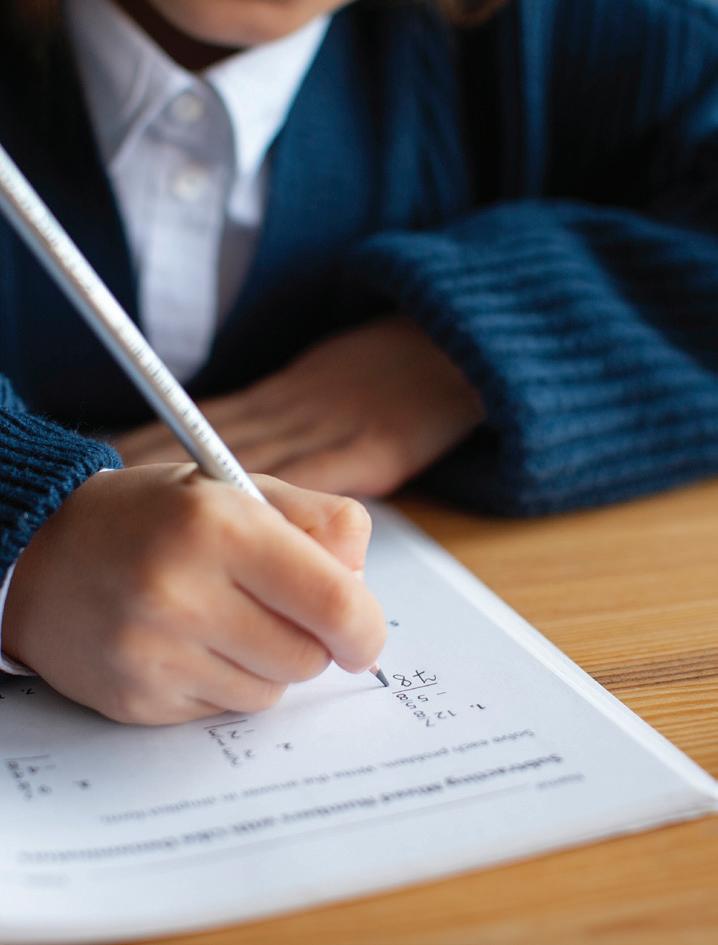
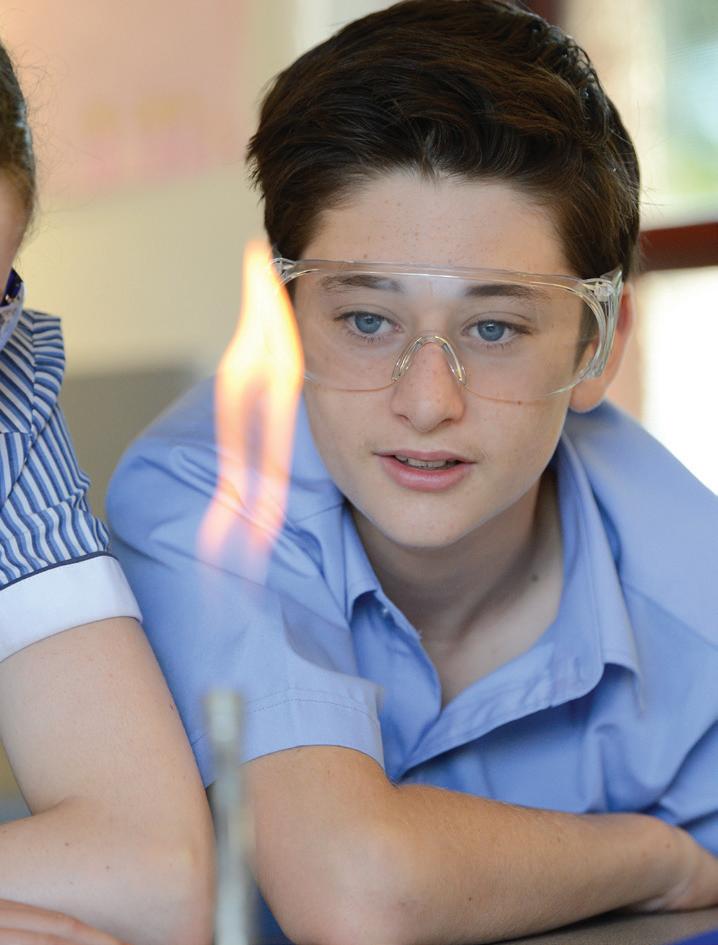
Our Year 7 English program focuses on developing students’ knowledge, understanding and skills in listening, reading, viewing, speaking, writing and creating. They experience learning in local, regional and global contexts. Students listen to, read, view, interpret and evaluate a range of written and multimodal texts and participate in individual and collaborative learning experiences. They research and write a feature article about a chosen topic and create an artwork and graphical information poster based on their critical reading of a text and the ideas, views and values communicated. Students also create imaginative, narrative written responses and have opportunities to develop their understanding of how
texts are designed to inform and persuade. Texts are dealt with in both an analytical and contextual manner seeking to expand students’ understanding of themselves and the world around them. Students are encouraged to read for enjoyment and to broaden their experience of literature, through engagement with a variety of texts both in the classroom and the library. Writing is a central component of the course and students write for a variety of purposes and audiences. The focus is on effective communication and continued development of writing skills, including vocabulary extension, accurate spelling, punctuation and grammar.
In the first year of mathematics study at the secondary level, students are nurtured to develop strong routines and a positive disposition towards mathematics. Throughout the academic year, students explore a range of topics beginning with foundational numerical concepts and arithmetic to mathematical modelling and statistical analysis. Following the Victorian Curriculum, the focus is on establishing a strong foundation in each strand while developing effective study habits and an
appreciation of mathematics. Curriculum delivery is informed by evidence of how students learn mathematics, with the aim of fostering engagement and to provide opportunities for success and challenge across all proficiency levels. Students also have the opportunity to expand their thinking through open-ended, practical problemsolving tasks, where they apply their skills to make informed decisions and efficiently solve problems.
In Year 7 Science students embark on a foundational journey into scientific inquiry. They explore scientific conventions and the Particle Model of matter, focusing on changes in matter at a particle level and distinguishing between chemical and physical changes. Additionally, students investigate various forces including friction, gravity, buoyancy, electrostatic force and magnetic fields, providing them with a hands-on understanding of fundamental physical phenomena. Students utilise models to explore the relationships within the Earth, sun and moon system and then predict and explain natural phenomena such as eclipses and seasons. The Chemistry unit introduces students to mixtures, where they explore methods for separating substances through hands-on experiments. Engaging in a classification unit, students deepen their
understanding of biological diversity by learning about the distinguishing features of each kingdom and the organisms within them. With all classes taking place in our science laboratories, practical activities, research and investigations underpin the Year 7 Science program. Emphasis is placed on developing inquiry skills, including the ability to collect, interpret and analyse data, as well as designing accurate and valid scientific experiments. Students are encouraged to apply their knowledge to realworld examples, fostering an understanding of the practical relevance of scientific concepts. Through this comprehensive exploration, students develop a strong foundation in scientific inquiry and critical thinking, preparing them for their future science studies.
At Year 7, Chinese caters for both entry level students and those with prior exposure to the language and associated cultures. The students’ spoken language is initially fostered as they are immersed in the sights and sounds of Chinese. They develop oral language through active listening, observing interactions between speakers and using the spoken language for purposes such as socialising and sharing
In the first year of French, students are encouraged to listen, speak, read and write French in a range of modelled interactions with the teacher and each other. They use basic grammatical structures to communicate on a variety of topics including personal introductions, family, school, pets, food and drinks. In each topic, students also develop
information. Students use Pinyin as a resource to support learning, prepare drafts of simple written texts and learn new oral vocabulary. Throughout the year, units are designed to teach students the topics related to numbers, dates, ages, animals, colours and family members. These topics support students to develop their listening, speaking, reading, writing and viewing skills.
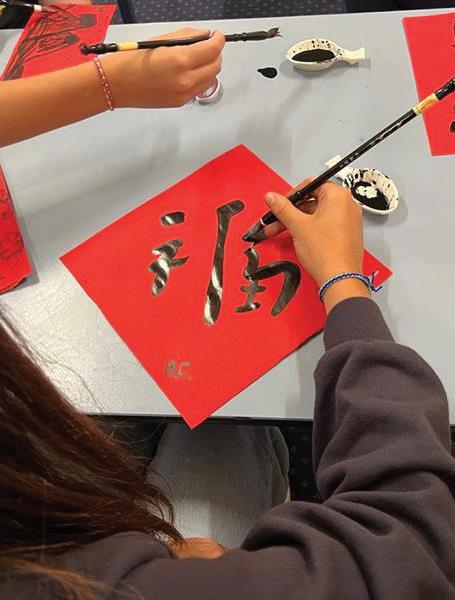
cultural knowledge. Throughout the year, learners are encouraged to experiment with sounds and intonation patterns using high frequency words and expressions, gradually broadening their range of vocabulary. They build a vocabulary and grammatical base that allows them to compose and present different kinds of simple texts.

In Year 7 Geography students engage in geographical inquiry through classwork, practical activities, research and fieldwork. Initially, the course introduces students to key mapping and graphing conventions, skill development and spatial awareness. Students build on these foundational skills, undertaking an in-depth examination of Water as a Resource. They investigate the distribution, use, quality, availability and management of water at local, national and global levels. Students continue to
explore the concept of Sustainability through an investigation of Place and Liveability, examining the factors that influence a place’s liveability and how it is perceived. They explore the idea that places provide us with the resources needed to support and enhance our lives and that places can change over time and are planned and managed by people. Students also learn to evaluate the liveability of their local community and selected global cities and how these places can be improved through planning.
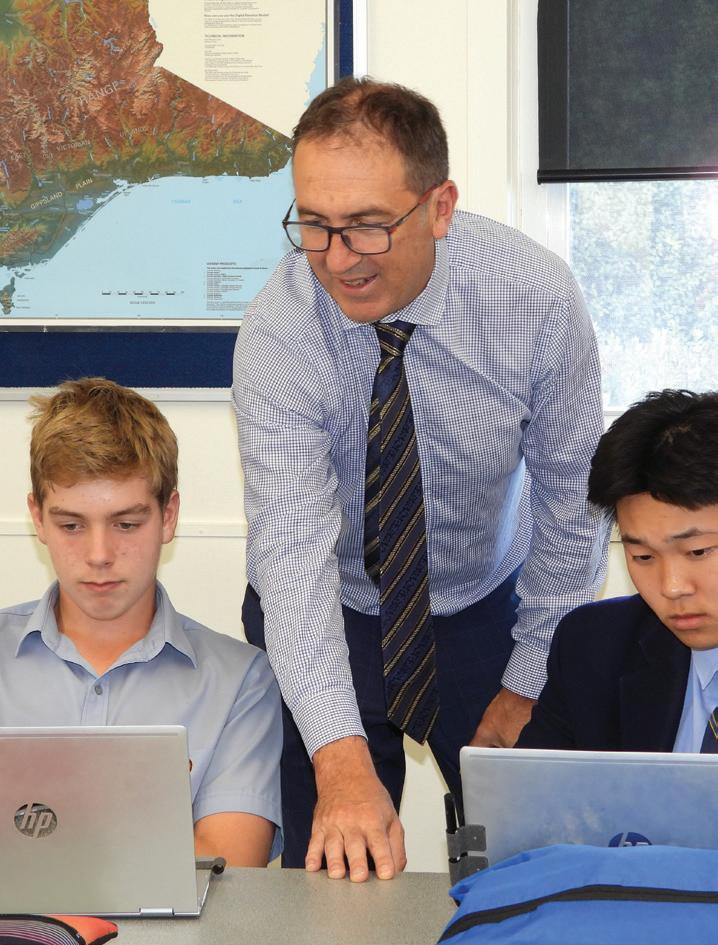
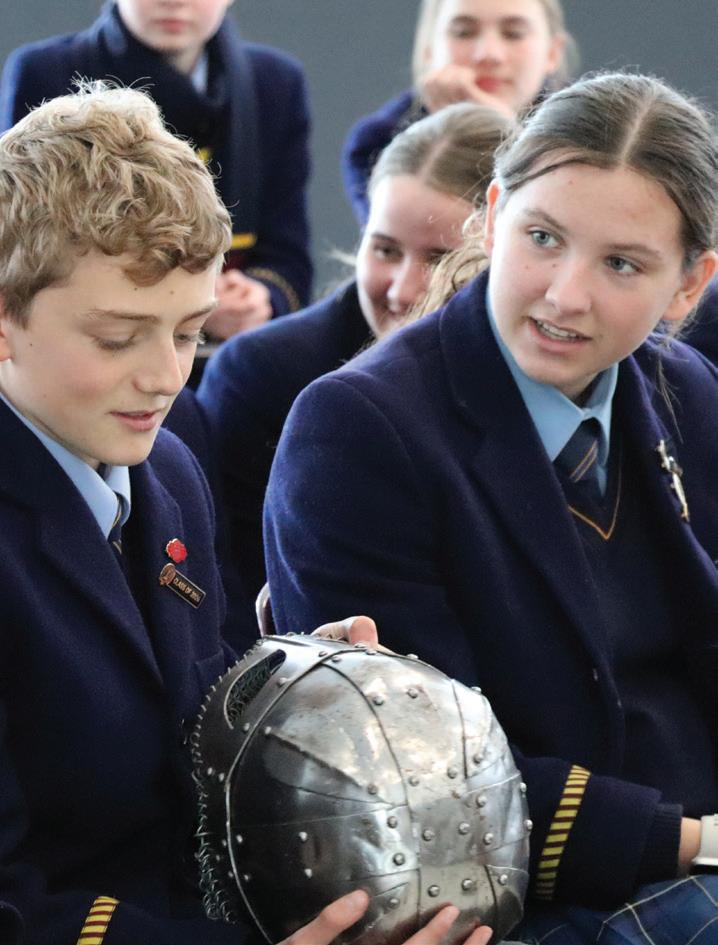
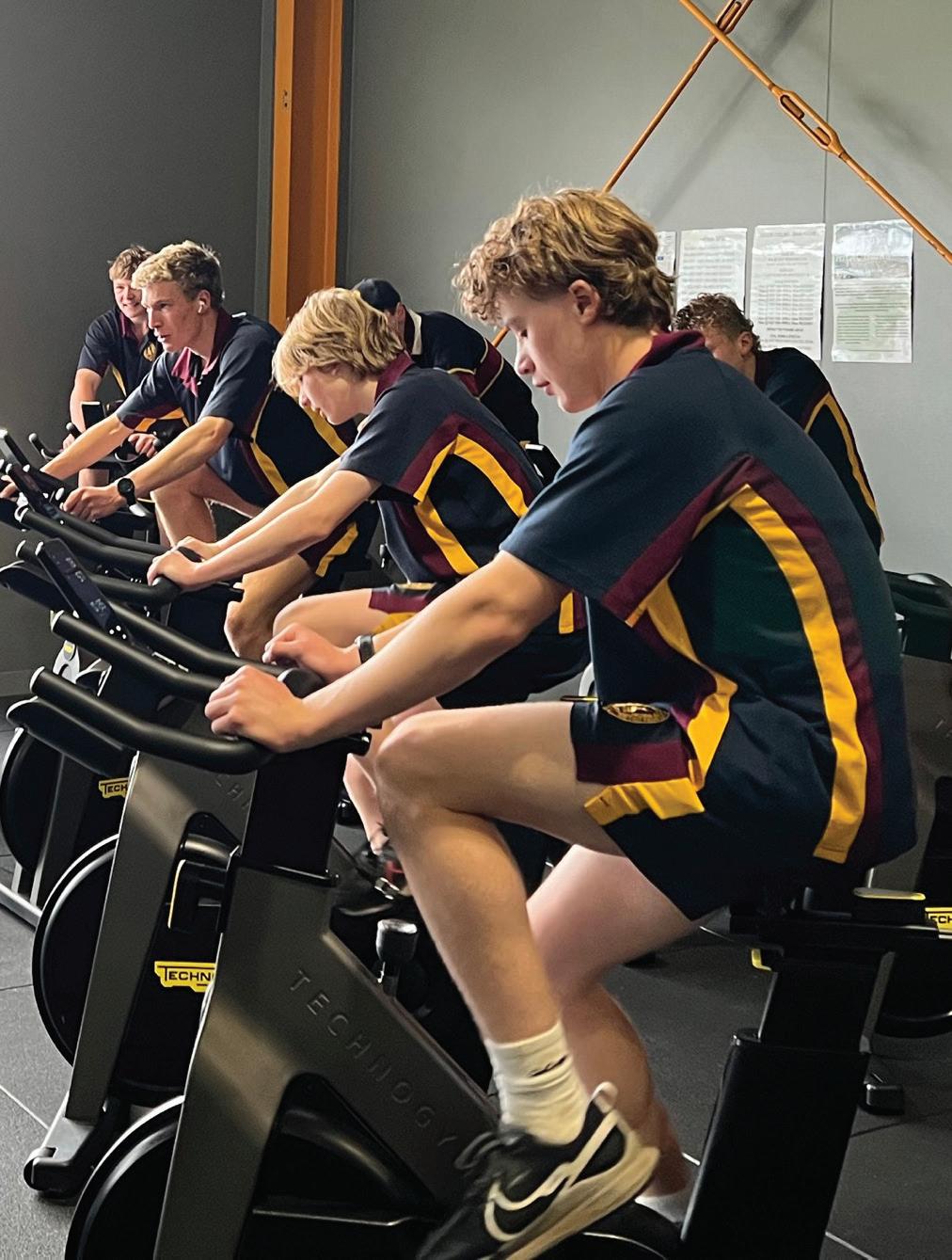

The Year 7 History curriculum focuses on the ancient world and provides a study of history from the time of the earliest human communities to the end of the ancient period, approximately 60 000 BC (BCE) – c.650 AD (CE). The study of the ancient world includes the discoveries and the mysteries about this period of history, in a range of societies including
Australia, Rome and China. The content provides opportunities to develop historical understanding through key concepts, including evidence, continuity and change, cause and effect, perspectives, empathy, significance and contestability. These concepts are investigated to facilitate an understanding of the past and to provide a focus for historical inquiries.
In Year 7 Physical Education students participate in a wide range of physical activities including swimming, athletics, hockey, basketball, rock climbing, fitness assessments, speedminton, table tennis, martial arts, rowing, tennis and cricket. This broad exposure to a range of different sports allows them to try new or different sports as well as develop more complex skills and understanding in a range of physical activity settings. Participating in a
variety of activities also allows them to reflect on and refine a range of personal and social skills. They analyse how body control and coordination influence movement composition and performance and learn to transfer skills and concepts across a variety of movement contexts improving their physical literacy. Students explore the important role that games and sports play in shaping cultures and identities.
The Year 7 Health and Wellbeing curriculum expands students’ knowledge, understanding and skills to help to learn how to take positive action to enhance their own and others’ health, safety and wellbeing. A range of help-seeking strategies are introduced that support students to access health information and services. Throughout the year students complete units based on Adolescence Change, Relationships and Sexual Education, Safety Online, Drug Education, Nutrition and Positive Education. They explore puberty and the social, emotional, physical and intellectual changes that result during adolescence. In the Relationships unit, students study friendships and prosocial skills
and discover the key components of social intelligence. They consider peer pressure and how to make informed decisions about issues they may encounter. The subject uses a Positive Education framework for explicit teaching of skills and practices that lead to and enhance, wellbeing. Students undertake the Get Ready Drug Education program which focuses on legal and illegal drugs as well as studying healthy food choices and the impact of takeaway food on society. Students continue to develop their wellbeing habits through the ongoing application of Positive Education exercises and skills.
The Instrumental Music program is a standout feature of the Year 7 curriculum. Throughout the year students learn to play an instrument, developing skills as an individual and as members of an ensemble. Students are taught in small group lessons with specialist instrumental teachers. Students with prior instrumental skills are challenged through extension, leadership and chamber groups. Later in the year students work towards solo and ensemble performance pieces, as well as experiencing working with an accompanist. The Instrumental program is enhanced in the classroom music program where students explore the basic principles of performance and composition through integrated creative tasks. They build aural musicianship whilst developing the ability to hear, perform and notate rhythmic patterns
The Visual Arts program immerses students in a dynamic exploration of creative expression, fostering the development of visual literacy and problem-solving skills. Through a diverse range of creative experiences, students embark on a journey of self-discovery, curiosity about the world and effective communication of ideas. In the Year 7 curriculum, students engage with both two-dimensional and threedimensional forms, including drawing, painting, printmaking, digital technologies and sculpture. Integral to their creative process is the use of a Visual Arts journal, where they document their research, design and development, fostering sequential and organised thinking while honing their drawing and annotation skills. Central to the program is the cultivation of an empathetic worldview through the exploration and analysis of artworks from various cultures
and melodic phrases. Through the practice of reading and writing notation, students develop their theoretical understanding. Whilst students are developing their own skills at manipulating and controlling an instrument, they also study the specific timbre of orchestral instruments. Students investigate music as an art form through listening, composing and performing. They learn to read and interpret orchestral scores. Dynamics, expression, texture form and structure are explored as students study specific orchestral repertoire. Again, the connections between physically making music and responding to music are enhanced. As students consolidate their ensemble and individual performance skills they explore meaning and interpretation in music whilst considering social, cultural and historical contexts.
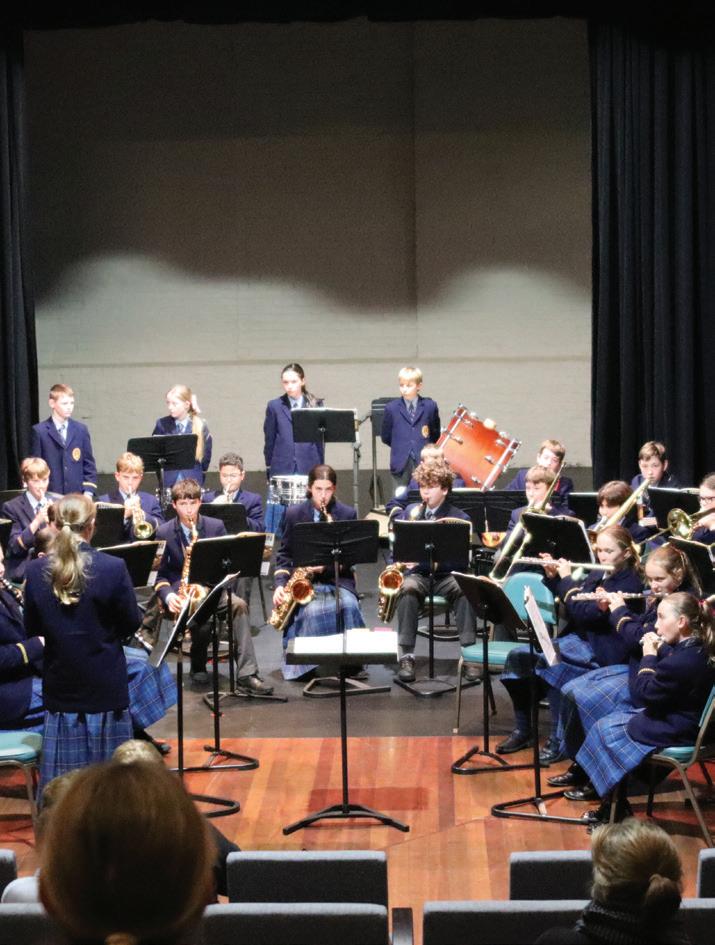
and historical periods. By responding to art, students stimulate their imagination, refine their perception and develop both creative and analytical skills. Learning and teaching methods emphasise the development of aesthetic, conceptual and technical skills through research, experimentation, planning and annotation. Students not only enhance their creative expression but also cultivate project management skills as they navigate each area of study. Ultimately, the Visual Arts program seeks to empower students to experiment with artistic conventions and techniques, allowing them to represent themes, concepts and ideas authentically. By exploring personal identity and the aesthetic in real-world contexts, students become adept problem-solvers and informed creators, ready to contribute meaningfully to the world of visual arts and beyond.

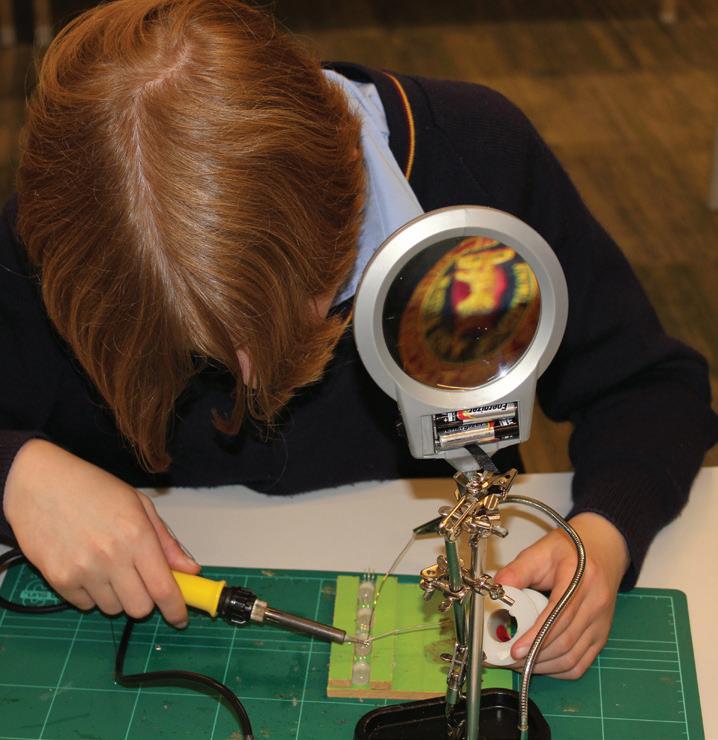


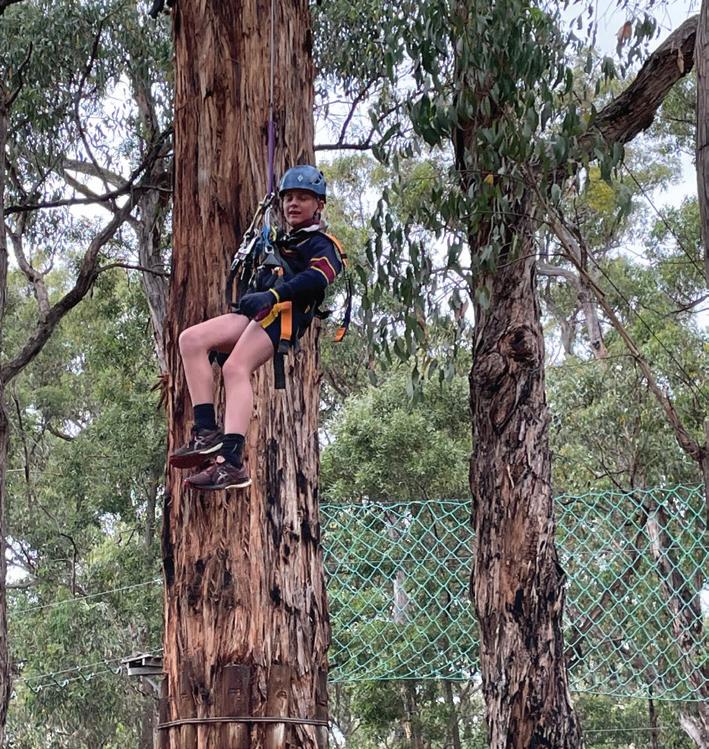
In Year 7, students learn to distinguish between different types of networks while exploring how text, image and audio data can be represented, secured and presented in digital systems. Students use appropriate protocols when communicating and collaborating online. They plan and manage digital projects to create
In Year 7 Food Technology, students embark on an exciting culinary journey, exploring the art and science of cooking and nutrition. This course is designed to introduce budding chefs to essential kitchen skills, culinary techniques and the joy of creating delicious and nutritious meals. Throughout the term long course, students will learn the fundamentals of food safety and hygiene, knife skills, meal planning and
In Year 7, Drama education entails both crafting and reacting to theatrical pieces, exploring drama as an artistic expression and grasping the expectations and etiquette of the theatre, whether in the role of a performer or an audience member. Students engage in activities that emphasise improvisation and refine their ability to convey messages through language and movement. Across various units, they
interactive information. They define and decompose problems in terms of functional requirements and constraints. They design real life user experiences with the application of algorithms. Students learn how information systems can meet the needs of others in an innovative and sustainable way.
The Year 7 Outdoor Education program aims to introduce students to the great outdoors, balancing practical experiences and essential knowledge of the natural environment. Students will develop an understanding of the significance and benefits of the natural environment and explore our Mirranatwa Facility. They will expierence what the outdoors really means, including its cultural and historical significance. Activities such as hiking, camping and cooking help students connect with nature, emphasising safety and ethical conduct. Students develop key knowledge about ecology,
the importance of a balanced diet. They will have hands-on experiences in preparing a variety of dishes, fostering creativity, teamwork, collaboration and presentation. By the end of the term, students will have developed a solid foundation in cooking and nutrition, preparing them for further culinary adventures and inspiring a lifelong love for good food and healthy eating.
acquire fundamental acting skills, delve into character development and portrayal, explore improvisational techniques, refine their physical and vocal expressiveness and understand how to build dramatic tension. Simultaneously, students gain insights into self-assurance, teamwork and effective communication. They participate in individual and group exercises, showcasing their work to their classmates in class performances.
covering topics like ecosystems and human impact on the environment. Sustainability is a key theme, teaching students how to make eco-friendly choices and why this is important. Developing ecological literacy is also an integral part of the program, involving an understanding of local plant and animal life and skills for taking care of the environment. This brief course provides foundational knowledge for further learning, aiming to inspire a lifelong love for the outdoors and prepare students for a year of exciting adventures.
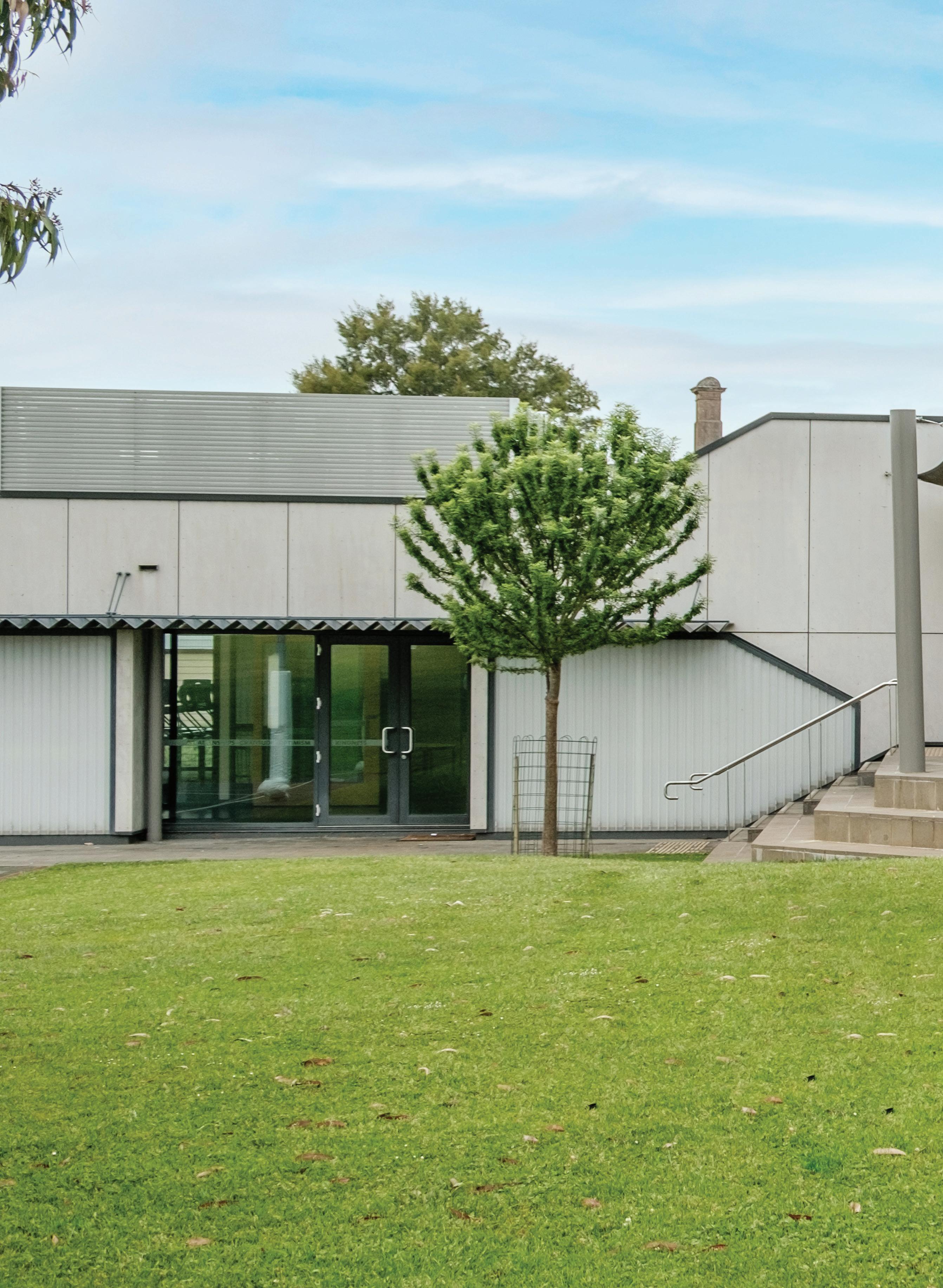
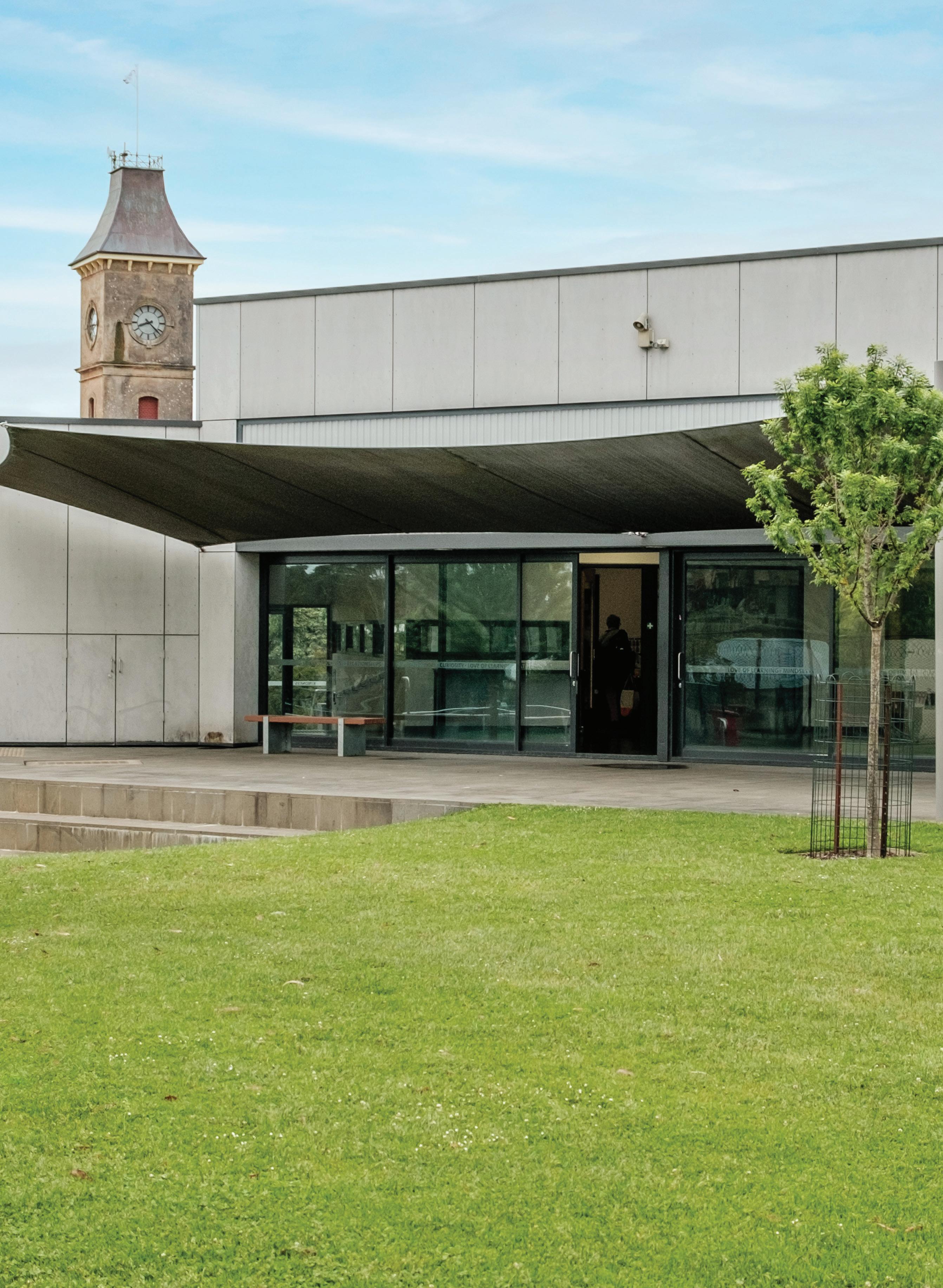

The Explore Program aims to offer breadth, ignite passion and develop skills as students explore new subjects. All students study six semester length elective pathway units during the Year 8 and 9 Explore program. The program offers a blend of practical, vocation orientated pathway subjects, as well as the opportunity to explore subjects like the Visual and Performing Arts, Technology, Sport and Outdoor Education, Equine, Literature and Business Management. Students will have an opportunity to select subjects that challenge and extend their skills and capabilities.
All Year 8 students study English, Maths, Science, Geography History, PE, Health and Wellbeing and LOTE. In addition, they select four semester units from the EXPLORE program.
The following year, students in Year 9 study a core program of English, Maths, Science, Geography, History, PE, Health and Wellbeing and choose six semester units from the EXPLORE program.
We work hard to provide our Middle Years students with a range of subjects that will extend and challenge them, whilst helping them to learn new skills and develop knowledge about themselves and the world around them.
Prerequisites around elective choices. All students must study at least one visual art, one performing art and one technology subject during their two-year program.
We want to challenge our students to work outside of their comfort zone and explore a range of possible future options.

We work together as a team to provide support for College families, including assistance from subject teachers, Mentors, Head of Middle Years, as they consider a learning program that will prepare students for a future world of work or further study.
We encourage you to attend the Curriculum Information Night and review the online information about subjects on offer. As a parent your involvement in the subject selection process is important.
Your children will have the opportunity to meet face to face with Heads of Faculty
and teacher staff and hear from current students about their learning.
We work hard to accommodate the needs of each student. Finding the right course for your child is important, so we invite you to be a part of the process.
• Year 8 students continue with LOTE and choose four electives.
• Year 9 students choose six electives.
Students in Year 8 must choose at least one Visual Arts, one Performing Arts and one Design Technology and Digital Technologies subject in their program over the next two years.
Design, Technology and Digital Technologies
The Internet of Things and Sustainability
Robots in Virtual and Real Worlds
Systems Engineering and Materials
Drones in Society
Video Making and Web Design for Entrepreneurs
Game Design and Esports
Food Studies: Food for Life
Food Studies: Flavour 101
Agricultural Science
Equine Studies
Equine Animal Systems and The Equine Industry
Equine Riding, Management and Care
Health and Physical Education
Outdoor Education Water
Outdoor Education Land
Sports Development and Leadership
Sports Coaching
Humanities
Business Management
English Language and LearningLiterature
Ethics and Philosophy
Language Other Than English (LOTE)
Chinese French
Performing Arts
Drama Performance
Theatre Production
Music Production
Visual Arts
Photography
Textiles
2D Painting and Printmaking
3D Drawing and Sculpture
Product Design and Advertising
Environmental Design and Advertising
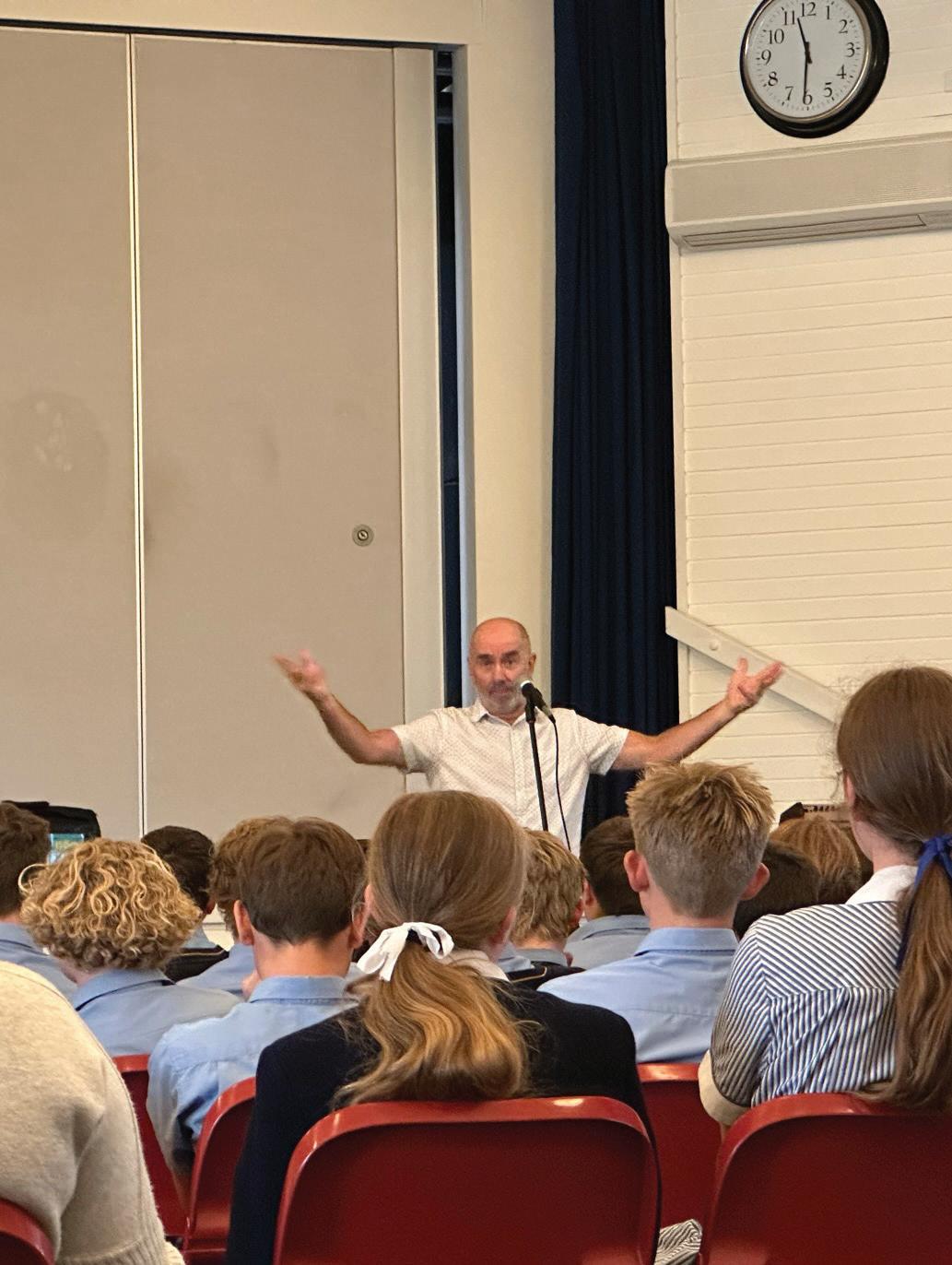
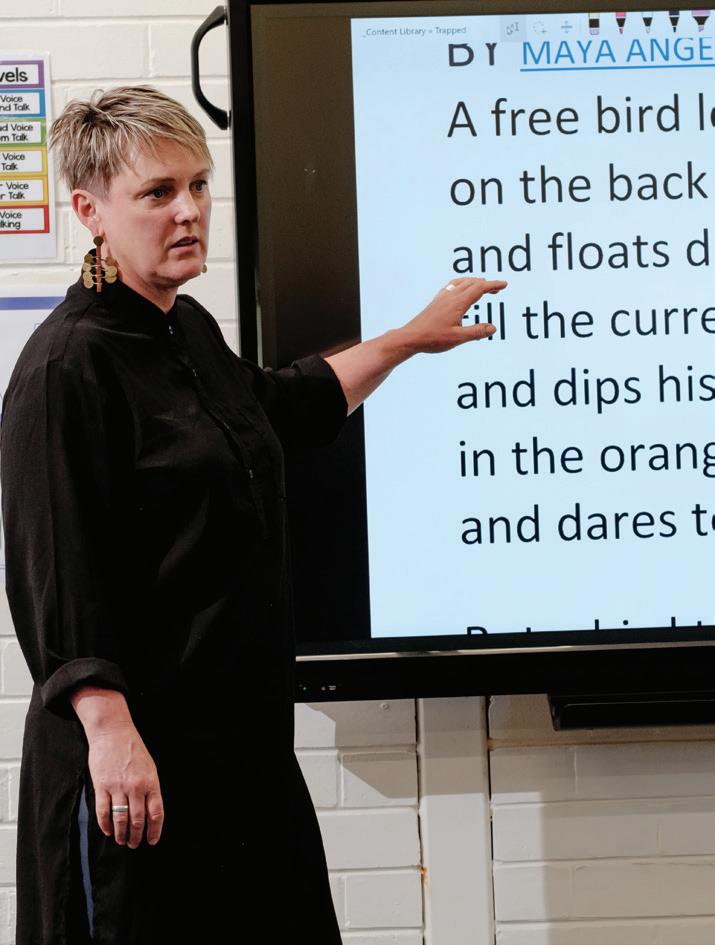

Throughout the Year 8 English course students participate in a range of reading, writing, creating, speaking and listening activities often guided by a focus question overlaid onto different texts. For the first half of the year we ask, ‘What does it mean to be human?’. Students work individually and in small groups to study several texts with a focus on comprehension and personal reflective skills. Students present their ideas through a variety of writing styles including creative, descriptive and analytical writing. They develop their understanding of how texts are influenced by context, purpose and audience. As they develop their skills,
knowledge and understanding in the three strands of ‘Speaking and Listening, Reading and Writing’ the focus overlaid on top of work units broadens out to explore the concept of perspective; ‘Through the eyes of others.’ Students are encouraged to read for enjoyment and to broaden their experience of literature, through engagement with a variety of texts both in the classroom and the library. Writing is a central component of the course and students write for a variety of purposes and audiences with an emphasis on effective communication, spelling, punctuation, grammar, personal and vocabulary expansion and handwriting.
The Year 9 English course continues to develop and strengthen students’ knowledge, understanding and skills in the key strands of listening, reading, viewing, speaking, writing and creating. Students study a wide range of texts with a focus on thematic studies, comprehension and analysis skills. Students explore themes of human experience, cultural significance and interpersonal relationships which coincides with the Year 9 Experience, asking students to consider legacy, responsibility and equality. Students practise the recognition and application of persuasive and analytical techniques in both written and oral contexts.
Written responses are created in a range of styles of writing, to include personal response, analytical, persuasive, narrative and imaginative writing. Students are encouraged to read for enjoyment and to broaden their experience of literature, through engagement with a variety of texts both in the classroom and the library. Writing remains a principal component of the course and students will write for a variety of purposes and audiences. The focus is on effective communication and continued development of their writing skills, including vocabulary extension, accurate spelling, punctuation and grammar.
In Year 8 Mathematics, students build upon their previous knowledge and experiences to strengthen their skills across all strands of the Victorian Curriculum. They study fractions, decimals, percentages and ratios, applying these skills practically to everyday scenarios like budgeting and shopping decisions. Index laws are introduced and they continue to develop their understanding of algebraic expressions, learning to manipulate them with increasing
confidence. Connections to the real world are made through mathematical modelling, where they investigate probabilities and analyse data to make better decisions. Through a blend of reasoning, problem-solving and purposeful practice, students develop the resilience and confidence needed to build the foundations for the broad range of opportunities that the study of mathematics provides.
At Year 9 all students continue to study a broad mathematics course in preparation for the more specialised options offered in Years 10 – 12. Fluency in algebra and number skills is continually developed alongside a more in-depth study of linear and simultaneous equations and their applications. Students further develop their algebraic skills with the study of quadratics. They use quadratic functions to model and solve familiar problems, both algebraically and graphically.
Pythagoras’ Theorem is investigated and real-world applications are explored as students develop an understanding of how trigonometry, geometry and linear modelling are used in practical contexts. Students learn how to collect, display and interpret data and explore the concept of probability. Laptops are incorporated in the mathematics classroom where appropriate to differentiate learning and enhance understanding.
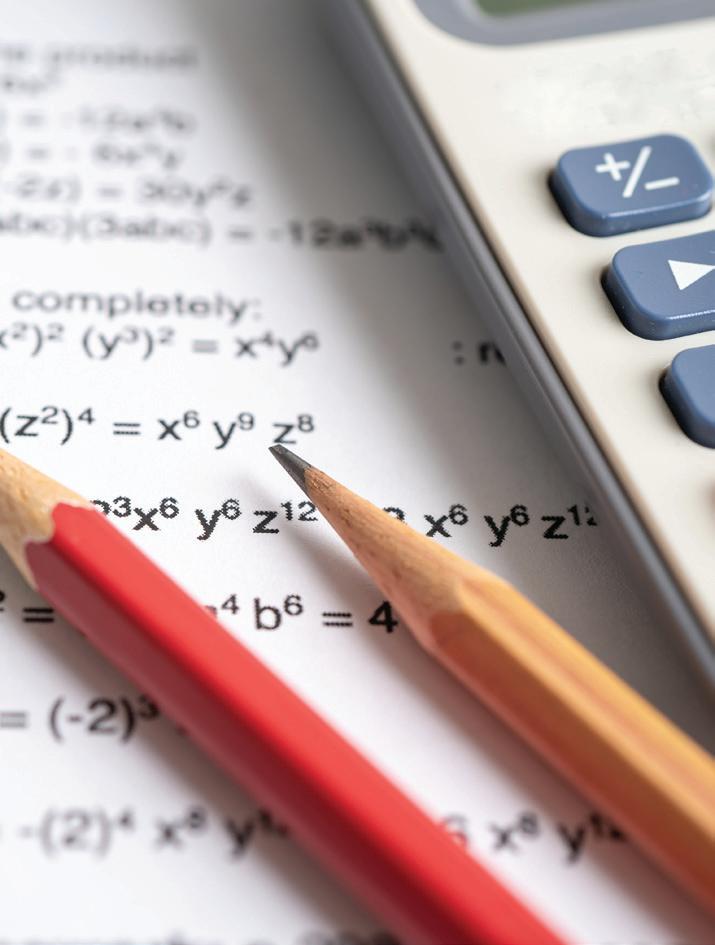
The Year 8 Science program is underpinned by hands-on activities and theoretical discussions to deepen their understanding of key concepts. They are encouraged to use scientific terminology and appropriate representations to communicate their understanding effectively. Students explore various forms of energy, including heat, light, chemical and potential energy. They learn how these forms of energy can be converted and transferred. Students undertake a study of different types of reactions, including physical and chemical reactions and investigate the distinctions between elements, compounds and mixtures. Students are introduced to plant and animal cells, discovering how plant and animal cells differ along with the structure and function of various cell organelles. Students explore the formation of sedimentary, igneous and metamorphic rocks, gaining an
The Year 9 course emphasises hands-on investigations, covering all aspects of the scientific inquiry process. Students have multiple opportunities to design and conduct investigations, with a comprehensive assessment of all aspects of an investigation, including planning, safety considerations and appropriate data collection methods. Students focus on experimental design and practical report writing, with an emphasis on understanding the flow of energy and the interconnectedness of photosynthesis and cellular respiration in living cells. The unit on Control and Coordination extends students’ knowledge of body systems, focusing on the nervous and endocrine systems and their roles in maintaining homeostasis. Students also
understanding of how rocks change over time, as well as investigating the formation of fossils. Students investigate the transmission of sound and light, studying how sound waves and light waves travel and interact with different mediums. This exploration includes concepts such as reflection and refraction. Additionally, students explore the organisation of body systems, examining how the structures of organs and tissues are specialised to carry out specific functions. They analyse the interdependence and coordination of different systems within the human body and other organisms, gaining insights into adaptations that enable organisms to thrive in their respective environments.
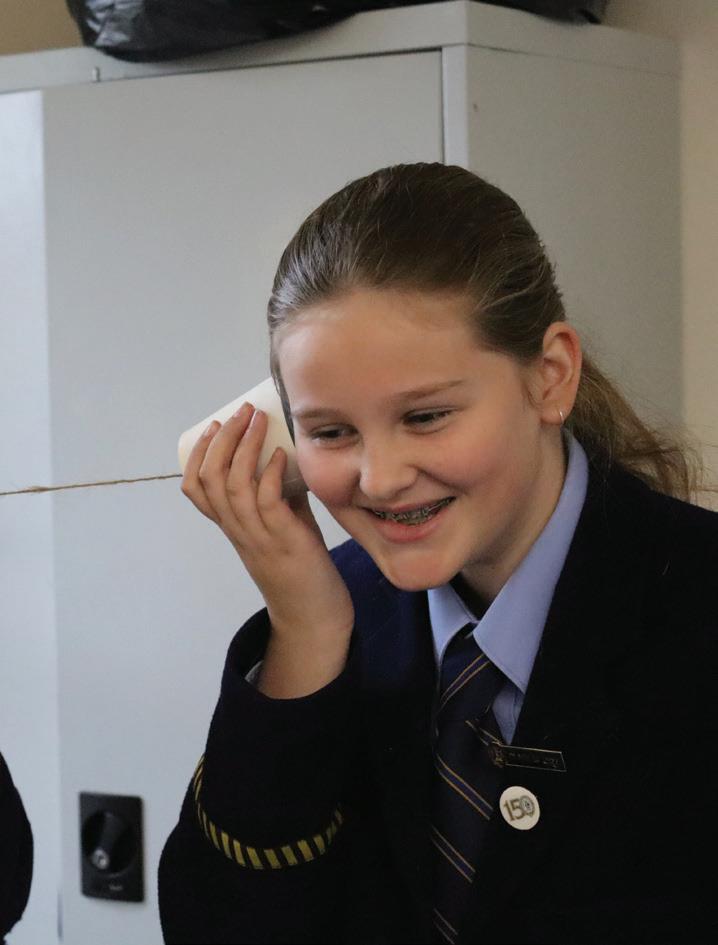
undertake a study of disease and the immune system to gain an understanding of the body’s defense mechanisms, exploring the causes and mechanisms of disease and preventive measures that can be taken. Students explore electrical circuits, providing them with an understanding of fundamental principles such as current, voltage and resistance. Practical activities allow students to build and analyse circuits, deepening their understanding of electricity and its behaviour. The study of Chemistry includes hands-on activities to investigate chemical reactions, covering topics such as chemical equations, reaction types and factors influencing reaction rates along with the exploration of the internal structure of atoms and the applications of radioactivity.

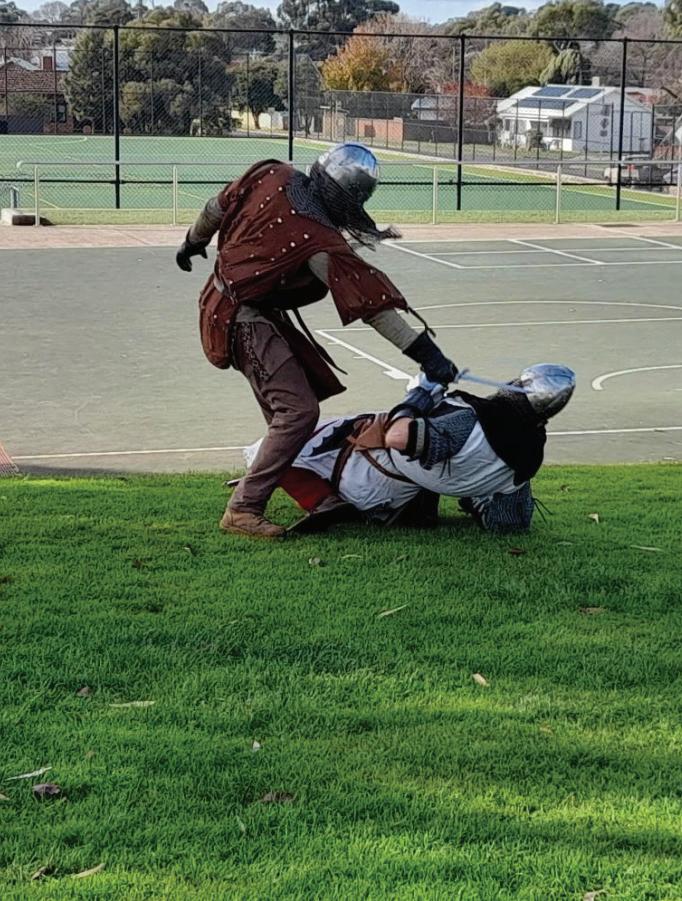
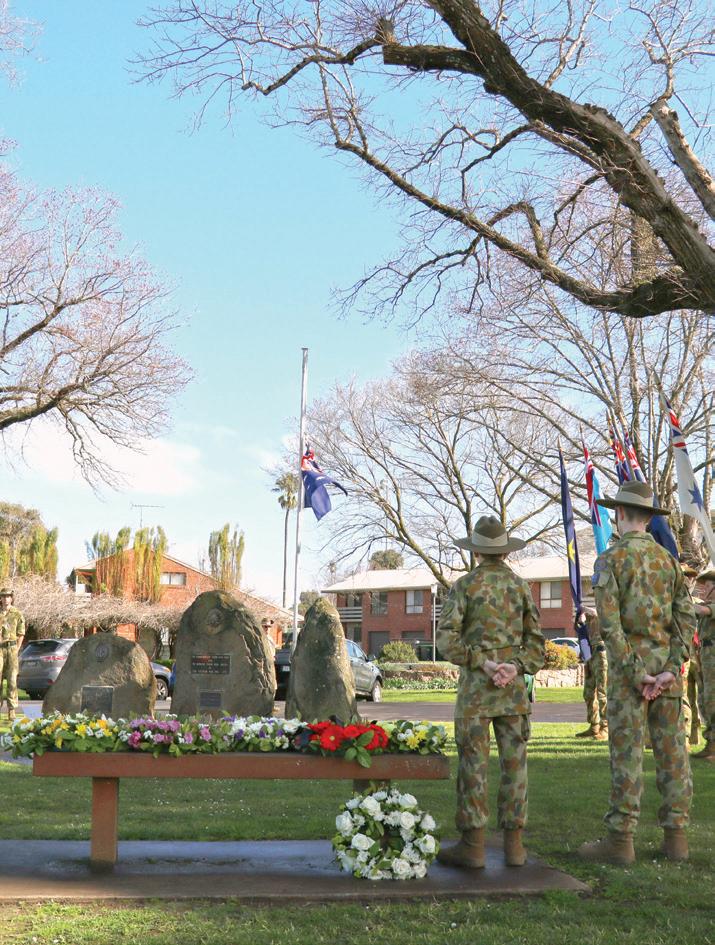
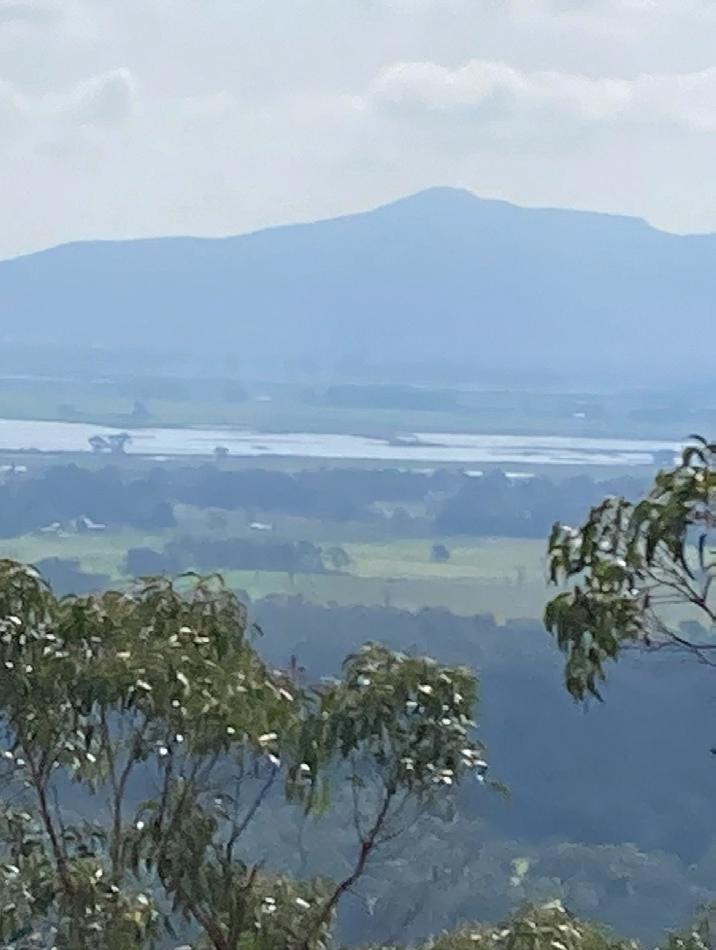
The Year 8 curriculum provides a study of history from the end of the ancient period to the beginning of the modern period, when major civilisations around the world encountered each other. Social, economic, religious and political beliefs were often challenged and significantly changed. Students complete studies of European conquest and colonisation and investigate the Black Death. The Asia Pacific world is also studied, with Japan as the
major case study. The Spanish conquest of the Americas is also considered. The content provides opportunities to develop historical understanding through key concepts, including evidence, continuity and change, cause and effect, perspectives, empathy, significance and contestability. These concepts are investigated within a historical context to facilitate an understanding of the past and to provide a focus for historical inquiries.
The Year 9 curriculum provides a study of the history of the making of the modern world from 1750 to 1918. It was a period of industrialisation and rapid change in the way people lived, worked and thought. It was an era of nationalism and imperialism and the colonisation of Australia was part of the expansion of European power. The period culminated in World War I from 19141918, the ‘war to end all wars.’ The content provides opportunities to develop historical understanding through key concepts, including evidence, continuity and change, cause and effect, perspectives, empathy, significance and contestability. A framework for developing
students’ historical knowledge, understanding and skills is provided by inquiry questions through the use and interpretation of sources. Key inquiry questions at this year level are:
• What were the changing features of the movements of people from 1750 to 1918?
• How did new ideas and technological developments contribute to change in this period?
• What was the origin, development, significance and long-term impact of imperialism in this period?
• What was the significance of World War I?
Year 8 Geography involves students in geographical inquiry through class work, practical activities, research and fieldwork. They use the geographic concepts framework of space, place, interconnection, change, environment, sustainability and scale. Students are introduced to a range of Australian and global landscape types, concentrating on rainforest and mountain landscapes, including local volcanoes. They investigate the natural processes that shape and form the landforms within them. They also consider the way human activities impact upon landscapes and the strategies that have been used to try to protect
them. Students investigate ‘landscape hazards,’ including the causes, behaviour, impacts and attempts to manage hazards. As students explore the ‘Changing nations’ unit, they investigate the phenomenon of urbanisation, the reasons for it and the effect it has on people and the environment. Students compare examples of rural-urban migration in Australia and China. They examine the characteristics of urban centres including the development of mega-cities. They also consider the planning that needs to take place to ensure urban environments are liveable and sustainable.
Year 9 Geography begins by investigating how people, through their choices and actions, are connected to places throughout the world in a wide variety of ways and how these connections help to make and change places and their environments. Students examine the interconnections between people and places through the products people buy and the effects of their production on the places that make them. Students consider the ways that transport information and communication technologies have made it possible for an increasing range of services to be provided internationally and for people in isolated rural areas to connect to information, services and people in other places. These distinctive aspects of interconnection
are investigated using studies drawn from Australia and across the world. Building on this knowledge of the concepts of systems and interconnectedness, students then explore Biomes and Food Security. This unit focuses on investigating the role of the biotic environment and its role in food and fibre production. This unit examines the biomes of the world, their alteration and significance as a source of food and fibre and the environmental challenges and constraints on expanding food production in the future. These distinctive aspects of biomes, food production and food security are investigated using studies drawn from Australia and across the world.
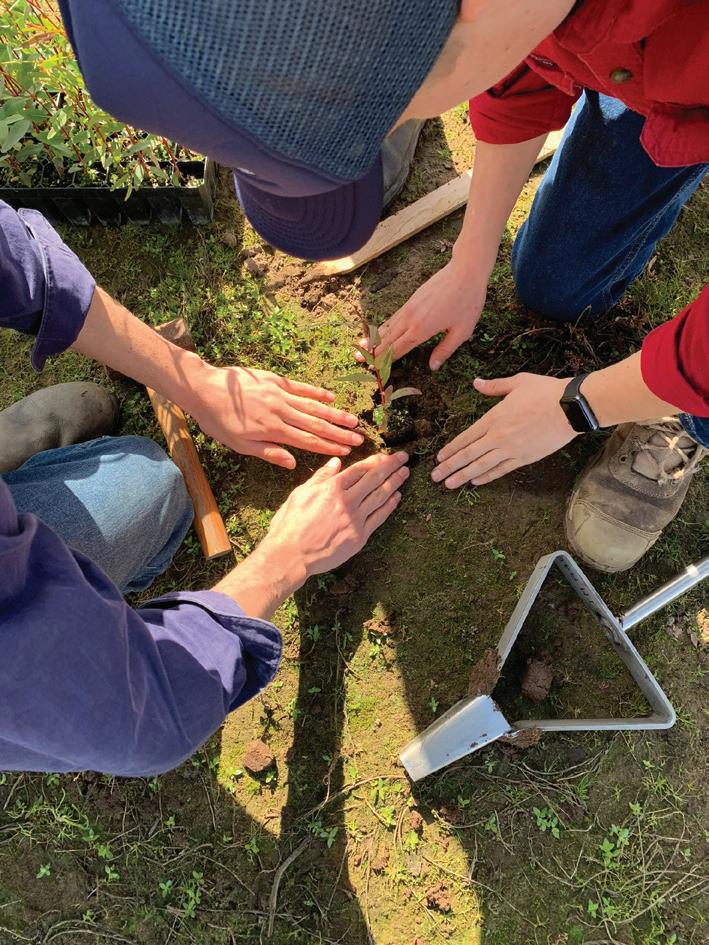
Throughout the Year 8 Physical Education program students participate in a wide range of physical activities including swimming, athletics, netball, sofcrosse, football, a fitness assessment, soccer, fitness, dance, aquatics, volleyball and softball. They develop more complex skills and understanding in a range of physical activity settings. They analyse how body control and coordination influence movement composition
and performance and learn to transfer skills and concepts across a variety of movement contexts. Students explore the important role that games and sports play in shaping cultures and identities. They reflect on and refine a range of personal and social skills as they participate in a range of physical activities.
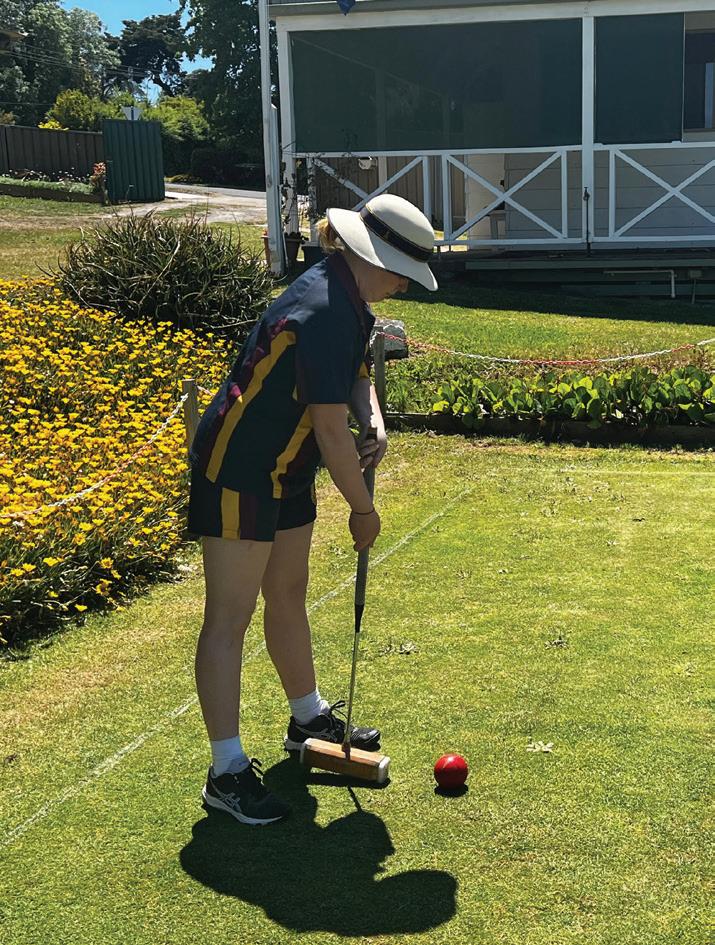
Progressing to Year 9 Physical Education, students continue to participate in a wide range of physical activities including swimming, athletics, hockey, world football, basketball, rockclimbing, cricket, tennis, a fitness assessment, basketball and hockey. Students learn to apply more specialised movement skills and complex movement concepts and
strategies in a range of movement contexts and environments. They are also provided with opportunities to use a range of concepts to evaluate and refine their own and others’ movement performances. Students analyse how physical activity and sports participation can influence an individual’s identities and explore the role participation plays in shaping cultures.
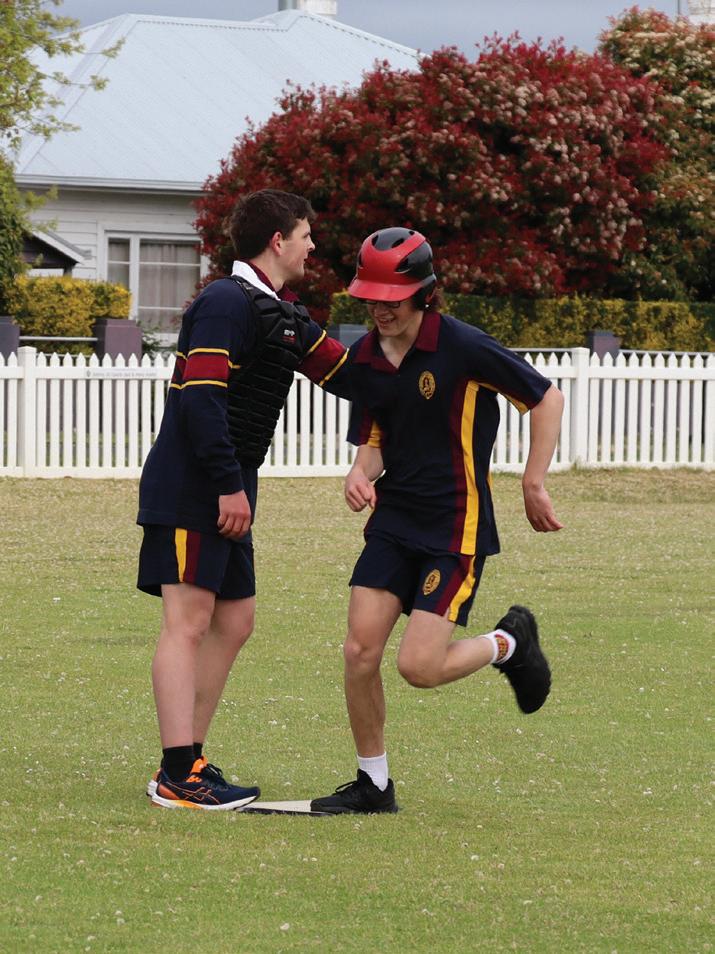
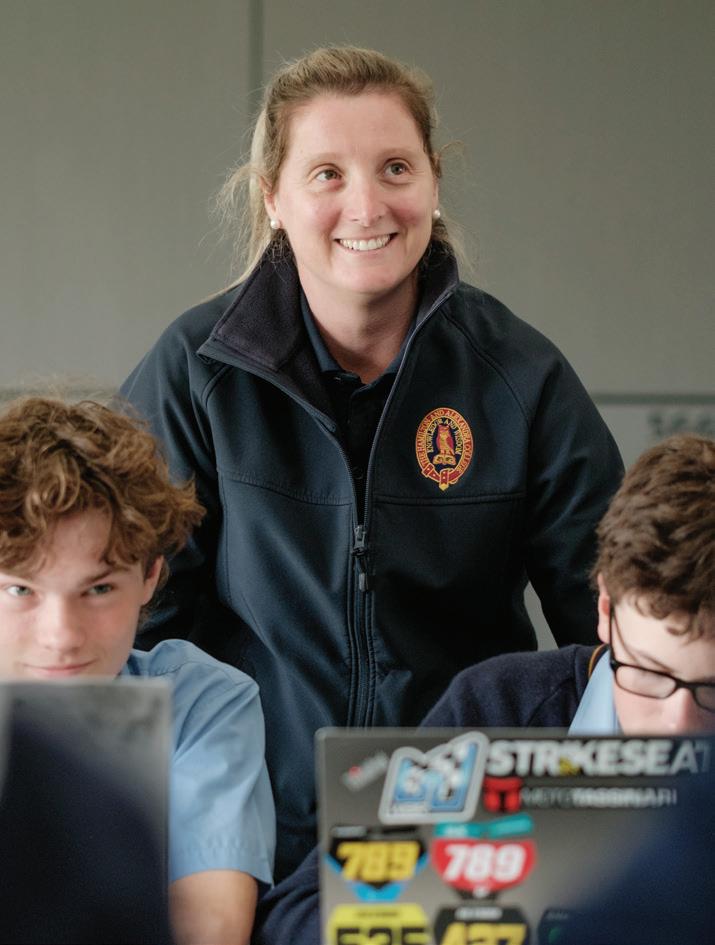

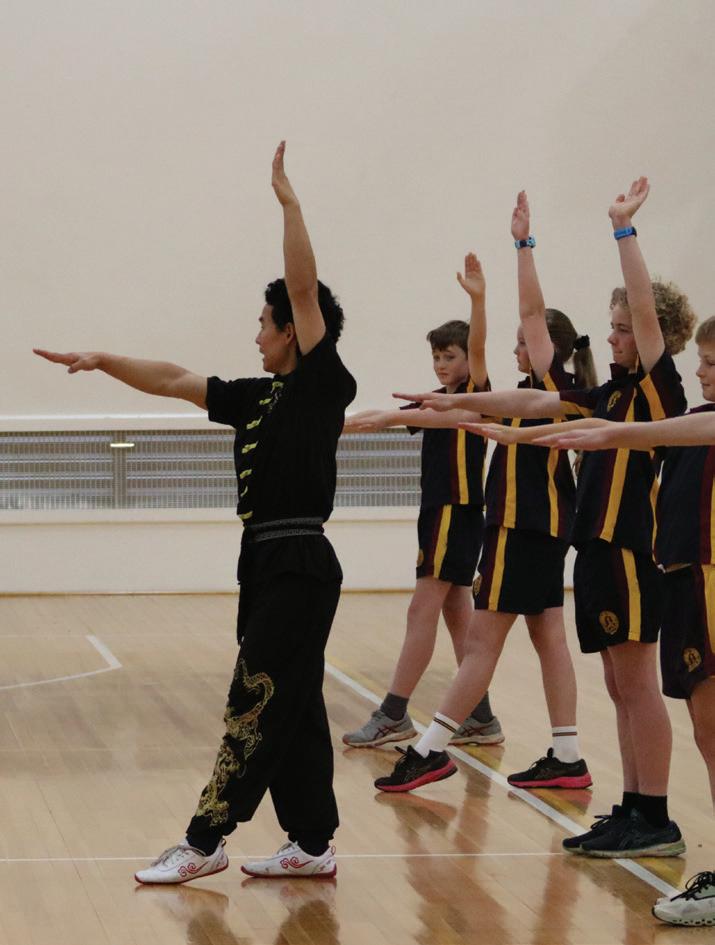
The Year 8 Health and Wellbeing curriculum expands students’ knowledge, understanding and skills to help them achieve successful outcomes in the classroom, leisure, social and online situations. Students learn how to take positive action to enhance their own health, safety, wellbeing and that of others. Students are introduced to a range of help-seeking strategies that support them to access health information and services. Students’ complete units based on Personal Identity, Sexual Health, Safety Online and Positive Education. They develop self-awareness through identifying personal emotions and values. They examine the nature of their relationships and the factors that influence beliefs, attitudes, opportunities, decisions, behaviours and actions. The subject
uses a Positive Education framework for the explicit teaching of skills and practices that lead to and enhance wellbeing. Students build on prior Year 7 knowledge as they study Drug Education, using the Get Ready program which focuses on legal and illegal drugs. In acknowledging themselves to be digital citizens from the beginning of their use of technology, students learn to recognise the importance of protecting their private information online, the value of taking responsibility for themselves and their actions and the necessity of treating others with an appropriate standard of behaviour online. Students continue to develop their wellbeing habits through the ongoing application of Positive Education exercises and skills.
Throughout Year 9 Health and Wellbeing students complete units on Positive Education, Relationships, Body Image and Resilience. Students complete Positive Education Interventions specifically designed for the year level. The Relationships Unit explores emotional and social intelligence, developing friendship skills, group dynamics and a range of skills to assist students in everyday life. During the Resilience Unit, students develop an understanding of what makes people resilient, and participate in activities to develop their understanding of resilience from a values based perspective. Body Image is an important issue for teenagers and students learn about positive body image and the strategies to develop positive body image.
Each unit utilises theory, practical activities and case studies to assist students in expanding their Health and Wellbeing knowledge, skills and understanding. The Resilience, Rights and Respectful Relationships learning materials have been designed for teachers in secondary schools to develop students’ social, emotional and positive relationship skills. Students learn and understand how to promote social and emotional skills and positive gender norms. Students improve their physical, social, emotional and psychological health through the development of skills and understanding of what makes them and their community thrive. Specifically, students explore the concepts of consent, being an upstander, positive affirmation and inclusivity with schools and communities.
At Year 8 students build on the foundation established in prior years of study of the Chinese language and associated cultures. Spoken language is developed as students are immersed in the sights and sounds of Chinese. Students learn to communicate on topics such as Talking About Meals, Nationalities, Leisure Activities and Shopping. Written texts are prepared using characters and they may
include Pinyin. Likely contexts for interaction are familiar classroom routines and structured and scaffolded settings. Students listen to, read, view and interact with a variety of short modified informative, imaginative and narrative Chinese texts including information and knowledge that are valued within Chinese culture and community.
At Year 9 students bring prior knowledge of Chinese language and culture and a range of language learning strategies to their learning. The likely contexts for interaction are extended to encompass the exchange of information and opinions on topics that will assist students to develop a deeper appreciation of cultural practices and traditions in diverse Chinese-
speaking communities. Such topics include describing people, talking about the weather, ordering and buying the food and travelling. Text types include short informative texts from various websites, opinion pieces from personal blogs and online chat forums conducted in Chinese with users in diverse locations.
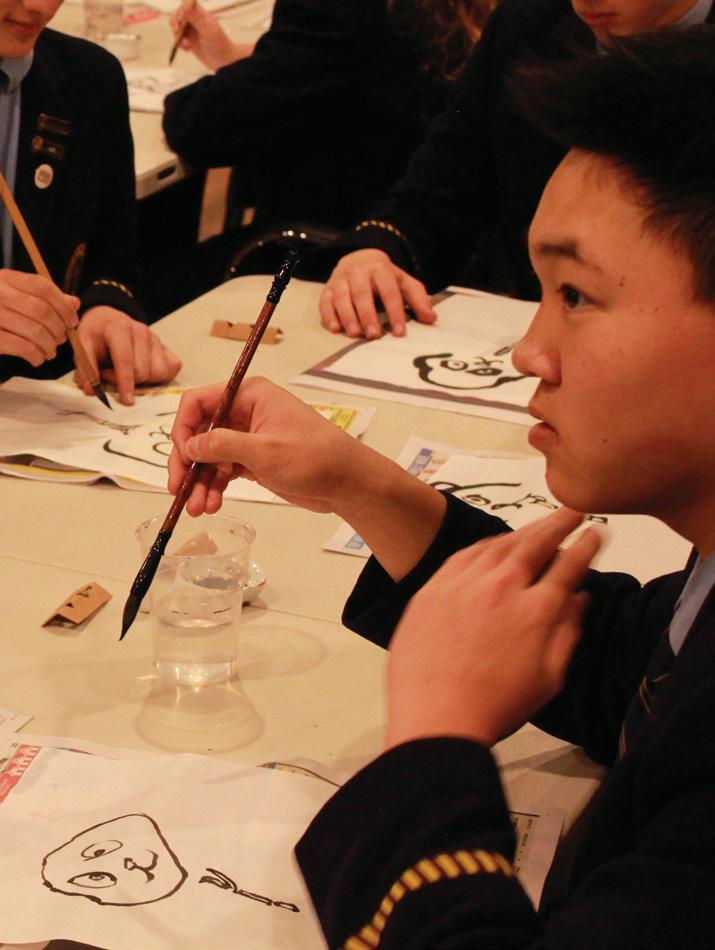
In their second year of studying French, students are encouraged to continue to practise listening, reading, viewing, writing and speaking skills in French in a range of interactions with the teacher and their peers. Students build on topical vocabulary and grammatical content studied previously, adding new linguistic features to express themselves using the
present, past and the future tense. Students learn to communicate on topics such as school life, daily routine, work and leisure activities comparing life in France and Australia. Oral communication is emphasised in the classroom with students exploring culturally relevant activities to gain a greater insight in French society and the francophone community today.
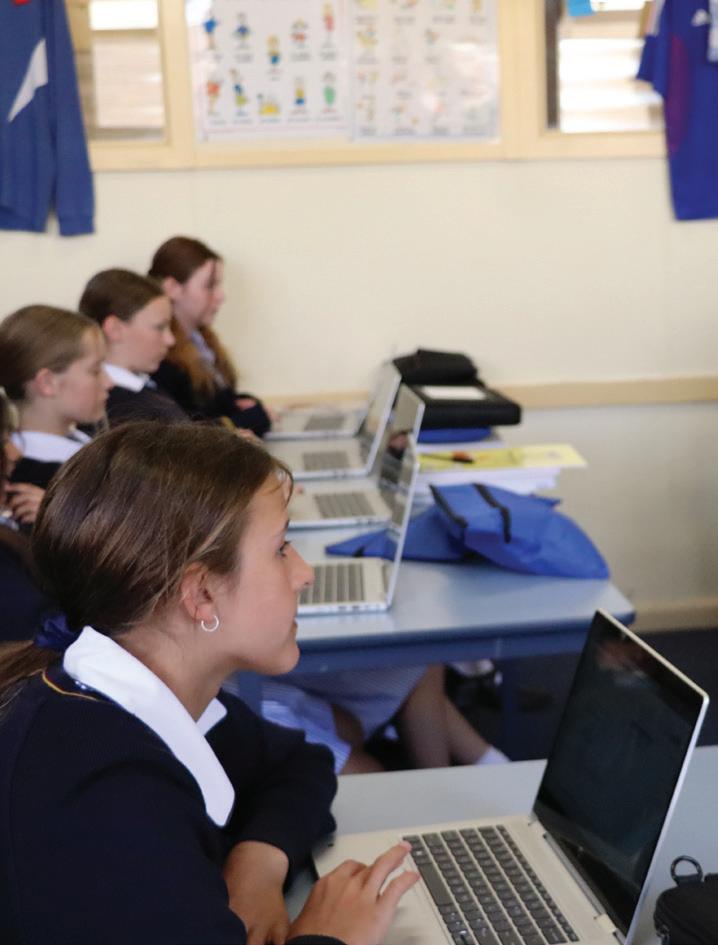
In Year 9, French learners are persistently develop their abilities in listening, speaking, reading, viewing, and writing in French through various interactions with both their teacher and classmates. They expand upon the vocabulary and grammatical structures previously acquired, incorporating new linguistic elements to articulate themselves in the present, past, and future tenses. the curriculum covers topics
like home life, daily routine, work, and leisure activities, fostering comparisons between life in France and Australia. A strong focus is placed on oral communication within the classroom, enriched by culturally significant activities designed to deepen students’ understanding of French society and the contemporary Francophone world.
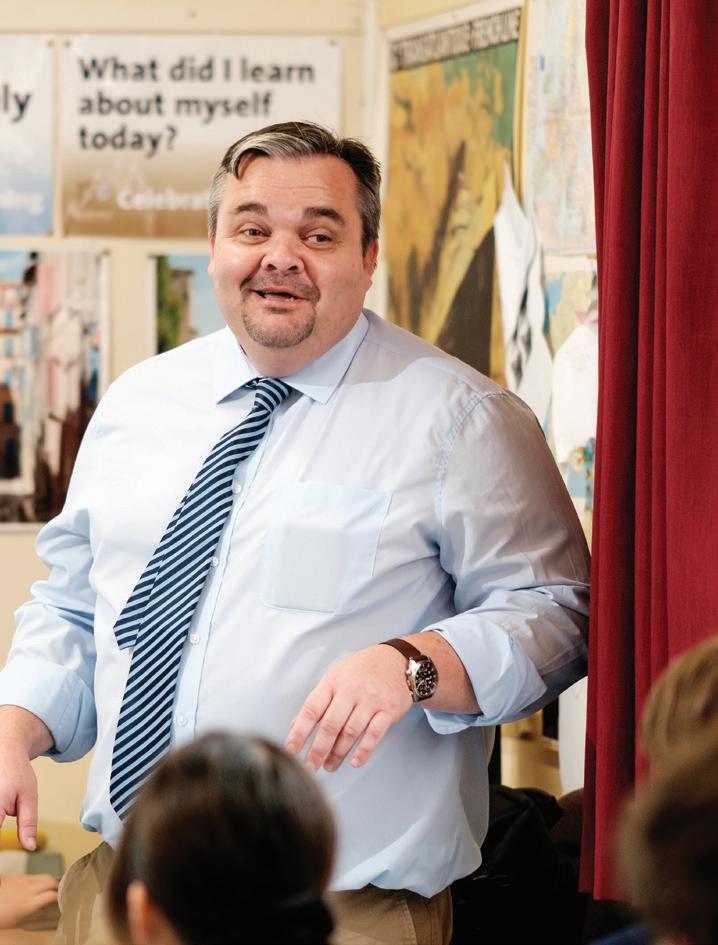
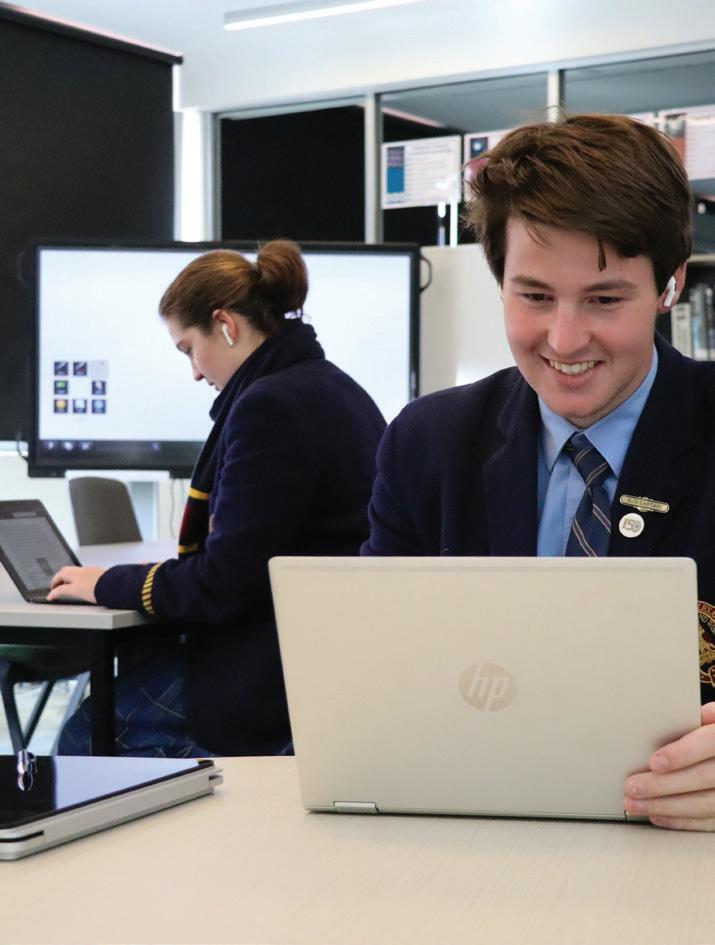

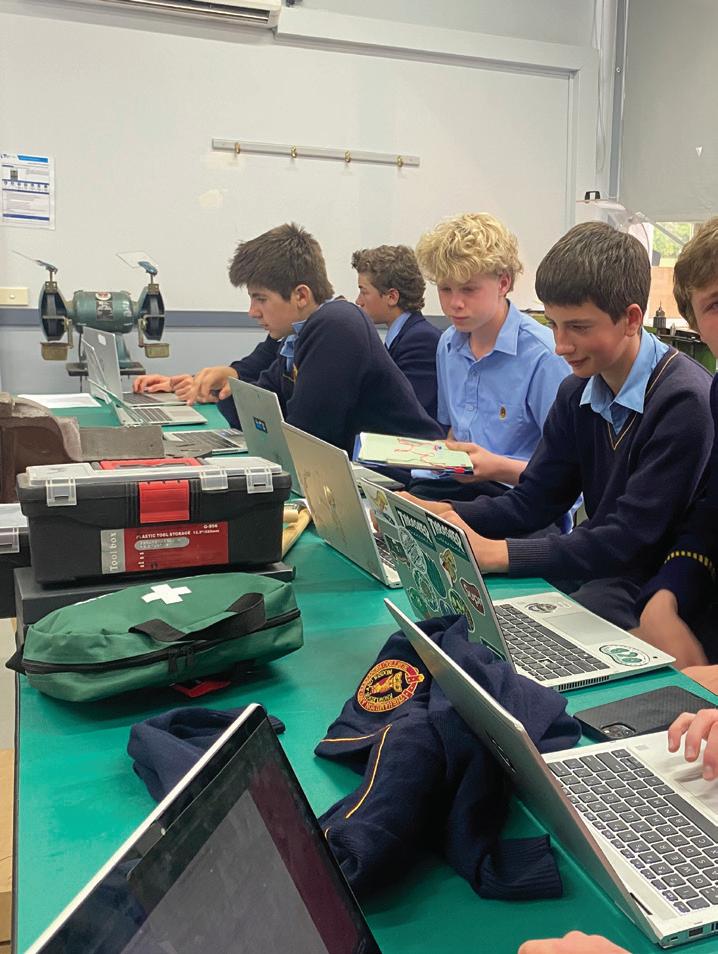
Embark on an immersive journey into STEAM (Science, Technology, Engineering, Art and Mathematics) disciplines with this hands-on course, emphasizing project-based learning. Through experiential activities, students will enhance their dexterity and coordination, applying Design and Technologies to an array of practical contexts. Students will tackle diverse projects, alternating between IoT (Internet of Things) Sustainability Projects and the creation of a 3D LED Light Cube. IoT represents a
network of interconnected electronic devices, such as Raspberry Pi Pico, Arduino, BBC Micro:bit and Circuit Playground, which collect, transmit and respond to data. Students will not only expand their skills but also devise solutions to address today’s sustainability challenges. This course is a gateway to the future of STEAM education. Students will work on a range of projects to develop their skills and address the sustainability challenges we face today.
An intellectually stimulating program with engaging studies, designed to introduce students to advanced problem solving methodologies utilising robotics, virtual worlds and digital control systems. Students will encounter an array of sophisticated design challenges, cultivating their ability to work both individually and collaboratively. Our coursework employs a variety of cutting edge tools, enhancing hands-on learning experiences. Students will have the opportunity to interact with Lego EV3 Robotics, SparkFun Digital Electronics, Raspberry Pi Computers
and Hummingbird Robots. Furthermore, they will have the chance to explore the realm of 3D printing and delve into the intriguing world of Robot Simulators. Our curriculum extends beyond hardware, immersing students in the universe of programming languages. They will be exposed to block-based and text-based languages, providing a well-rounded foundation for their future endeavours in the digital landscape.
Delve into the vibrant world of Systems Engineering with this hands-on course, featuring Materials Technologies. Students will solve problems, design solutions using advanced CAD software and create prototypes of their unique designs. Experience the thrill of working with state-of the-art machinery, including 3D printers, Laser Cutters and 3D scanning systems. Explore a variety of materials, from wood and acrylic
plastics for laser cutting to ABS and PLA plastic filaments for 3D printing. Ultimately, students will critically evaluate their work against a defined set of criteria, fostering independent assessment skills. This course is more than just a learning opportunity—it’s a stepping stone into the enthralling world of Systems Engineering.
Embark on an exciting journey through the intersection of Science, Technology, Engineering and Mathematics in this unique STEAM course that harnesses the transformative power of Drone Technologies. This comprehensive unit unravels the intriguing applications of drones across a diverse array of fields, from agriculture and business to the military and cutting-edge research. Students will delve into how drones revolutionise decision making processes and streamline routine tasks across these sectors. Students will undertake a into
a dynamic research project, investigating the current and emerging uses of drone technology. Alongside, they will master the art of drone operation, ensuring safety and gaining an in-depth understanding of the legal and ethical considerations around drone usage for personal and commercial endeavours. Hands-on experience awaits within a controlled environment, where students will discover how to program drones using the block based programming language and the versatile Python Programming language to complete.
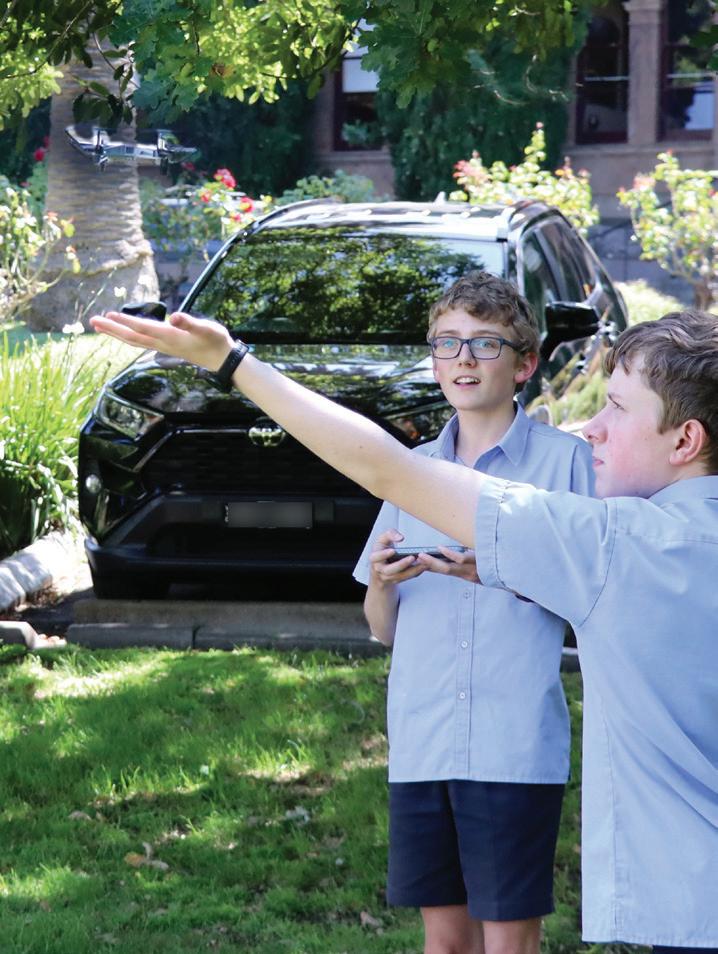
Embark on a captivating journey into the vibrant world of multimedia and web technologies in this course. Students will utilise cutting-edge software programs and high-tech peripheral devices to capture data and craft compelling designs to market ideas or products. By diving into the intricacies of photo and movie-making techniques, students will refine their skills in analysis, design, development and evaluation.
They will bring their creativity to life by creating a captivating website and producing short films, subsequently evaluating their effectiveness in the competitive marketing landscape. To further enhance their creations, students will tap into the power of 3D modelling and visual effects (VFX) tools.
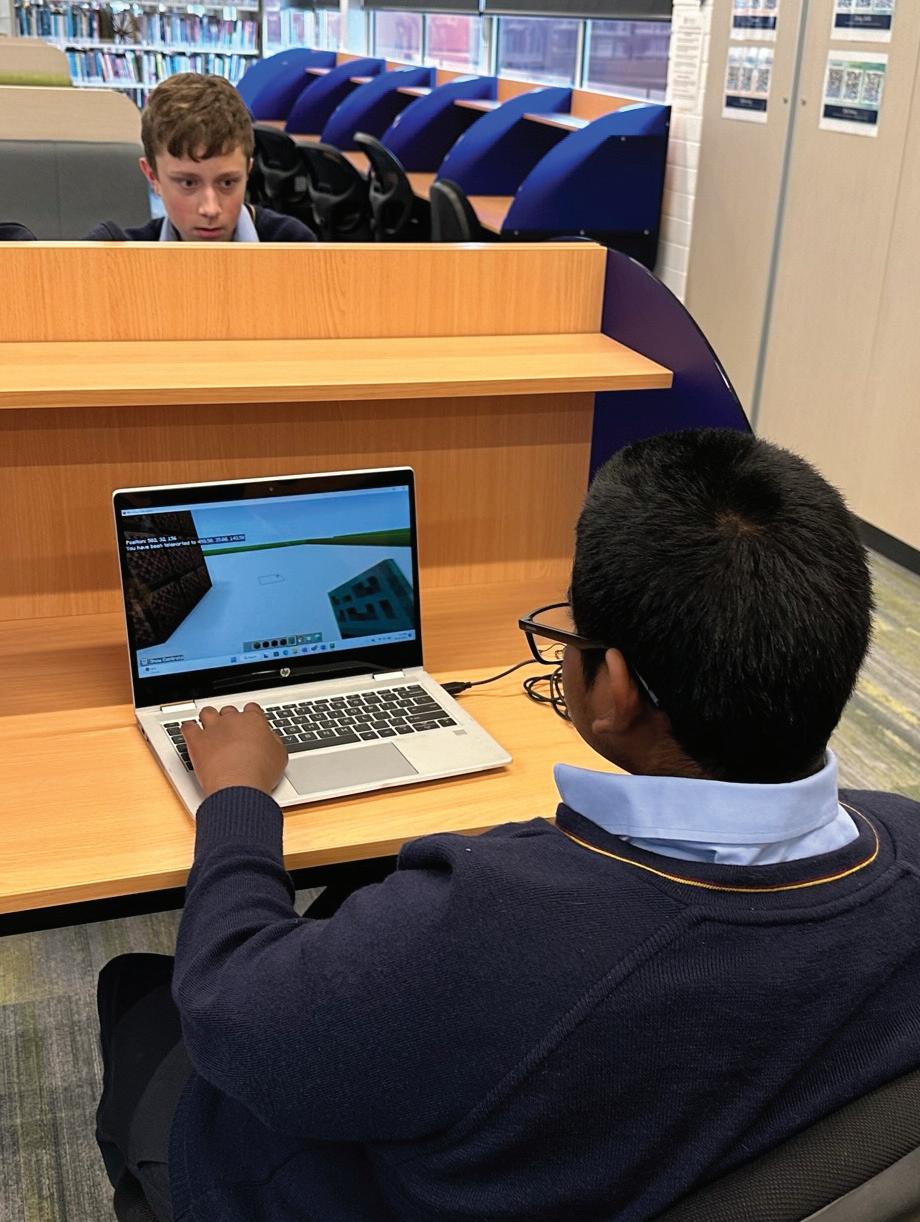
Venture into the captivating world of problem-based learning, creativity and project management with this course, leveraging computer-based and handheld games. Students will dive into game creation, programming and esports event hosting. They will encounter topics such as game design theory, gamebuilding software, the impact of gaming and
esports planning skills. The course also provides a hands-on experience with game design tools like Scratch, Microsoft Minecraft Education Edition and Microsoft MakeCode Arcade. Beyond these, students will acquire essential digital technology skills, transforming their gaming passion into practical knowledge.
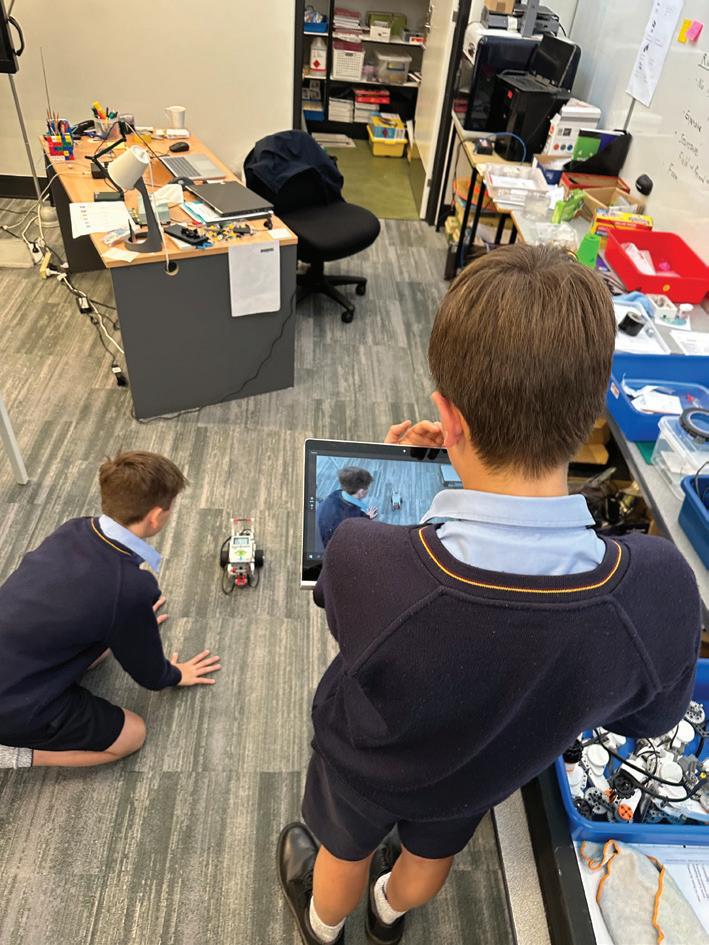

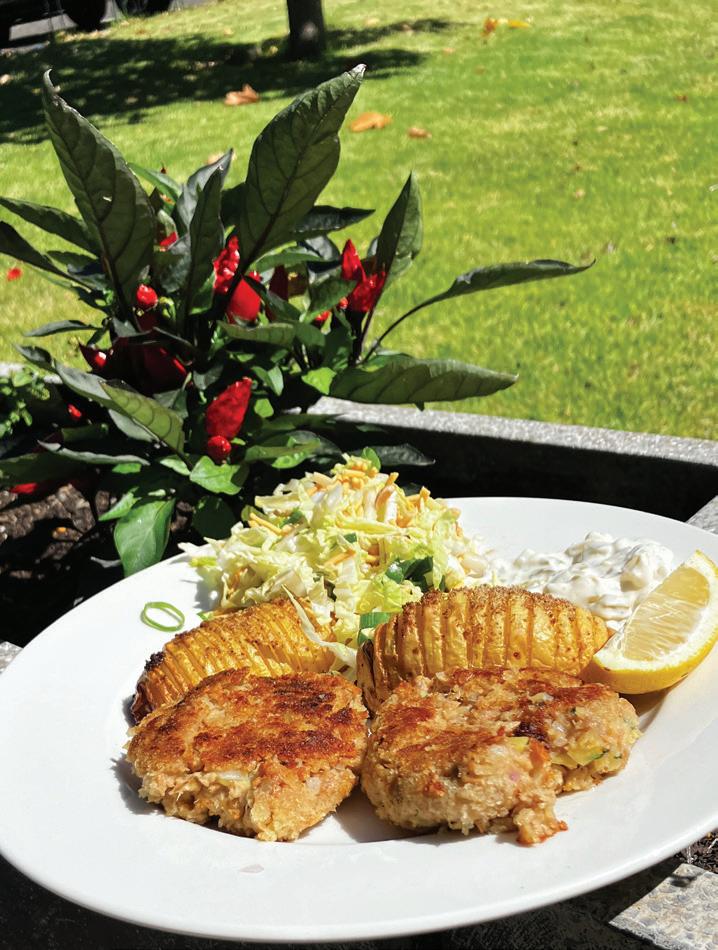
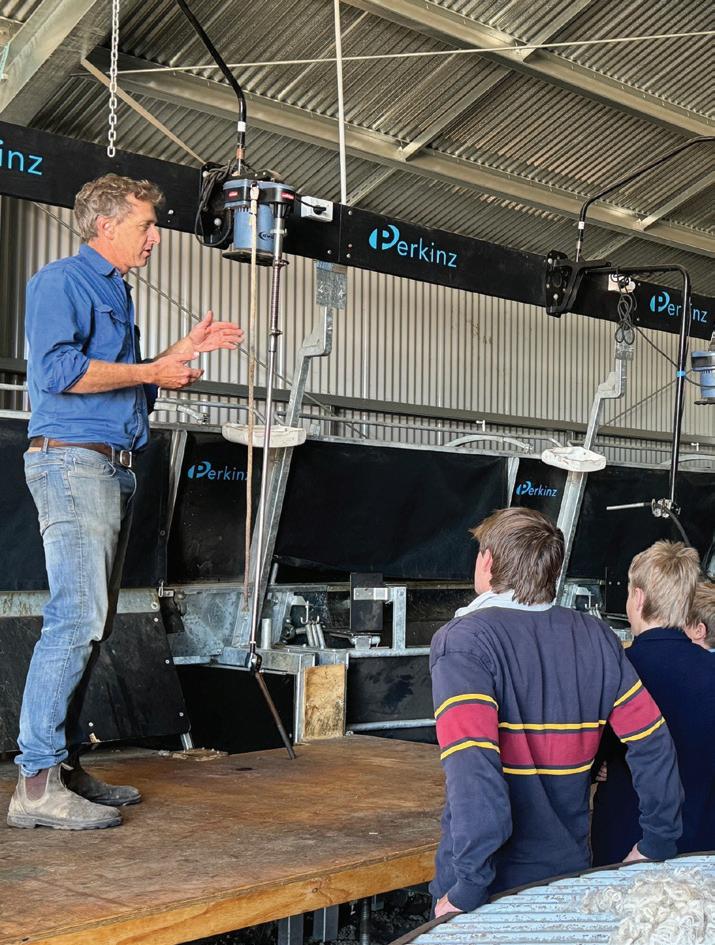
In this unit students will delve into the journey of food from its source to their plates. They will investigate how characteristics and properties of food determine preparation techniques and presentation when creating design solutions for healthy eating. They will investigate how a recipe can be modified to enhance nutrient benefits and justify decisions made. Through a blend of theory and practical activities, students
will gain a deep understanding of nutrition, sustainability and the processes that bring food to their tables. By exploring the Australian Guide to Healthy Eating, Home Economics Victoria guidelines, and the Victorian curriculum standards, students will develop essential life skills related to food choices, preparation, and responsible consumption.
Students will explore the diverse world of global foods and international cuisines. This unit covers traditions, culture, history, climate, geography of different food regions throughout the world and develop an understanding of the factors that define a country’s cuisine. Through hands-on cooking experiences, research, and practical projects, students will develop an
understanding of different culinary traditions, flavours, cooking methods and ingredients from around the world. They will learn how to adapt international recipes to align with the Australian Guide to Healthy Eating, fostering both culinary skills and nutritional awareness.
The Agricultural Studies elective explores the business and scientific elements of agriculture. In each semester-long subject, students complete a foundational unit that explores the role and importance of agriculture in society, and introduces a decision-making model that considers economic, social and ecological factors. Students then complete a plant production unit and an animal production unit, based
on enterprise undertaken in the region. Over a two-year cycle, 8 farming enterprises will be investigated. The plant production units will be pasture, cropping, forestry and horticulture. The animal production units will be wool, lamb, beef, and dairy. Students can choose to complete one or both of these electives each year.
The Agricultural Studies elective explores the business and scientific elements of agriculture. In each semester-long subject, students complete a foundational unit that explores the role and importance of agriculture in society, and introduces a decision-making model that considers economic, social and ecological factors. Students then complete a plant production unit and an animal production unit, based
on enterprise undertaken in the region. Over a two-year cycle, 8 farming enterprises will be investigated. The plant production units will be pasture, cropping, forestry and horticulture. The animal production units will be wool, lamb, beef, and dairy. Students can choose to complete one or both of these electives each year.
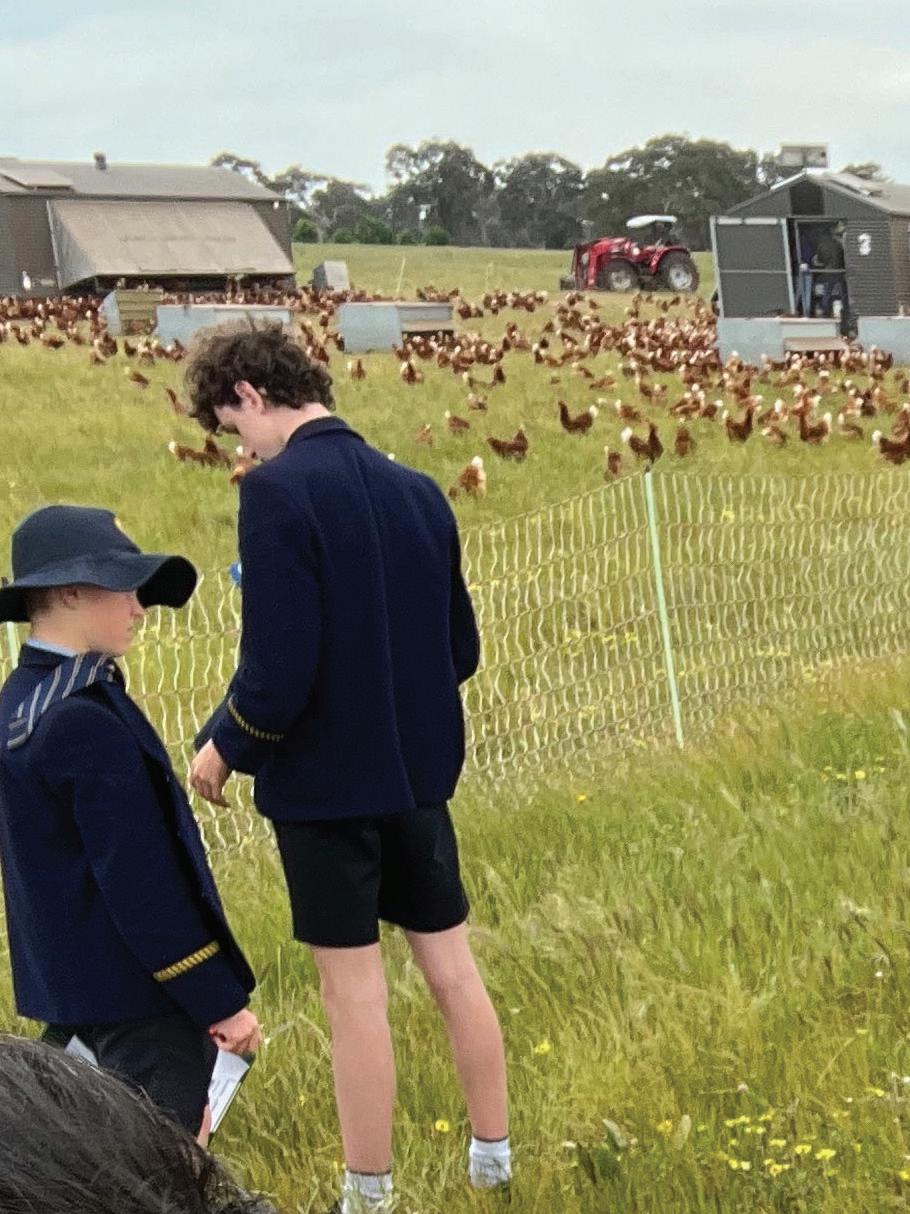
This course aims to broaden the student’s knowledge of equine management and increase the skill level of the student as a horse person. Many facets of equine management will be covered within this subject, in a predominately theory-based curriculum. Introductory investigations into topics such as the history and origins of the horse, horse husbandry, daily care of horses, as well as equine accident and
emergency issues will be covered. Students will explore career options within the equine industry, as well as study typical Olympic disciplines; Dressage, Showjumping and Horse Trials. Students will explore the cultural diversity associated with horse and human relationships, both historically and within contemporary settings.
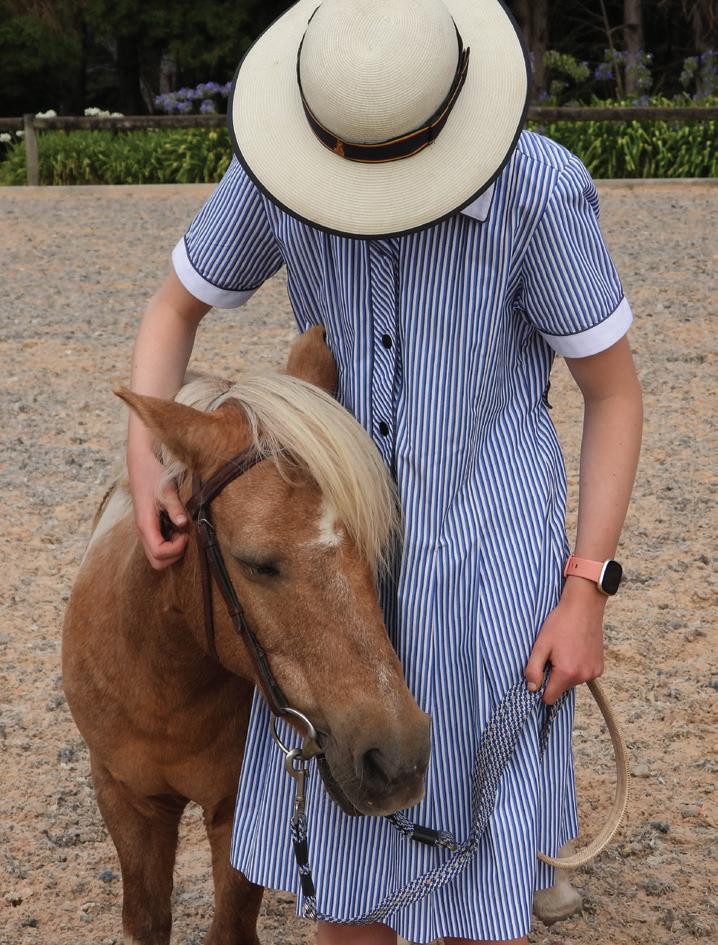
This course is designed to introduce students to the scientific principles of equine animal systems, the effective handling and riding of equine partners as well as an introduction to the equine industry. To prepare for further studies in VCE and for a career in the field of animal
science, students enhance academic knowledge and skills, acquire knowledge and skills related to animal systems as well as animal handling and develop knowledge and skills regarding career opportunities and industry expectations.

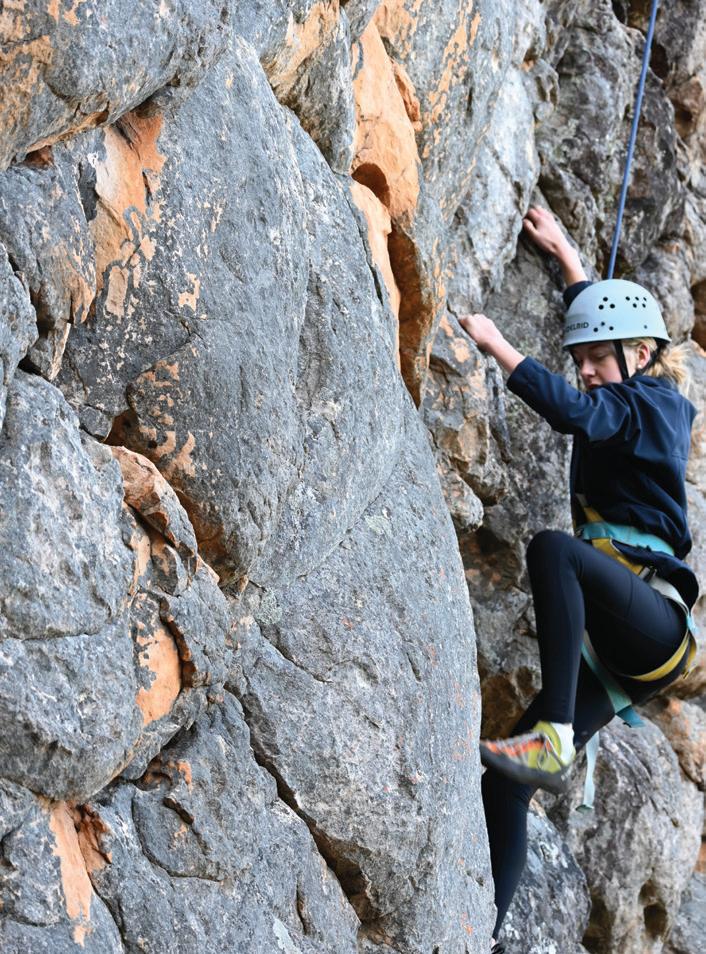
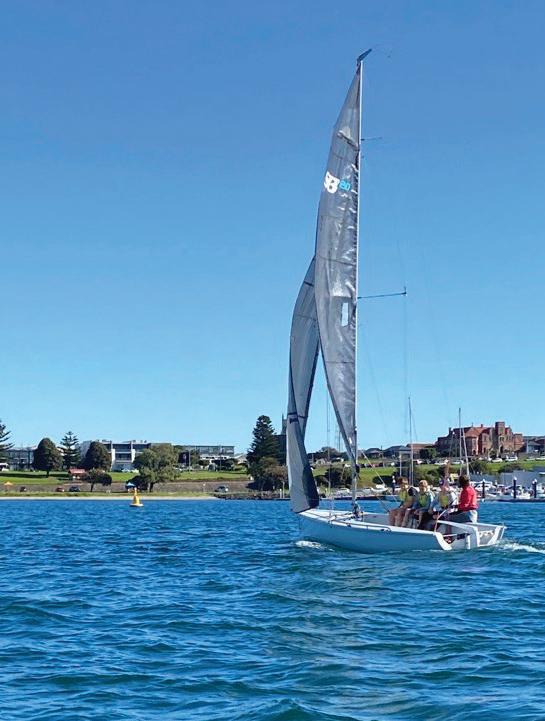

Students begin their journey in Outdoor Education with ‘land’ based practical activities such as bushwalking, adventure caving, rock climbing and mountain biking. During theory lessons they will learn about topics such as, ‘Planning and preparing for outdoor expeditions’, ‘Safe participation in the outdoors’, ‘Minimal Impact Travel and living’. Knowledge
learnt will be linked into practical fieldwork and assessment. This subject involves offsite excursions or learning opportunities. Practical trips will be conducted in local environments in Western Victoria and will include one overnight camp for two days as well as other half or full day.
This subject focuses on students planning and organising practical trips within water based natural environments. This may include stand up paddle boarding, surfing, canoeing, scuba diving, sailing and snorkelling. Theory topics will include, ‘Motivations for Outdoor Experiences’, ‘Access to Outdoor Experiences’ and ‘Technology and the Individual’s Outdoor
Experience’. Knowledge learnt will be linked to practical fieldwork and assessment. This subject involves offsite excursions or learning opportunities. Practical trips will be conducted in local environments in Western Victoria and will include one overnight camp for two days as well as other half or full day activities.
The Sports Coaching elective presents an opportunity for students to explore a sport of their choice in depth. Students will build upon and apply their skills of communication, collaboration, critical thinking, and creativity within a practical environment. Differing sporting environments, sports injury and prevention, historical perspectives, contemporary issues, media, and administration of sport are all studied over
the course. Students learn to understand their coaching style, critically analyse and improve this, and then apply their coaching method in practical lessons. In the second half of the elective, students take an historical perspective of sport, the role of technology and media, discuss contemporary issues, and create a coaching website aimed at coaching the fundamentals of their sport
This course is an excellent introduction for all students who want a holistic approach to leading within their sporting context. This course extends students in theoretical and practical knowledge and learning in Australian Rules Football, Basketball and Hockey. Students will have the opportunity to develop sports-specific skills and knowledge through specific drills and games-based
analysis. Students are challenged to learn about rules, tactics, strategies, and team play. Each student will be given an opportunity to investigate and compare a range of competition approaches and styles. Leadership development is an essential component of the course from a coach, player and administrator perspective.
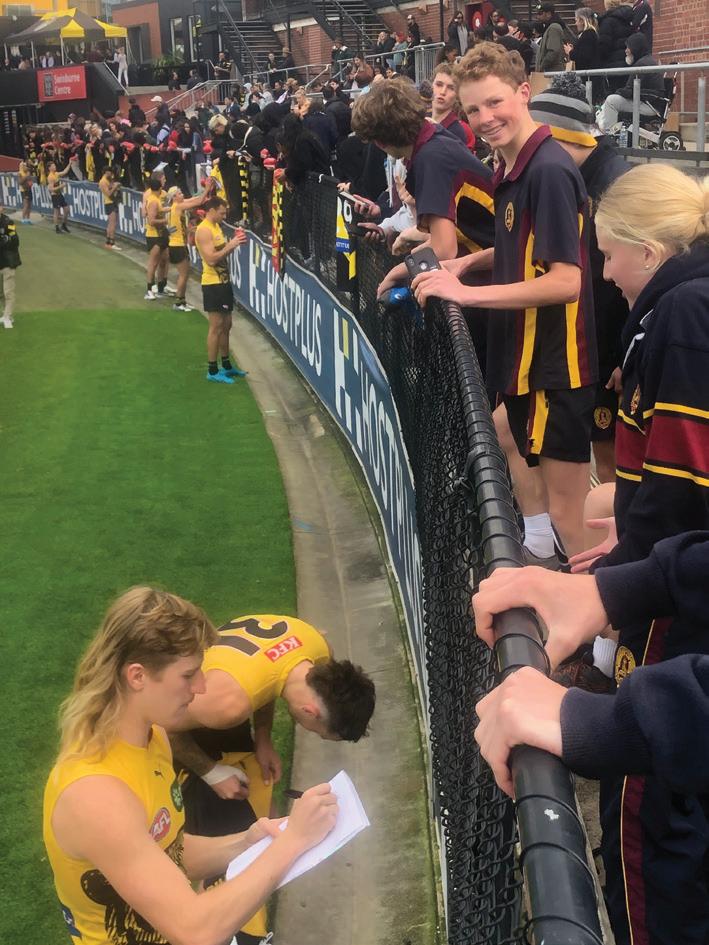
Semester long Business Management elective introduces students to key concepts in marketing, entrepreneurship, personal finance and accounting. In the Marketing and Entrepreneurship unit, students learn the significance of advertising and explore digital marketing strategies. They also delve into public relations campaigns and study the foundational principles of marketing. Entrepreneurship activities enable students to develop business plans and pitch their ideas while understanding competitive advantage and innovation. The Personal Finance and Accounting component
focuses on managing personal finances, including budgeting and understanding credit card interest rates. Additionally, students gain insight into accounting fundamentals such as the accounting equation, balance sheets, and assets and liabilities. Throughout the course, practical applications are emphasized to equip students with skills relevant to real-world scenarios. By the end of the course, students will have developed a strong understanding of essential business concepts and acquired practical skills applicable to both academic and personal contexts.
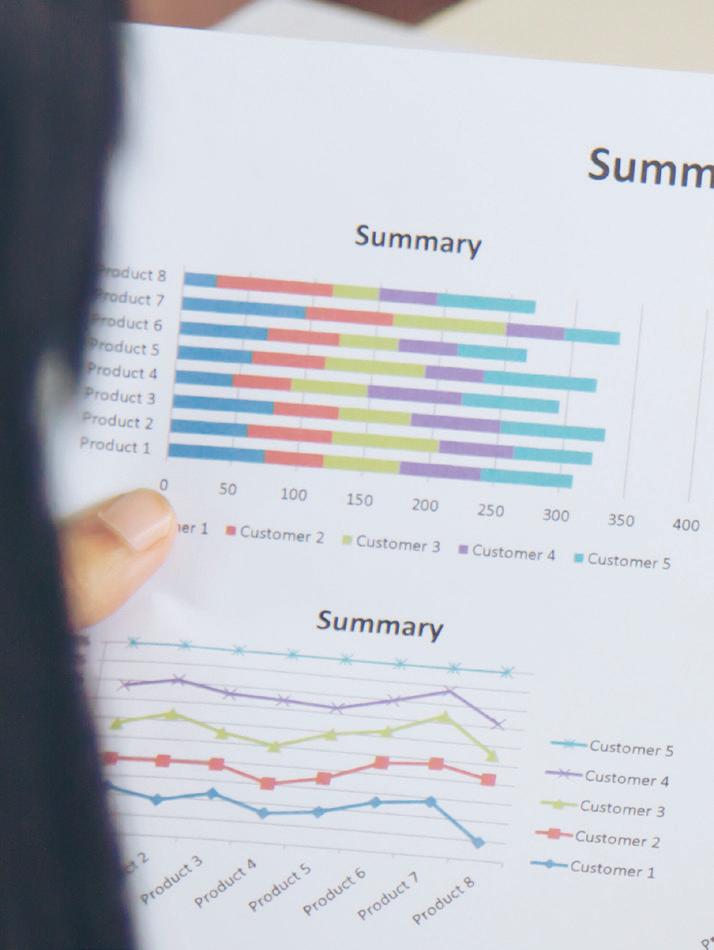
In this elective, students are introduced to a range of texts from plays to films, graphic novels to fairy tales. Texts will be selected from great literature of decades and centuries past, contemporary writers and film makers and include texts about future or fantasy worlds. Texts are designed to be accessible and appeal
to a wide range of interests. Literature’s focus is on encouraging an appreciation of different forms and genres of texts and on developing analytical skills, including close reading and creative response. This increases students’ awareness of the ways writers and producers construct texts to create and convey meaning.
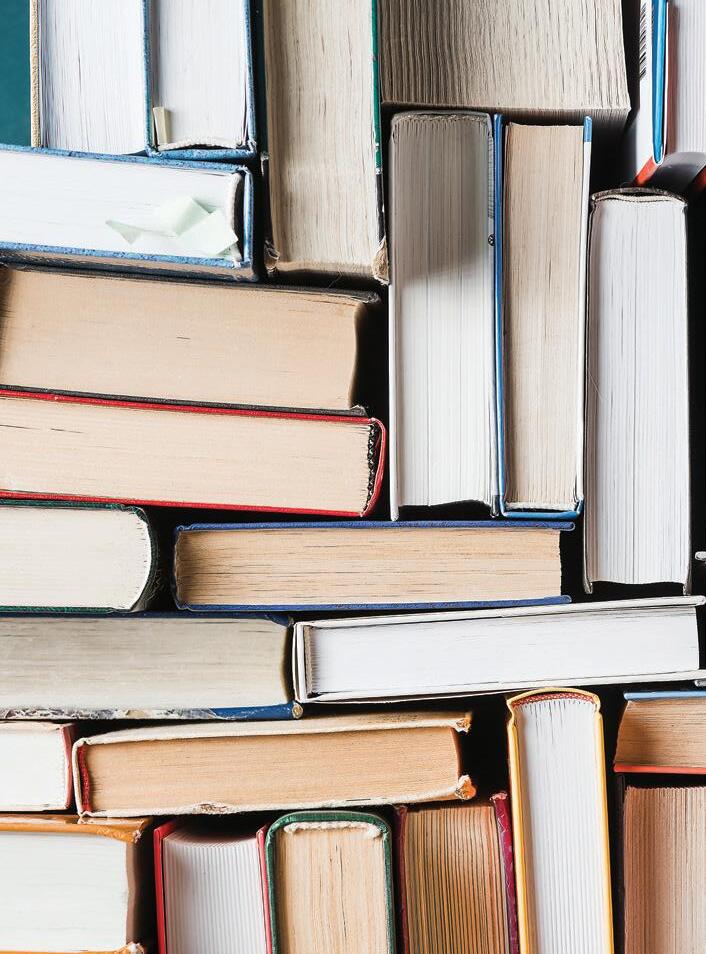


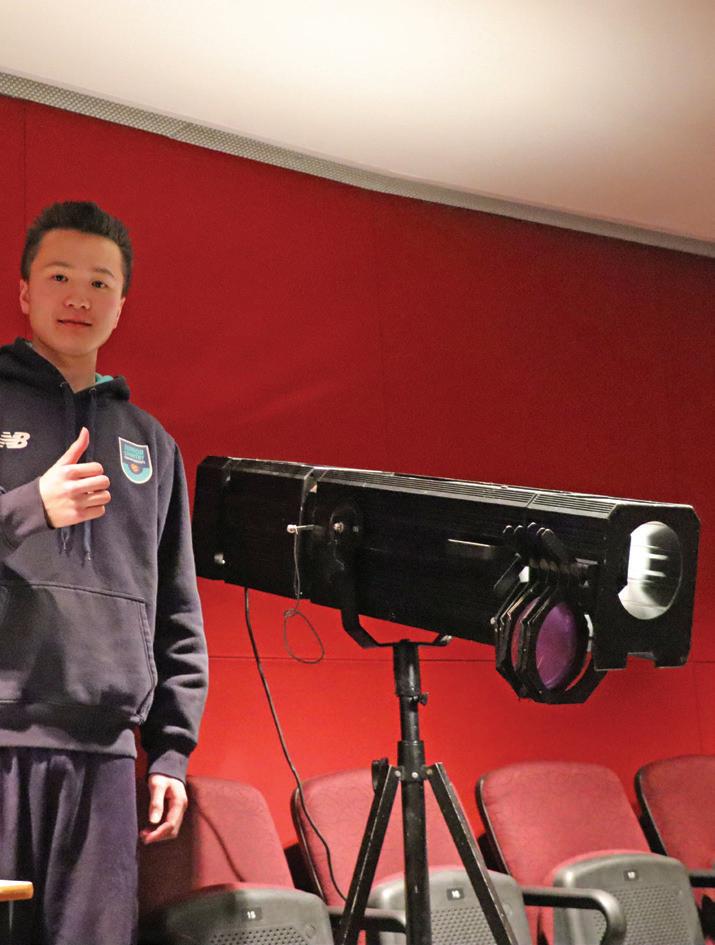
Ethics and Philosophy is an introductory philosophy course that enables students to understand various ethical systems and how they affect decision-making. The course also introduces the major strands of philosophy outside of ethics: metaphysics, logic and philosophy of mind. The study of ethics and philosophy can assist students in reaching a deeper, more balanced understanding of societies and cultures in which multiple world views co-exist. This study is designed to develop
skills in research, analysis and academic writing, helping students to become informed and engaged citizens. Throughout the course, students reflect on ethics as a system of moral principles and explore how morals, ethics and philosophical views affect the way people make decisions and lead their lives. Students grapple with ethical dilemmas such as: how to live an ethical life, how to make good decisions, how to argue well and how to avoid logical slip-ups.
Throughout the year, students engage in various units aimed at nurturing their creativity and expressive skills. They explore different stimuli, focusing on voice, movement, space, time and tension to create engaging dramatic narratives. Through practical exercises and performances, students develop characterbuilding skills and draw inspiration from diverse theatrical traditions. Additionally, students study eclectic theatre, learning about key themes and techniques from renowned playwrights and practitioners. They apply these concepts practically in performances, deepening their
understanding of character dynamics and using voice and movement to add depth to their portrayals. They also learn to use focus, tension, space and time effectively to enhance dramatic impact. Alongside their practical work, students reflect on their progress through writing tasks, analysing their performances using drama terminology. This approach helps them develop both creatively and analytically. By the end of the year, students emerge with improved communication skills and a deeper appreciation for the art of theatrical performance.
In Theatre Production, students embark on a dynamic exploration of theatrical creation. Through each unit, they delve into the realms of imagination and interpretation, investigating the intricacies of behind-the-scenes craftsmanship, assuming the roles of designers and creative minds. Engaging in activities such as sketching,
researching and designing, they delve into the realms of sound, lighting, set design, costume creation and makeup artistry. This multifaceted exploration fosters not only creativity but also essential skills in communication, teamwork and self-confidence as they navigate the creative process.
Throughout this course, students focus on extending their musicianship and instrumental performance skills, in solo and group contexts, through the development of stylistic understanding and performance conventions. They consolidate aural musicianship and theoretical knowledge whilst developing the ability to hear, perform and notate rhythmic
patterns and melodic phrases of increasing complexity. Key centres, scale forms, chords and interval types are explored for theoretical understanding. Ongoing aural comprehension exercises foster musicianship skills. Students explore and implement the process involved in composing, preparing for a performance, and performing.

Throughout this course, students develop a theoretical and practical understanding of the features of music technology and how they can be used to enhance and broaden musical understanding and appreciation. Through interacting with music technology hardware and software, they create, perform, and record an original piece of music with lyrics. Students study current and historical influences and trends in music and use technology to explore composition. They consider social, cultural, and
historical contexts, along with the roles of artists and audiences. They build aural musicianship and theoretical knowledge whilst developing the ability to hear, perform and notate rhythmic patterns and melodic phrases of increasing complexity. Through the manipulation of musical patterns and an understanding of musical form, students further develop their awareness of compositional techniques and applications.
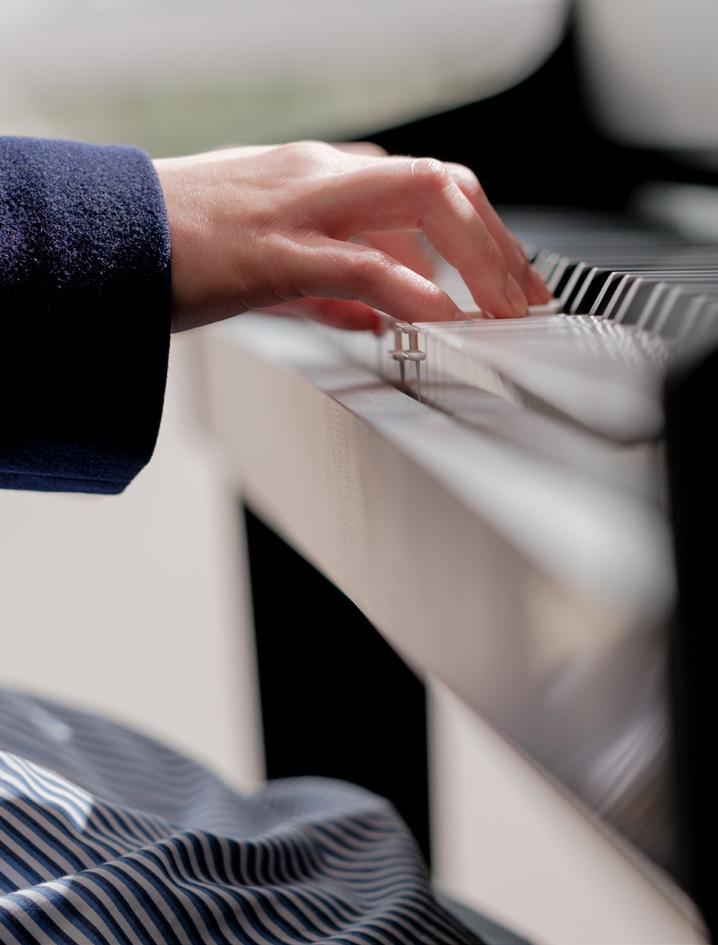
Music Production aims to foster both theoretical insight and practical skills in music technology, focusing on its applications in both live and recorded music production. Students engage with music technology hardware and software during class sessions. Through hands-on activities, they compose, perform and record original pieces of music, including lyrics. Furthermore, students delve into the technical intricacies of sound production, exploring
topics such as microphone usage and digital audio manipulation. They also explore the diverse applications of production technologies across various domains, from live music sound reinforcement and recording to gaming and media scoring. This comprehensive exploration equips students with a holistic understanding of music the role of technology in contemporary audio production.

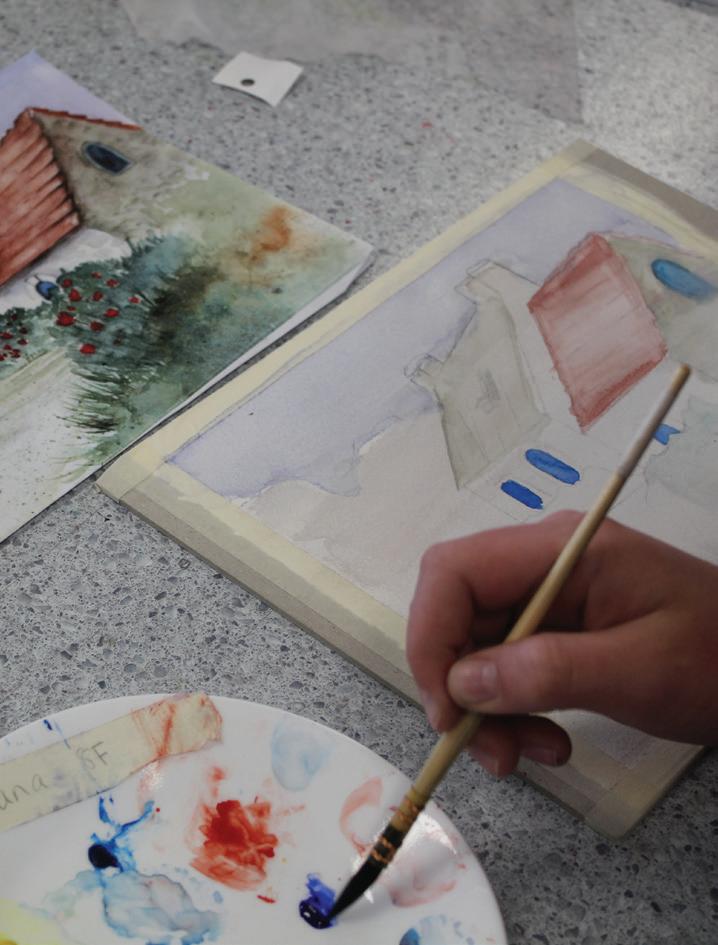
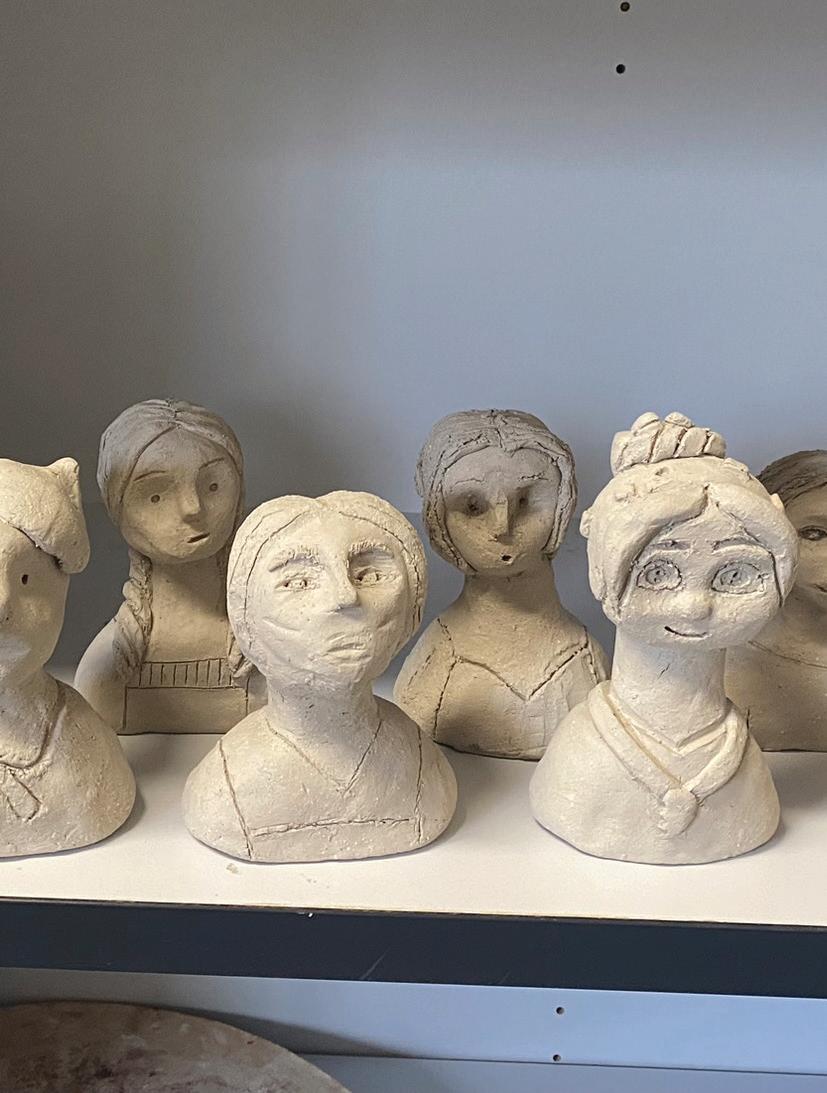

In this elective, students are introduced to a range of drawing, painting and printmaking techniques. The emphasis will be on the development of skills and the understanding of aesthetics when applied to a range of different media. Acrylic, watercolour and pastel painting will be explored in depth and each aspect will include practical application, demonstrations,
experimentation and presentation. Printmaking will include collagraph, relief and stencil processes and students will explore practical applications of each by experimentation, planning and execution. Relevant artists and artworks will be used to provide ideas and inspiration and students will gain an understanding of different art periods.
In this elective, students are introduced to a range of drawing and sculptural techniques. The emphasis will be on the development of skills and the understanding of aesthetics when applied to a range of different media. Tonal drawing and drawing from observation will be the emphasis of the drawing aspect of the course. Wire, papier mâché, cane, timber, plaster, wax, concrete, fabric and found object
sculptures will be introduced and students will gain an understanding of their inherent characteristics and properties. Students will explore practical applications of each by experimentation, planning and execution. Relevant artists and artworks will be used to provide ideas and inspiration and students will gain an understanding of different art periods.
In this elective, students will explore a range of different genres and ideas behind both traditional and contemporary photography. Learning how to take a photograph with an SLR camera and their own digital device will be the starting point for experimentation and developing an understanding of digital images. Files, resolution and practical aspects of storing
and filing images will enable students to fully understand the artistic process. Using a variety of photo editing programs will allow students to enhance and manipulate their images. Students will present a portfolio of their ideas, inspiration and images with supporting documentation outlining their creative practice for assessment.
In this elective, students look at contemporary clothing and current trends in wearable art and traditional apparel. Students are introduced to fashion illustration and conventional garment construction techniques. They will learn to sew, both by hand and with a sewing machine and overlocker. Students will gain an understanding of pattern making, enabling them to make decisions around adapting a commercial
pattern. Sustainability and recycling will be an emphasis and students will be encouraged to explore a range of responses to the issues surrounding the fashion industry. During costume making activities in the textile studio, collaboration and working as a team will be the focus. Process, along with ideas and inspiration will be documented in their Visual Arts journal.
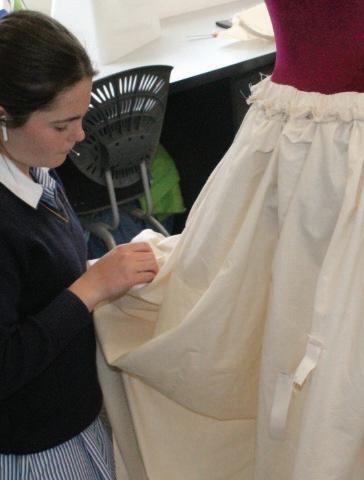
In this elective, students are introduced to the traditions and contemporary practices in product design and advertising. Through a blend of traditional drawing techniques and modern digital tools, students acquire the skills to create aesthetic designs. The course explores various aspects of design, including advertising strategies, brand development and social media campaigns, encouraging students to create visually impactful messages. Central to the curriculum is the development of a design portfolio, demonstrating students’ proficiency in generating, refining and presenting visual communications tailored to a brief and target
audience. Emphasis is placed on the ability to conceptualise and execute design solutions that address the needs and preferences of stakeholders while adhering to design principles and industry standards. Students engage in analysis of visual communications, examining how design choices intersect with historical, social and cultural contexts to convey ideas and information effectively. By fostering creativity, analytical thinking and technical proficiency, this course equips students with the skills and insights necessary to work as designers in a rapidly evolving visual communication landscape.
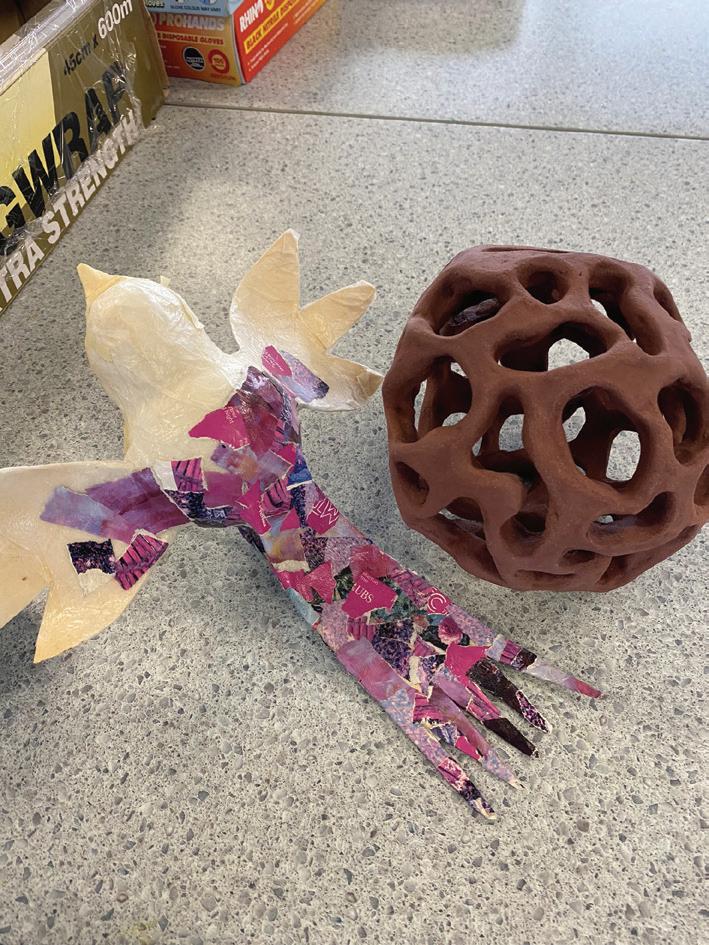
In this elective, students are introduced to the fundamental principles and practices of designing within the context of environments and interactive spaces. Students explore traditional drawing techniques and employ digital technologies to visually communicate their designs to an audience. Through handson projects and exercises, students learn to apply design elements and principles to various design contexts, including residential and commercial buildings, interiors, landscapes and interactive experiences. Emphasis is placed on developing the capacity to make informed aesthetic decisions that respond to specific design briefs and target audiences. Students engage in the analysis of advertising strategies within the realm of environmental design, gaining insights into how visual communications
can effectively convey messages and enhance user experiences in physical and digital spaces. Documentation of processes and ideas serves as the foundation for students’ assessment portfolios, allowing them to demonstrate their concepts, development and execution of design solutions. Additionally, students begin to critically evaluate design decisions within historical, social and cultural contexts, including perspectives from Aboriginal and Torres Strait Islander peoples. By integrating manual and digital drawing methods, students acquire skills that enable them to navigate design challenges and realise their creative visions across design fields. This study introduces students to the practice of architects, interior designers and other professionals shaping the built environment and interactive experiences.
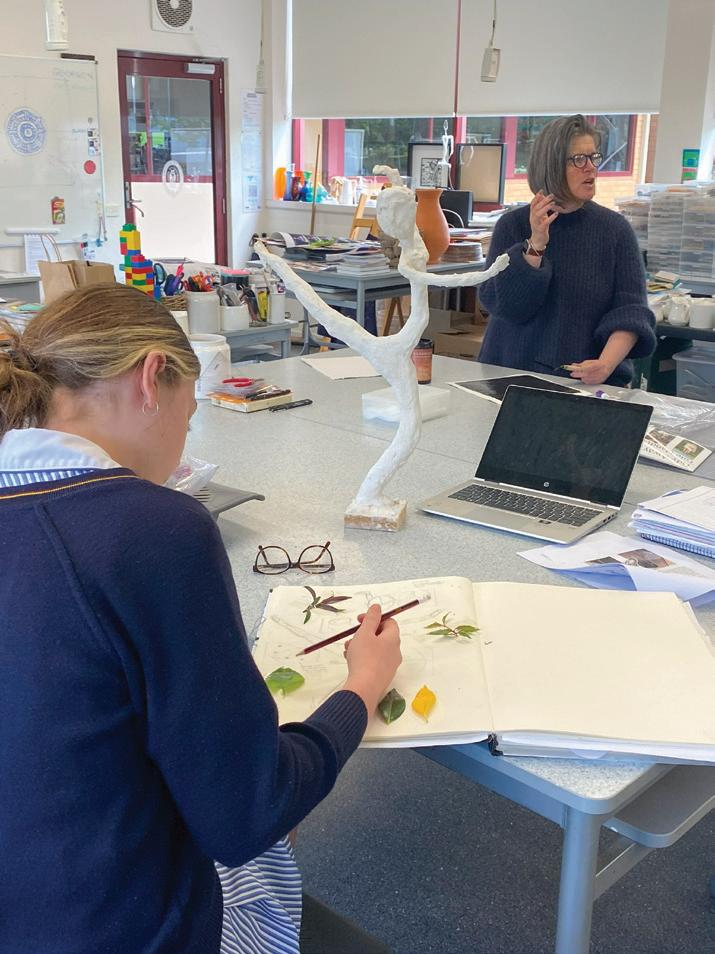
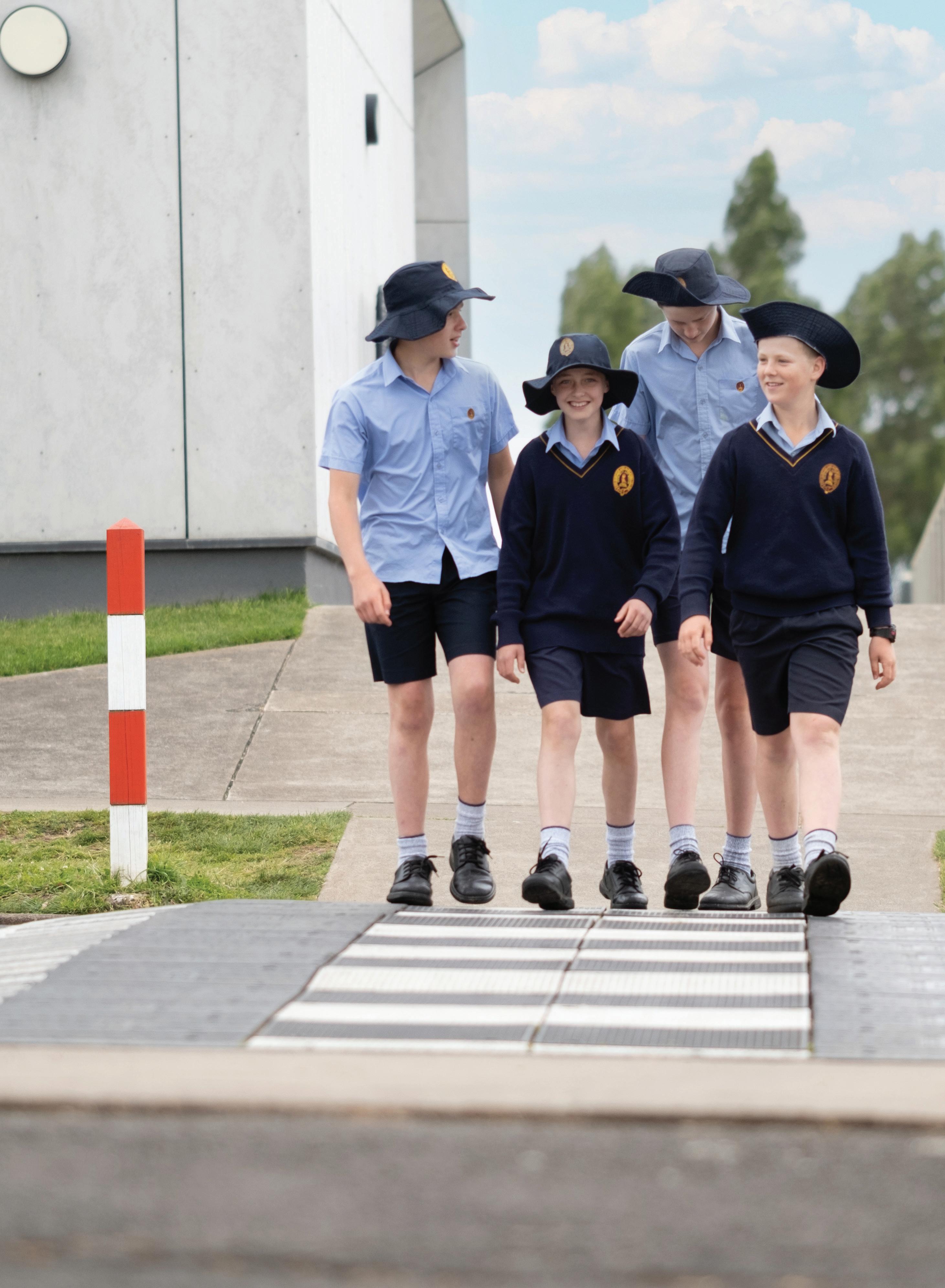
The Year 8 and 9 Explore Program is designed to cater for the changing developmental needs of middle adolescence while preparing them for the challenges of lifelong learning. The Explore program provides the opportunity to experience a wide range of subjects over two years to expand each student’s horizon and provide a unique learning experience of challenge, choice and balance. Our teaching practices enable students to develop an understanding of their passions and capabilities, while developing their skills and persistence.
At The Hamilton and Alexandra College we apply a Positive Education approach to help students improve and develop their well being. Our goal is for students to have the knowledge, skills and understanding of how to improve and develop their own wellbeing.
We believe in teaching the skills of wellbeing and teaching students how to enhance their resilience, giving them the tool kit so they can flourish during adolescence and in their adult lives.
We want students to be their best and do their best to help develop a strong sense of wellbeing which contributes not only to good mental health, but also their academic progress. These ideas underpin the teaching and learning of the Explore Program with the aim of developing student’s breadth of knowledge along with their wellbeing. I encourage each student to Explore a broad range of subjects across their subject choices.
Mr Ben Hawthorne Head of Middle Years
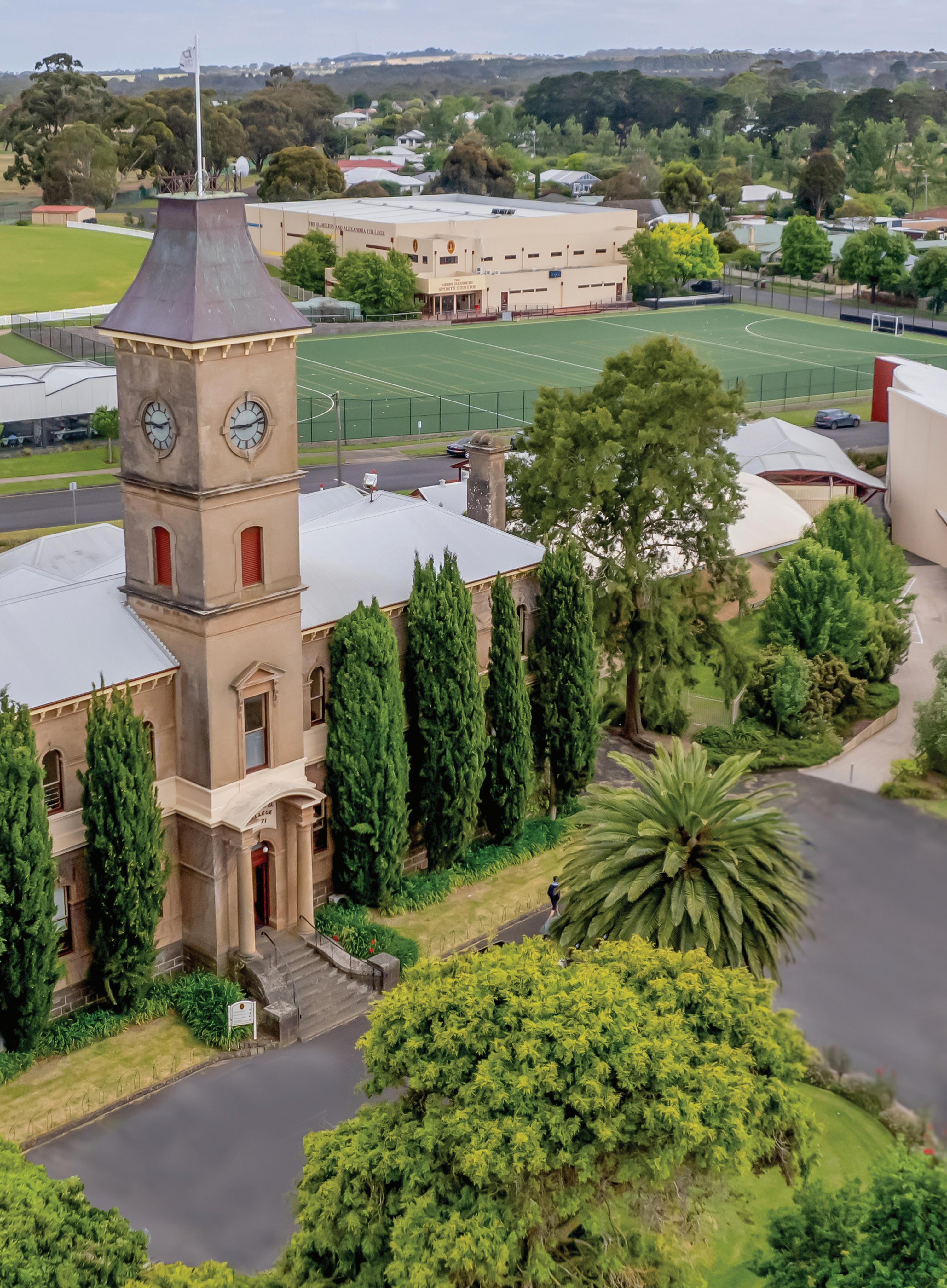

The Emerge program marks the final three years of secondary schooling, recognising our students are ready to take on responsibility for their own learning and that they require choice and agency over their study.
• In Year 10 the core curriculum of English, Maths, Science, Physical Education/Health and Wellbeing is complemented with additional periods chosen from a diverse range of subject offerings from the Year 10 curriculum, early access to our VCE program or VET courses.
• In Year 11 students continue their study of English and take an additional five subjects. Some students may choose to access a Unit 3 and 4 subject.
• In Year 12 students study English and an additional four subjects.
Our team of senior staff work closely with students, their Mentor and parents/guardians to help them select the best course of study. Consultation with the career practitioners, conversations with subject teachers and close reading of student reports all helps our staff to help each student determine their Emerge learning program.
The College has a team of excellent staff who are committed to helping our young people to develop a love of learning and foster an interest in a specialised subject area.
The Hamilton and Alexandra College’s curriculum offers each student the opportunity to engage, explore and emerge as the best they can be. We welcome the opportunity to partner with you to help each student emerge confidently into their future.
Mrs Anna Robertson Director of Learning and Teaching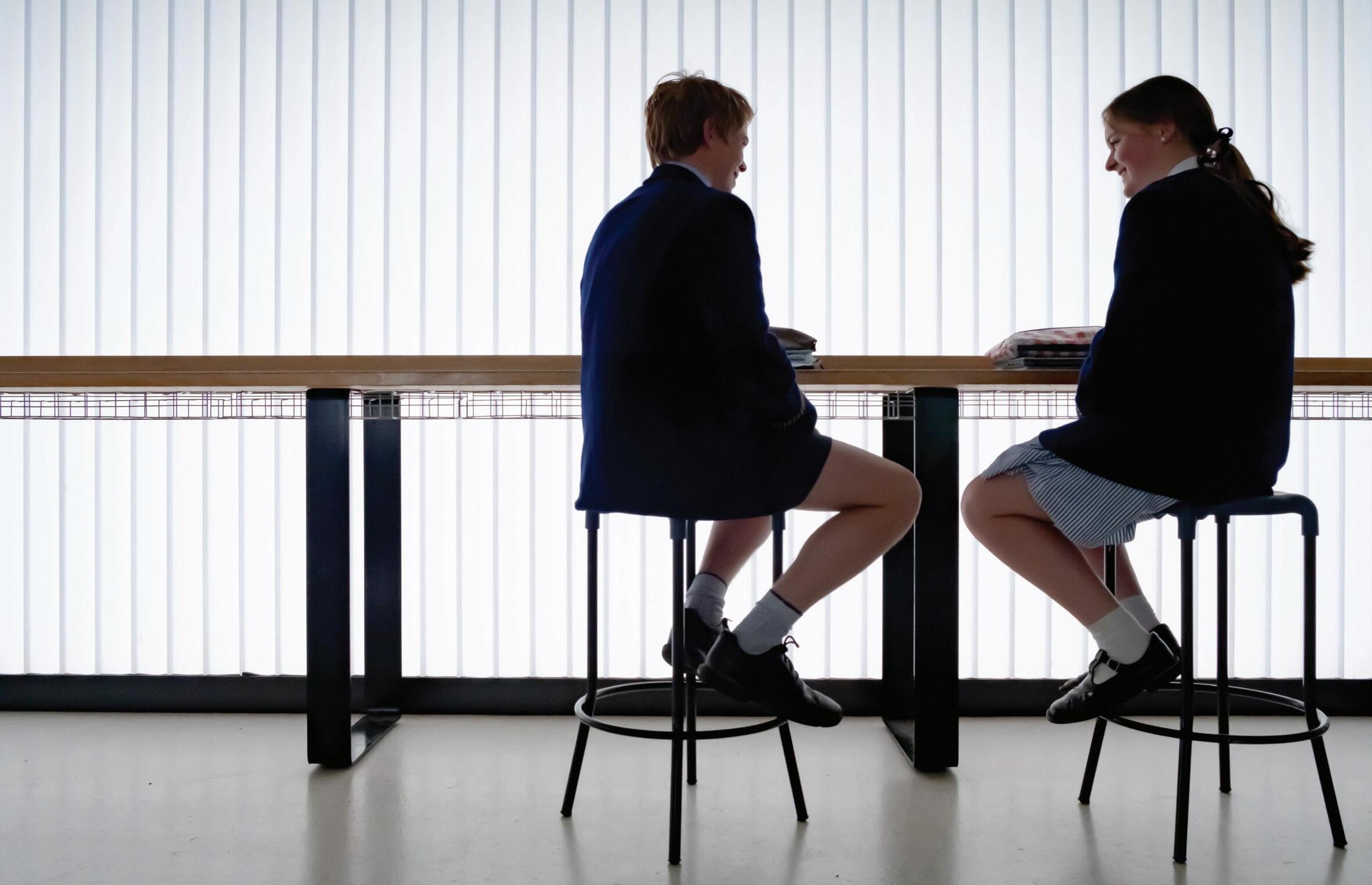
We work together as a team to provide support for College families, including assistance from subject teachers, Mentors, Head of Senior Years, a Careers practitioner and the Head of VCE as they consider a learning program that will prepare students for a future world of work or further study.
We encourage you to attend the Curriculum Information Night, review
the online information and videos about subjects on offer and attend a subject selection interview with your children.
As a parent your involvement in the subject selection process is important.
Your children will have the opportunity to meet face to face with Heads of Faculty, teachers and hear from current students about their learning.
We work hard to accommodate the needs of each student. Finding the right course for your children is important, so we would invite you to be a part of the process.
Year 10 students study a core curriculum of English, Maths, Science, PE and Health and Wellbeing, a total of 35 periods per cycle. Students are able to select subjects from Year 10 courses, VCE and VETDDS subjects for an additional 25 periods.
English/ English as an Additional Language (EAL)
Sports
Language, Culture and Society
A VCE program is a set of semester units studied over a minimum of two years. Designed to meet a student’s needs within the rules laid down by VCAA and school policy.
The “Victorian Certificate of Education” Includes general curriculum units (VCE units) + Vocational Education and Training (VET)
To meet the graduation requirements of the VCE each student must satisfactorily complete no fewer than 16 units.
Satisfactorily completed units must include:
• Three units of the common study of English (Units 1, 2, 3 and 4);
• Three additional sequences of Unit 3 and 4 studies other than English; and
• A VCE may also include units of Vocational Education and Training (VET).
The General Achievement Test (GAT) scores and the VCE study score. The GAT scores are derived from student performance in the GAT, which all students will sit mid-year. The purpose of the GAT is to give the VCAA a means of monitoring the consistency of school assessments across the State.
The VCE study score is derived from the sum of the student’s performance in all the assessments in a particular VCE study and adds a further important dimension to reporting on individual student achievement.
In addition, (separate from their VCE results) students will receive an Australian Tertiary Admission Rank (ATAR) from the Victorian Tertiary Admissions Centre which will be used for tertiary selection. The Tertiary Entrance Rank is designed specifically for use by universities for selection into their courses.
The General Achievement Test (GAT) is a test of general ability and skills in writing, mathematics, science and technology; humanities, the arts and social sciences.
There are two kinds of assessment in the VCE - external examinations and schoolassessed tasks and every study in the VCE has a mixture of external and school assessment.
Assessment for VCE studies will consist of school-assessed coursework, where each of the learning outcomes is tested by a variety of means within the normal context of classroom instruction and at least one of the assessments in a study is formal examination externally set and marked by the Victorian Curriculum and Assessment
Completed over a minimum of two years
Authority.
The school-assessed coursework marks will be statistically moderated against examination performance in both the formal study examination and, where appropriate, performance in the General Achievement Test (GAT). For those studies which produce a product as part of the school-assessed course work (e.g. Studio Arts, Product Design, Media etc.) the school assessment of the product will be moderated against performance in the General Achievement Test.
School-Assessed Coursework, also known as ‘SACs’ are completed in class and are assessed by the class teacher.
School-Assessed Tasks, known as ‘SATs’ are completed in practical based subjects during class and assessed by the class teacher.
The General Assessment Test ‘the GAT’, is completed in June by all students studying at least one 3/4 sequence.
Each 3/4 sequence will have an externally assessed examination at the end of the year (October/November)
Although it doesn’t form part of the graduation requirements for the VCE and doesn’t count towards the VCE results or ATAR, the GAT is an essential part of VCE assessment procedures. It is used by the Victorian Curriculum and Assessment Authority to check that all schools are marking to the same standard in their school assessments.
The GAT is also used by the Victorian Curriculum and Assessment Authority to check its own marking of examinations. These checks are an important part of ensuring that the VCE is fair to everyone. Therefore, if you are enrolled to do Units 3 and 4 of any study – whether in Year 11 or Year 12 – you must sit the GAT unless the Principal exempts you. There must be a good reason for this.
VTAC may use the GAT score as part of the middle band selection procedures for some courses at some institutions.
In addition to the detailed reporting of grades achieved in individual assessments
in each VCE study, there will be an overall study score out of 50 which represents the student’s total achievement in all the assessments in each study.
The advantage of the VCE study score is that it combines information about all the assessments and about the performance of the student relative to all other students. For the study scores, the State average has been set at 30 out of 50 so employers and universities can see at a glance where the student stands in relation to others in the state in that study.
The VCE study score will be reported alongside the individual letter grades on the Summary Statement of Grades. The individual Examinations and School Assessed Coursework grades will continue to give users of the Certificate an indication of the strengths and weakness of students in particular kinds of tasks. It will also help in the transferability of results among institutions and among the different states and territories.
Compulsory Study
Students must enrol in English, Literature or EAL (English as an Additional Language).
Recommendations
Six subjects in Year 11 and five subjects in Year 12. Students can choose to specialise or enrol in a broad course selection.
Minimum Requirement
Students must satisfactorily complete 16 units, including at least three units from the English group and three sequences of Units 3 and 4 in studies other than English. The school expectation is that students will aim for satisfactory completion of all the units they undertake.

ADMISSIONS RANK TERTIARY
Studying Unit 3 and 4 in Year 11
Students may study one Unit 3 and 4 subject while in Year 11 if:
- They have attained a B+ average in the equivalent Year 10 subject throughout Year 10 Semester 1;
OR
- They have met additional prerequisite requirements that may be specific to the subject;
OR
- The Units 1 and 2 sequence is not offered at Year 11 and the student has demonstrated a suitable standard for entry into that subject at Units 3 and 4 level.
The ATAR places students in rank order based on their performance in school assessed coursework and external examinations (in Units 3 and 4)
Once awarded, the ATAR is used to determine entry into University courses and some TAFE courses.
Year 10 Mathematics is a course that caters to the varying abilities and interests of students, offering three different levels of maths. Based on the Victorian Curriculum, the course aims to equip students with the necessary mathematical concepts and skills required for further studies and everyday life. Students will build on their understanding of algebra, geometry, probability and statistics and measurement, using technology to support their learning. They will also develop critical thinking and problem-solving skills, interpret and communicate mathematical information in a variety of forms and explore mathematics’ application in different contexts. The course aims to foster an appreciation of the beauty and usefulness of mathematics, with each level offering differentiated challenges and opportunities for growth.
Approval must be granted by the Head of Faculty and Director of Learning and Teaching.
Excel Program
The College Excel program is designed to extend high achieving students in Years 1011 and provide them with the support and experiences to obtain academic excellence.
Studying a Unit 1 and 2 Subject in Year 10
Students who have achieved a B+ average or equivalent in Year 9 subject may apply to study Unit 1 and 2 in Year 10.
Students will be required to attend an interview and approval must be granted by the Head of Faculty and Director of Learning and Teaching.
The Australian Tertiary Admission Rank (ATAR), is calculated by the Victorian Tertiary Admissions Centre (VTAC) from the student’s Study Scores for Units 3 and 4 VCE studies. It is the primary means of deciding which tertiary courses the student will be offered. Unlike the Study Score, the ATAR is a means of comparing students across studies, rather than within them. By doing this, it can give an overall account of student ability.
The cross-study comparison of students involves a statistical treatment of each student’s Study Scores; after which these are be added in a simple way to derive each student’s ATAR.
The focus is on developing students’ knowledge, understanding and skills in listening, reading, viewing, speaking, writing, and creating in preparation for VCE studies. Students study and respond to a range of texts both visual and written. The texts are specifically selected to expand students understanding of local and international issues and ideas that will give further
context in VCE. Oral and written responses to texts reflect an analytical approach, detailed reflection, and research. A range of different styles of writing are produced, each with different purposes and for different audiences, that help students consider their deliberate choices in their written and vocal communication for greatest effect.
The English as an Additional Language (EAL) curriculum is central to the learning and development of all young Australians for whom English is not their home language.
In Unit 1 and 2, English students engage in reading and viewing texts with a focus on personal connections with the story. They discuss and clarify the ideas and values presented by authors and how they relate to their own lives and the world around them. Students develop and strengthen inferential reading and viewing skills, and consider the ways a text’s vocabulary, text structures and language features construct meaning. Students read and engage imaginatively and critically with mentor texts under a thematic framework to inspire and generate ideas for their writing, and as models for effective writing. They experiment with language to demonstrate insight into ideas and effective writing strategies and then reflect
Through learning EAL, students build their capacity to communicate confidently and effectively.
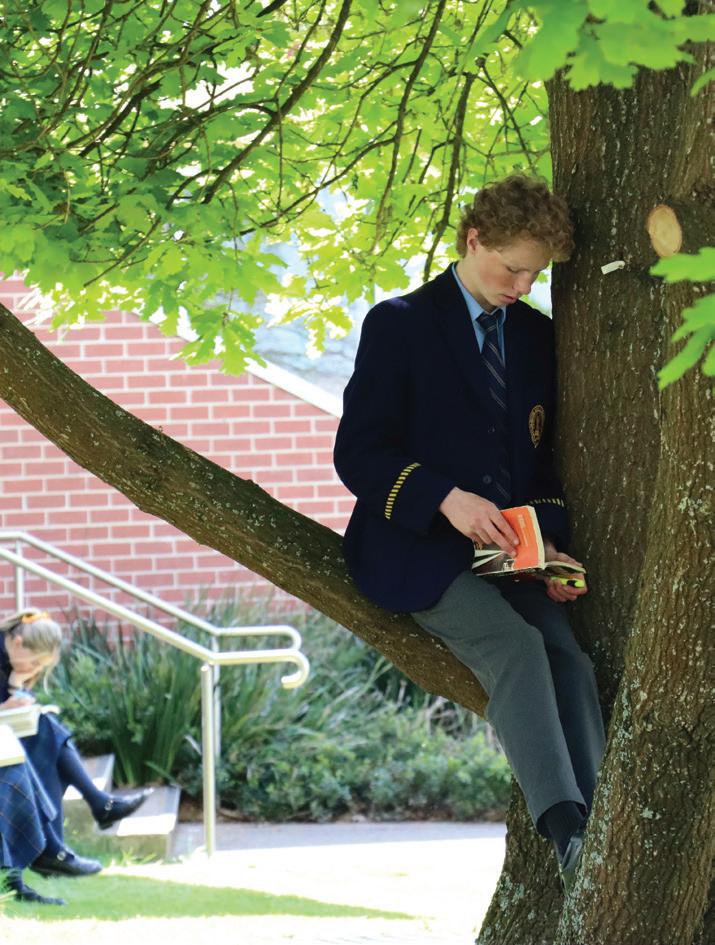
on the deliberate choices they have made in a commentary. In Unit 2 students develop their reading and viewing skills, including deepening their capacity for inferential reading and viewing, to further open possible meanings in a text, and to extend their analytical writing in response to text. Students then consider the way arguments are developed and delivered in many forms of media. Through the prism of a contemporary and substantial local and/or national issue, students read, view and listen to a range of texts that attempt to position an intended audience in a particular context. They explore the structure of these texts, including contention, sequence of arguments, use of supporting evidence and persuasive strategies.
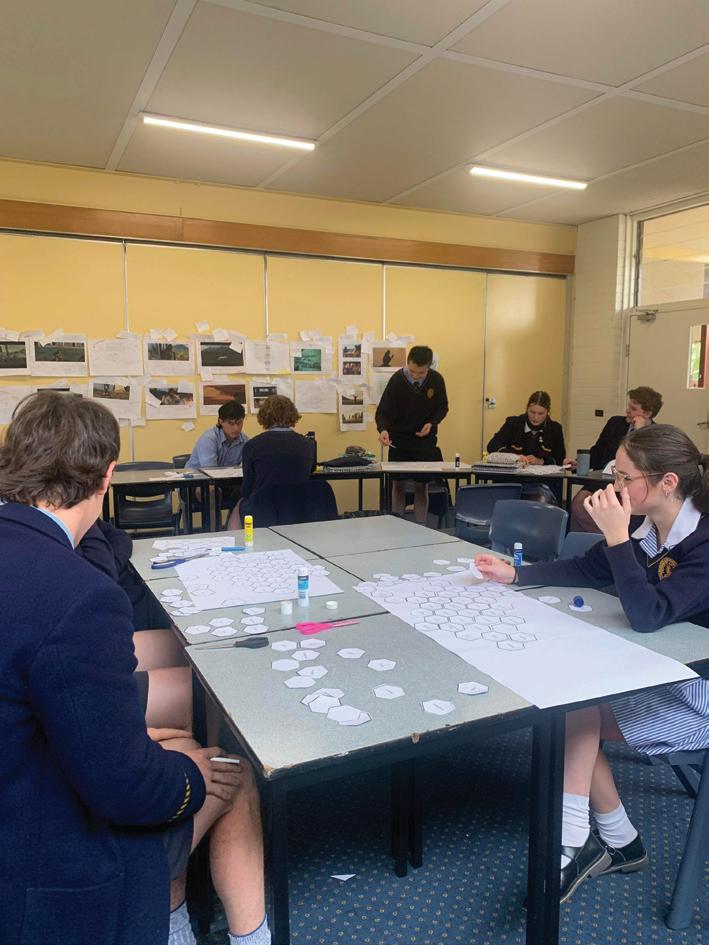
In the first of four areas of study, students apply analysis strategies to critically engage with a text, considering its dynamics and complexities. They analyse ways authors construct meaning and consider how it is received. Students then go on to practice and produce sustained written pieces. All students are provided with opportunities to practise and extend and EAL students are provided with a contextual framing of the text through a listening task that explores historical, cultural and/or social values relevant to the text.
Secondly, students read and engage imaginatively and critically with mentor texts under a thematic framework to inspire and generate ideas for their writing and as models for effective writing. They experiment with language to demonstrate insight into ideas and effective writing strategies and then, reflect on the deliberate choices they have made in a
commentary. Next students further consolidate their capacity to critically analyse texts. They engage with the dynamics and explore the explicit and implicit ideas and values presented. Sustained analytical writing about a text provides students with opportunities to engage with and challenge ideas and to enhance their use of organisational structures such as formal essays. In the final area of study, students analyse persuasive texts that debate a contemporary and significant issue. Students read, view and/ or listen to a variety of texts from the media and develop their understanding of the ways in which arguments and language complement one another to position an intended audience in relation to a selected issue. Students consider the purpose and context of each text, the arguments and the ways written and spoken language and visuals are employed to influence and/or convince an intended audience.
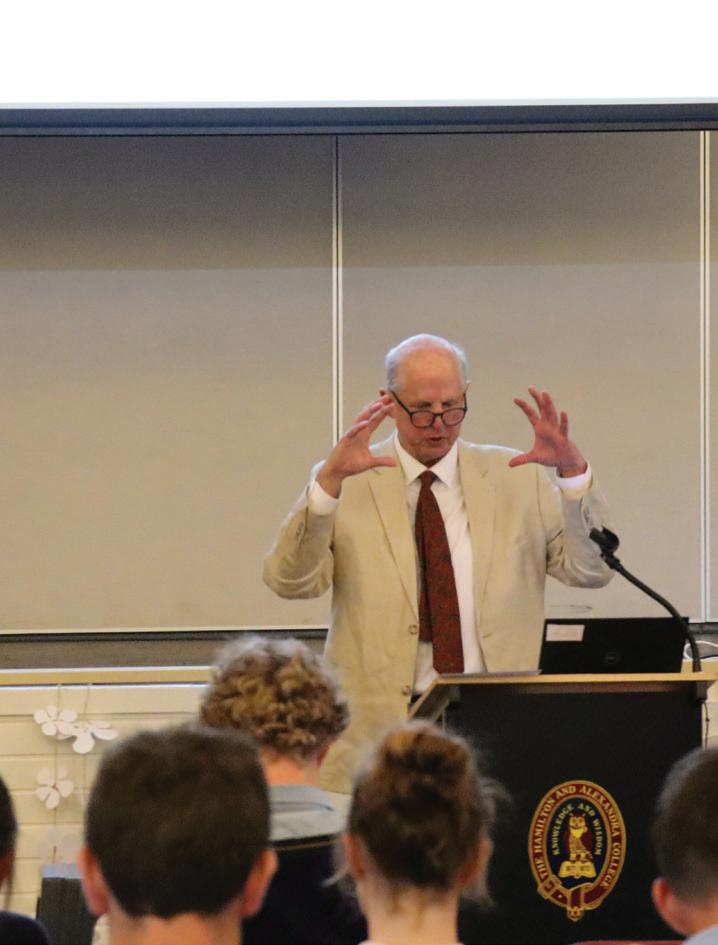

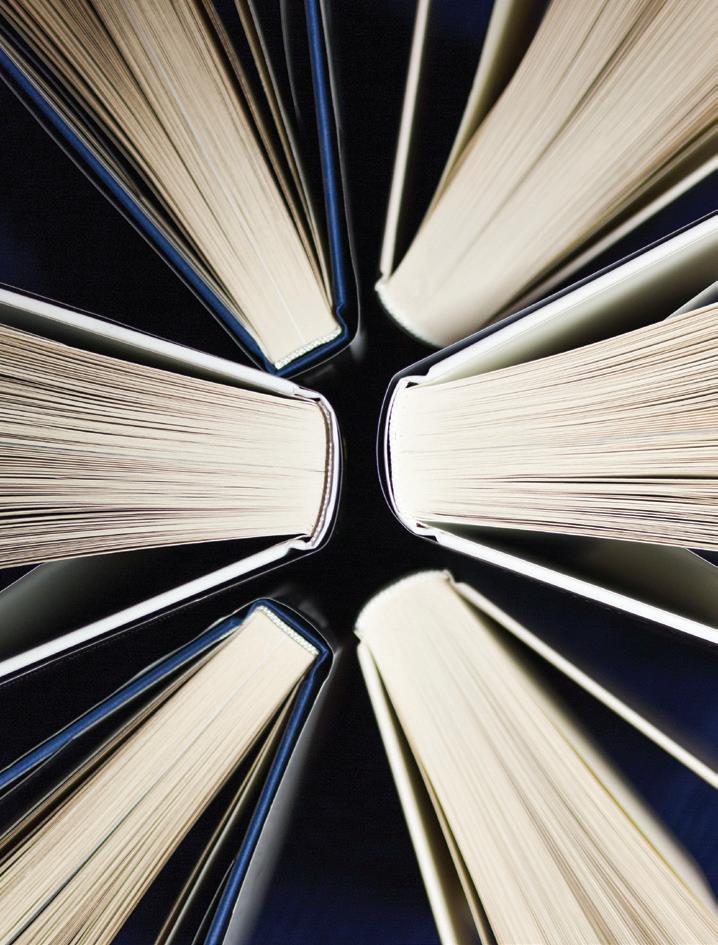
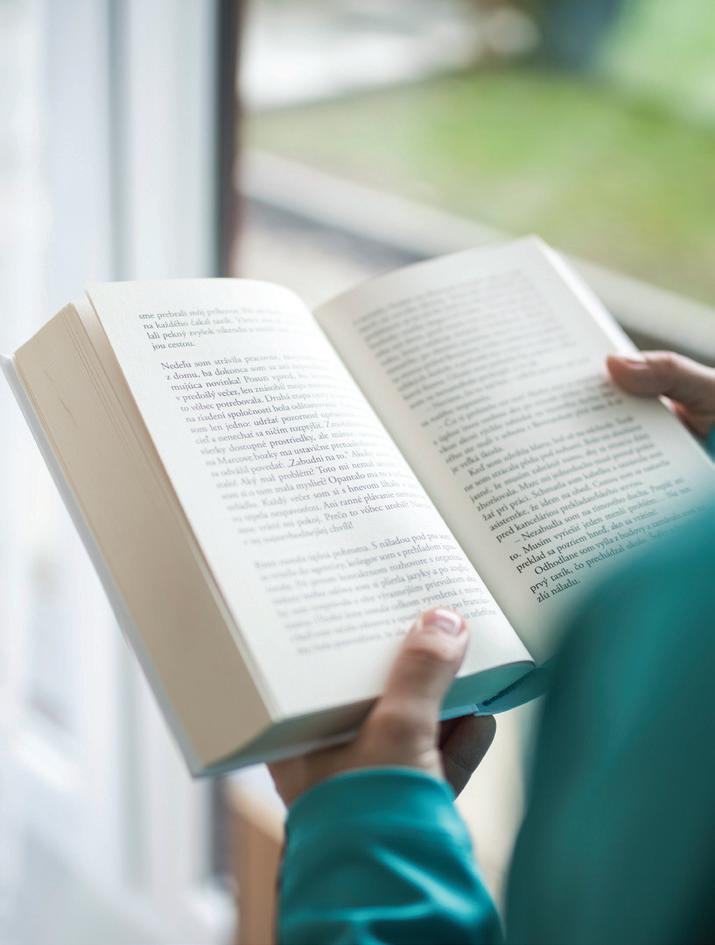
In the first half of the year, students explore the way writers use language, structure, and imagery to position readers to contemplate issues such as ‘good’ and ‘evil’. We discuss and explore the age-old concept of villains and heroes in literature. Through poetry, film, graphic novels and plays, students will gain an appreciation of the way in which, despite change, some concepts are constant. The focus of Literature is to encourage an appreciation of different forms and genres of texts and on the development of analytical skills and an awareness of the ways writers and producers construct their texts to create and convey meaning. Students develop their knowledge and
understanding of different ways of reading and creating literary texts drawn from a range of historical, social, cultural, and personal contexts. Students analyse the relationships between language, text, contexts, individual points of view and response. In the second half of the year, students deepen their understanding of literary perspectives, conventions, and storytelling traditions. A range of literary forms are considered; fiction, non-fiction, adaptations, oral, written, multimodal, verse, prose, and film. The significance of ideas and the distinctive qualities of texts are analysed through detailed textual study.
Students consider how language, structure and stylistic choices are used in different literary forms and types of text. They consider both print and non-print texts, reflecting on the contribution of form and style to meaning. Students reflect on the degree to which points of view, experiences and contexts shape their own and others’ interpretations of text. Students explore the concerns, ideas, style and conventions common to a distinctive type of literature seen in literary movements or genres. They engage with the ideas and concerns shared by the texts through language, settings, narrative structures, and characterisation, and they experiment with the assumptions and representations embedded in the texts. Students explore the voices, perspectives and knowledge of Aboriginal and
Torres Strait Islander authors and creators. Students acknowledge and reflect on a range of Australian views and values (including their own) through a text(s). Within that exploration, students consider stories about the Australian landscape and culture. They focus on the text and its historical, social and cultural context. Students reflect on representations of a specific time period and/or culture within a text, exploring the text to understand its point of view and what it reflects or comments on. They identify the language and the representations in the text that reflect the specific time period and/or culture, its ideas and concept. Students develop the ability to analyse language closely, recognising that words have historical and cultural import.
Students focus on how the form of a text contributes to its meaning by constructing close analysis of that text. They reflect on the extent to which adapting the text to a different form, and often in a new or reimagined context, affects its meaning, comparing the original with the adaptation. By exploring an adaptation, students also consider how creators of adaptations may emphasise or minimise viewpoints, assumptions and ideas present in the original text. Students focus on the imaginative techniques used for creating and recreating a literary work. Students use their knowledge of how the meaning of texts can change as context and form change to construct their own creative transformations of texts. Students draw inferences from the original text
in order to create their own writing. In their adaptation of the tone and the style of the original text, students develop an understanding of the views and values explored. They reflect critically on the literary form, features and language of a text, and discuss their own responses as they relate to the text, including the purpose and context of their creations. Students also focus on a detailed scrutiny of the language, style, concerns and construction of texts. They attend closely to textual details to examine the ways specific passages in a text contribute to their overall understanding of the whole text. They write expressively to develop a close analysis, using detailed references to the text.
(incorporating VCE Foundation Mathematics)
Foundation Mathematics at Year 10 is a yearlong course designed to allow students to build confidence and consolidate their skills in Mathematics in preparation for Unit 1 and 2 General Mathematics. This course incorporates VCE Foundation Mathematics which focuses on problems encountered in practical contexts
in everyday life at home, in the community, at work and in study. Throughout the academic year, students study consumer arithmetic, statistics, linear relations, Pythagoras’ Theorem, geometry, trigonometry, probability and measurement. The course requires the use of the TI-Nspire CAS.
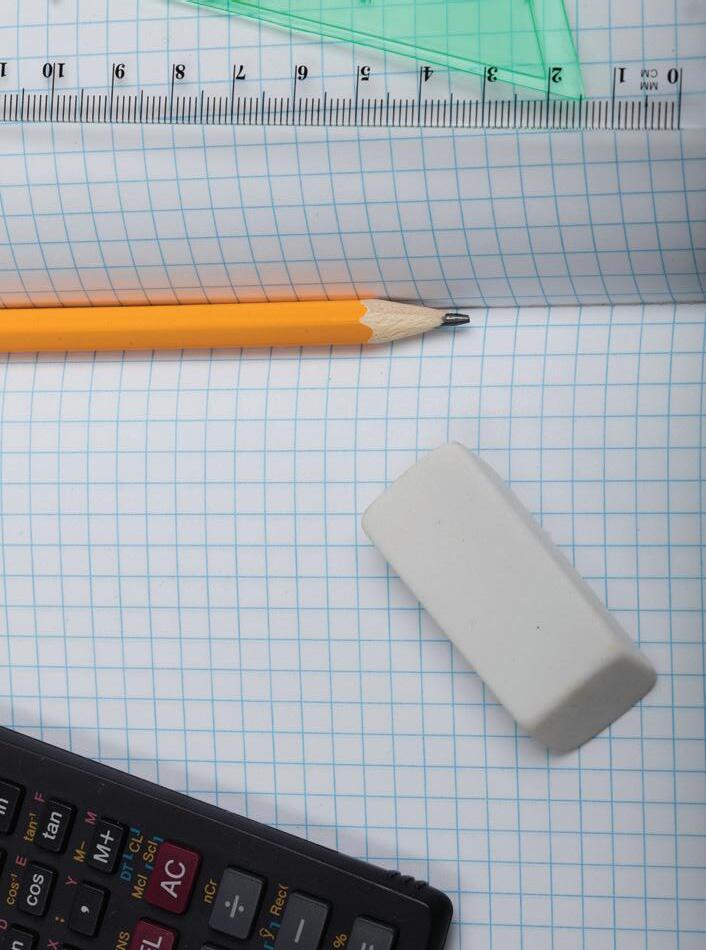
Mainstream Mathematics at Year 10 is a year-long course that is designed to prepare students for studies in Unit 1 and 2 General Mathematics and aims to help students become self-motivated confident learners through practice and active participation in relevant and challenging experiences. Students who achieve a high standard in their assessment tasks may be eligible to study Unit 1 and 2 Mathematical
Methods. The course is structured according to Level 10 of the Victorian curriculum. Throughout the year, students study Linear Relations, Indices, Surds, Trigonometry, and Quadratic Algebra, Measurement, Statistics, Probability, and Quadratic Graphs. Whilst the use of the TINspire CAS is integrated throughout the course, students are also required to develop fluency without the use of technology.
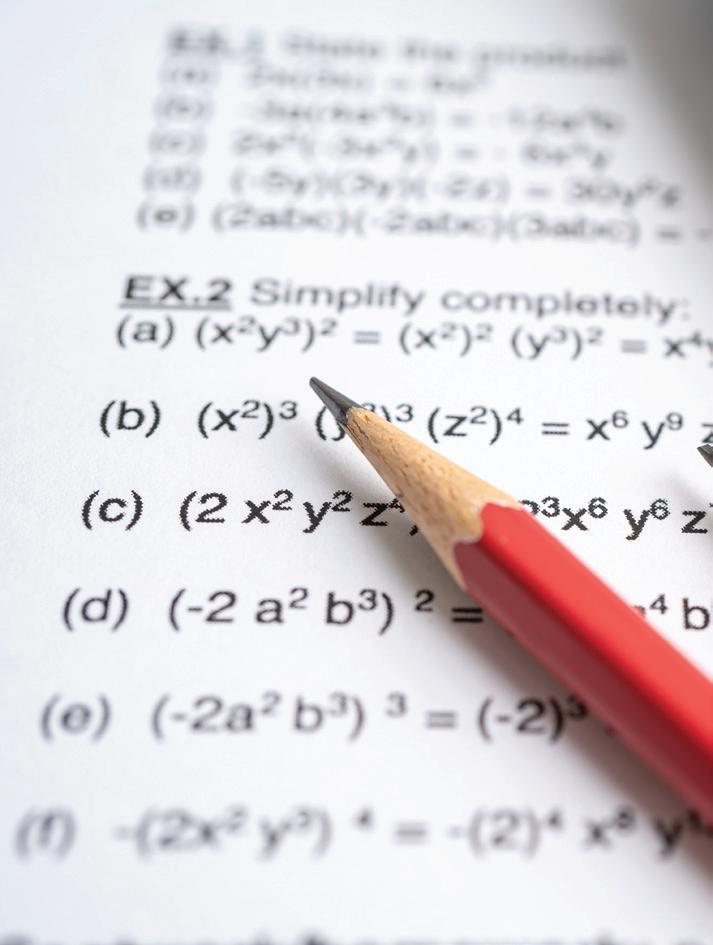
Enhanced Mathematics at Year 10 is a year-long course designed to prepare students for Unit 1 and 2 Mathematical Methods and Unit 1 and 2 Specialist Mathematics studies. The course aims to cultivate strong mathematical thinkers and is structured according to Level 10 of the Victorian curriculum, incorporating extension topics from Level 10A. Throughout the year,
students study linear and quadratic relations, trigonometry, indices, statistics and probability. Students enrolled in this mathematics program typically exhibit a high level of proficiency and enjoy a challenge. Whilst the TI-Nspire CAS is integrated throughout the course, students are also expected to develop fluency without the use of technology.
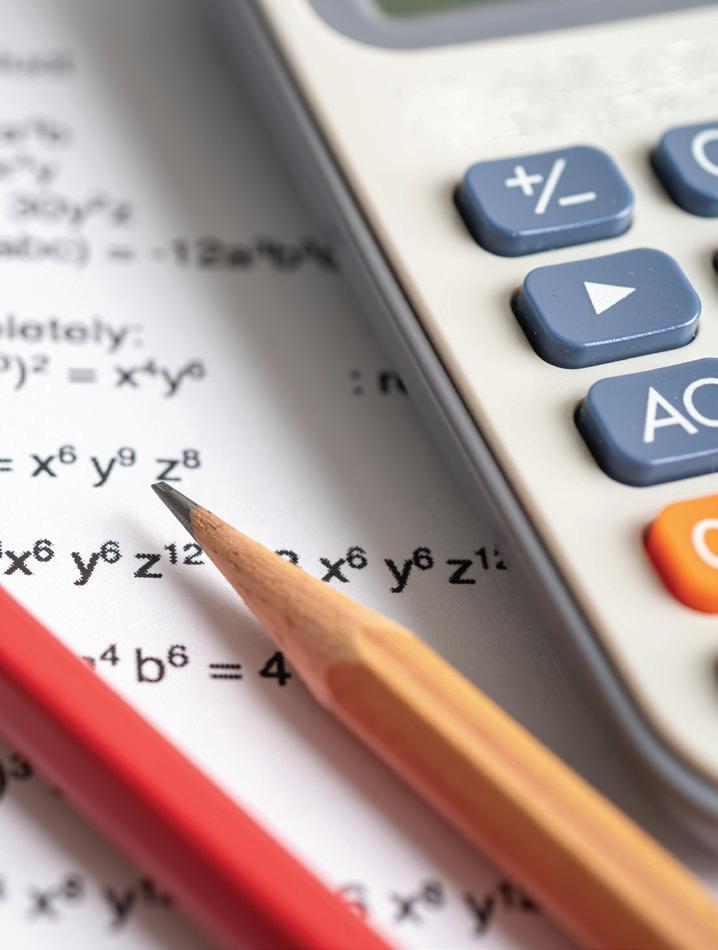

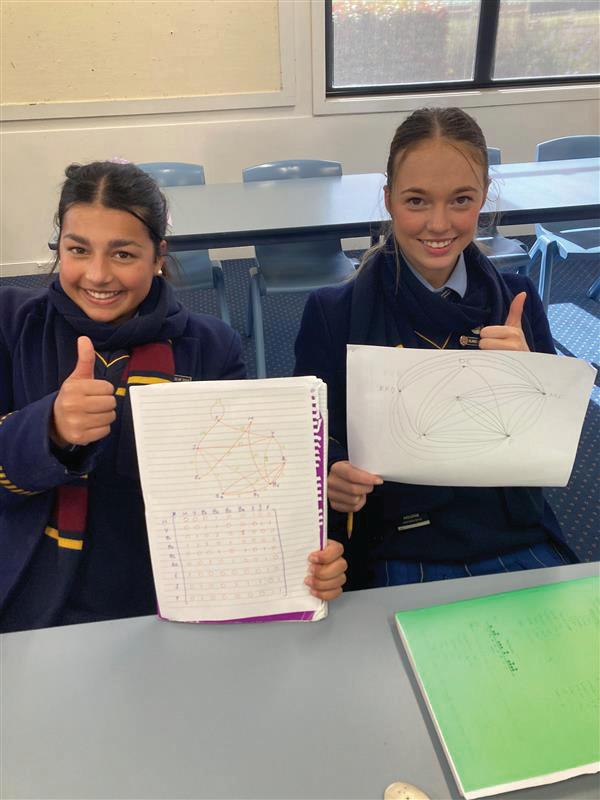

Focusing on the practical application of mathematics including integrated use of the TI-Nspire CAS unit throughout the course. General Mathematics is designed to be widely accessible and provide preparation for general employment, business or further study, in particular where data analysis, recursion and financial modelling, networks and matrices are important.
General Mathematics Unit 1 focuses on three core areas of study: Data Analysis, Sequences, and Linear Relations. The course commences with a review of fundamental arithmetic and computational thinking skills and introduces the concept of sequences. The Data Analysis component equips students with the ability to summarise, display, describe, and compare data sets. Students then study Linear Relations where
they explore the application of linear relations to model real-life scenarios, such as cost modelling and tax rates.
General Mathematics Unit 2 focuses on Networks, Matrices and Measurement and builds on knowledge of sequences from Unit 1 to represent simple financial applications. Students develop skills in matrix arithmetic and learn the notation, conventions and representation of graphs and networks. This knowledge is then used to model and solve a range of practical problems. Students then revise their knowledge of space and measurement, covering units of measurement, use of formulas and practical applications of Pythagoras’ Theorem.
Prerequisite for General Mathematics Unit 3 and 4.
General Mathematics Unit 3 and 4 focuses on real-life applications of mathematics and consists of three areas of study - Data Analysis, Probability and Statistics and Discrete Mathematics. General Mathematics Unit 1 and 2 is assumed knowledge for General Mathematics Units 3 and 4. Use of the TI-Nspire CAS unit is integrated throughout the course.
General Mathematics Unit 3 consists of two topics, Data Analysis and Recursion and Financial Modelling. In Data Analysis, students review and extend their knowledge of data from Unit 1 and develop their ability to carry out an open-ended guided investigation with components of increasing complexity. The recursion and financial modelling topic includes
the use of first order linear recurrence relations and technology to model and analyse a range of financial application involving interest, depreciation, loans, annuities and perpetuities. General Mathematics Unit 4 consists of two topics: Matrices and Graphs and Networks. In Matrices, students cover the definition of matrices, different types of matrices, matrix operations, transition matrices and the use of matrices to model a range of situations and solve related problems. Similarly, Graphs and Networks involves the application of different kinds of undirected and directed graphs to model and solve problems such as travel, connection and scheduling.
It provides a course of study of simple elementary functions, transformations and combinations of these functions, algebra, calculus, probability and statistics, and their applications in a variety of practical and theoretical contexts. TI-Nspire CAS is integrated throughout the course, and it is a VCE requirement that students can use technology to develop mathematical ideas and produce and analyse results. Mathematical Methods provides background for courses such as science, technology, engineering, mathematics, humanities, economics and medicine, as well as providing a course of study for students who wish to keep their options open.
The focus of Unit 1 is the study of simple algebraic functions. Students study the algebra and graphical representation of polynomial and power functions and explore the behaviour of these functions. Calculus is introduced through
the study of rates of change. Probability is covered with an emphasis on representation of finite sample spaces using lists, diagrams and tables and simple counting methods.
The focus of Unit 2 is the study of simple transcendental functions, such as exponential and circular functions, and the calculus of polynomial functions and related modelling applications. In calculus, students cover differentiation and anti-differentiation of polynomial functions, different notations, analysis of graphs and their applications. The concept of probability is developed from Unit 1 to include complementary, conditional, independent and compound event.
Unit 1 and 2 Mathematical Methods prepares students for Mathematical Methods Unit 3 and 4 and is a prerequisite for Units 1-4 of Specialist Mathematics.
Mathematical Methods Unit 3 and 4 extend the introductory study of simple elementary functions, to include combinations of these functions, algebra, calculus, probability and statistics, and their applications in a variety of practical and theoretical contexts. Mathematical Methods Unit 1 and 2 is a prerequisite for Mathematical Methods Unit 3 and 4. In Unit 3 the focus is on functions and their derivatives. Students study transformed and combined functions, related graphs and algebra, and differentiation of these functions. They explore the behaviour of functions and their graphs in a variety of modelling contexts and theoretical investigations. The algebra of functions is further developed to include composition of functions, inverse functions
and the solution of equations using graphical and numerical approaches where exact value solutions are not required, or which are not solvable by other methods.
In Unit 4 the focus is on applications of calculus and the study of random variables, probability distributions and their application to simple statistical inference with proportions. Students cover differentiation, anti-differentiation and integration functions and link it to applications in practical situations. Finally, students cover discrete and continuous random variables, with an emphasis on understanding the notion of a random variable in context for a given probability
This subject prepares students for Specialist Mathematics Units 3 and 4. Mathematical Methods Units 1 and 2 and Specialist Mathematics Units 1 and 2, taken in conjunction, provide a comprehensive preparation for Specialist Mathematics Units 3 and 4. Study of Specialist Mathematics Units 3 and 4 also assumes concurrent study or previous completion of Mathematical Methods Units 3 and 4. Specialist Mathematics Units 1 and 2 provides a course of study for students who wish to undertake an in-depth study of mathematics and focuses on developing an interest in the discipline of mathematics in its own right, whilst building a sound background for further studies in mathematics and mathematics related fields. It includes the integrated use of the TI-Nspire CAS throughout the course and it is a VCE requirement that students can use it.
Unit 1 area of study 1 provides students with an introduction to formal mathematical notation and reasoning as they study proof and number, graph theory, and logic and algorithms. Discrete Mathematics is covered in Area of Study 2 where students study sequences and series, combinatorics and matrices.
Unit 2 students study simulation, sampling and sampling distributions and explore variability of sample means using technology. Students extend their understanding of trigonometry and transformations and are introduced to vectors for working with position, shape, direction, and movement in the plane and related applications. Finally, students study the arithmetic and algebra of complex numbers and learn more about reciprocal and inverse functions and their graphs.
Specialist Mathematics Units 3 and 4 consists of the areas of study: algebra, number and structure, calculus, data analysis, probability and statistics, discrete mathematics, functions, relations and graph, and space and measurement. Specialist Mathematics Units 3 and 4 assumes familiarity with the key knowledge and key skills from Mathematical Methods Units 1 and 2; the key knowledge and key skills from Specialist Mathematics Units 1 and 2; and concurrent study or previous completion of Mathematical Methods Units 3 and 4. In Unit 3 and 4, students are expected to be able to apply techniques, routines and processes with and without the use of technology. They are expected to be able to
construct proofs and develop and interpret algorithms to solve problems.
In Unit 3, students study a selection of topics from the six areas of study. They cover circular functions, vectors, complex numbers, differentiation, techniques and applications of integration and differential equations. In unit 4, students study the remaining content from each area of study. from each area of study. Topics include kinematics, vector functions and vector calculus, linear combinations of random variables, introductory statistical inference, confidence intervals and hypothesis testing.
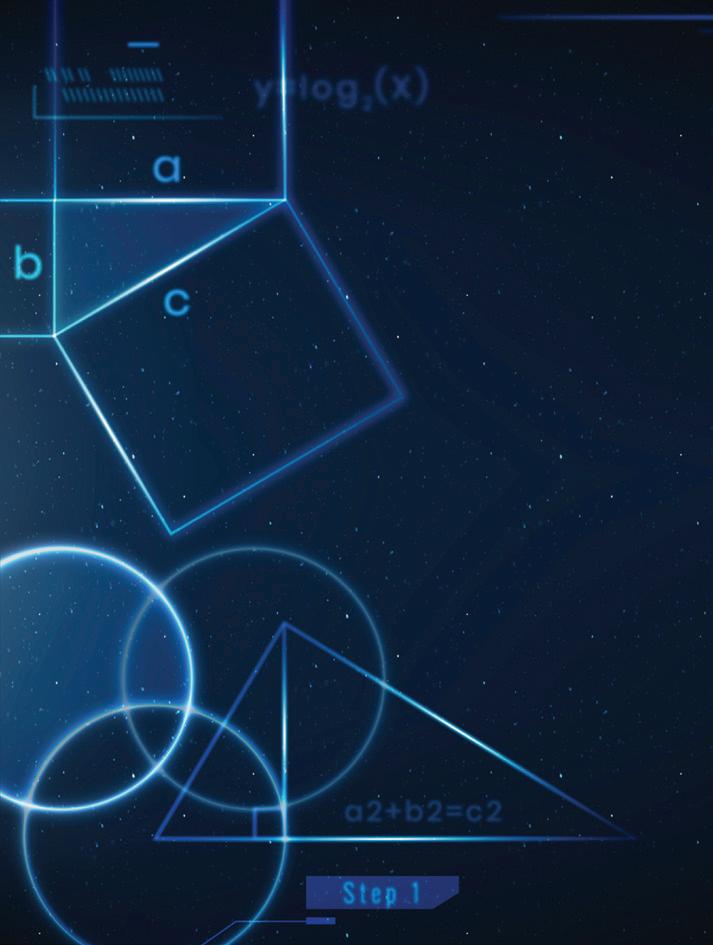

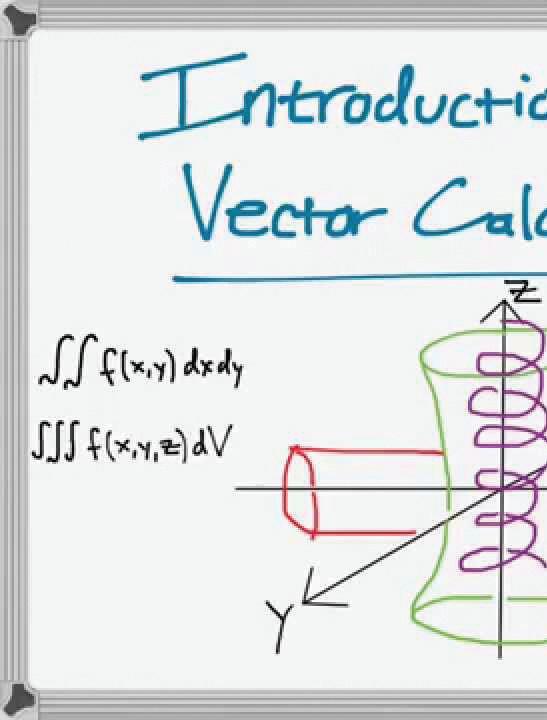



Undertaking Year 10 Commerce offers students a comprehensive introduction to essential concepts in finance, business management, economics, and civics and citizenship. Through engaging with diverse topics, students develop a foundational understanding of key principles vital for navigating the complexities of modern commerce. The finance component equips students with practical skills in personal finance, investment strategies, and an understanding of the ASX Share market. In business management, students explore the fundamental principles underpinning successful enterprises, including strategic decision-making and effective managerial practices. Economics provides students with insights into Australia’s economic landscape,
emphasising the impact of economic policies on living standards and societal wellbeing. Through the civics and citizenship module, students gain an understanding of Australia’s democratic framework, including parliamentary systems, electoral processes, and societal challenges such as political corruption and media influence. By synthesizing theoretical knowledge with practical applications, Year 10 Commerce empowers students to critically analyse complex issues and make informed decisions in the commercial and political spheres. This foundational understanding lays the groundwork for further studies in commerce and prepares students for future academic and professional endeavours.
Unit 1 ‘Planning a business’ focuses on businesses of all sizes are major contributors to the economic and social wellbeing of a nation. The ability of entrepreneurs to establish a business and the fostering of conditions under which new business ideas can emerge are vital for a nation’s wellbeing. Taking a business idea and planning how to make it a reality are the cornerstones of economic and social development. In this unit, students explore the factors affecting business ideas and the internal and external environments within which businesses operate, as well as the effect of these on planning a business. They also consider the importance of the business sector to the national economy and social wellbeing.
Unit 2 ‘Establishing a business’ focuses on the establishment phase of a business. Establishing a business involves compliance with legal requirements as well as decisions about how best to establish a system of financial record keeping, staff the business and establish a customer base. In this unit, students examine the legal requirements that must be met to establish a business. They investigate the essential features of effective marketing and consider the best way to meet the needs of the business in terms of staffing and financial record keeping. Students analyse management practices by applying key knowledge to contemporary business case studies from the past four years
Unit 3 students explore the key processes and considerations for managing a business efficiently and effectively to achieve business objectives. Students examine different types of businesses and their respective objectives and stakeholders. They investigate strategies to manage both staff and business operations to meet objectives and develop an understanding of the complexity and challenges of managing businesses. Students compare theoretical perspectives with current practice using contemporary Australian and global business case studies from the past four years. Unit 4: Businesses are under constant pressure to adapt and change to meet their objectives. In this
unit, students consider the importance of reviewing key performance indicators to determine current performance and the strategic management necessary to position a business for the future. Students study a theoretical model to undertake change and consider a variety of strategies to manage change most efficiently and effectively to improve business performance. They investigate the importance of effective management and leadership in change management. Using one or more contemporary business case studies from the past four years, students evaluate business practice against theory
Students will identify the Dimensions of Health and examine how their community relates to these dimensions. Students gain a deeper understanding and critique strategies to enhance the health, safety and wellbeing of communities at a local, national, and global level. Students critique the behavioural and contextual factors influencing the health and wellbeing outcomes of these communities. Students also study the Positive Education Unit of Resilience. Students apply the skills of resilience, mindfulness, and a growth mindset to exam preparation and real-life situations. Students’ study Sexual Health, legal and illegal drugs. The Rights, Resilience, and Respectful Relationships (RRRR) unit focuses on the topic of gender, power, media, sexual imagery, and
homophobia. Students identify and analyse factors that contribute to respectful relationships. They explain the importance of cooperation, leadership and fair play across a range of health contexts. They compare and contrast a range of actions that could be undertaken to enhance their own and others’ health, safety and wellbeing, including understanding basic life support and emergency procedures. Students need to know the steps to take when something goes wrong and knowing when to call a trusted adult or an ambulance in a medical emergency. Each unit utilises theory, practical activities, and case studies to assist students in expanding their health and wellbeing knowledge, skills and understanding.

Health and Human Development takes a broad and multidimensional approach to defining and understanding health and wellbeing. Students examine health and wellbeing, and human development as dynamic concepts, subject to a complex interplay of biological, sociocultural and environmental factors, with a particular focus on the social factors that influence health. Students consider Australian and global contexts as they investigate variations in health status between populations and
nations. They examine the work of global organisations such as the United Nations and the World Health Organisation, as well as non-government organisations and the Australian governments overseas aid program. Students develop health literacy as they connect their learning to their lives, communities and world. They develop a capacity to respond to health information enabling them to put strategies into action to promote health and wellbeing in both personal and community contexts.
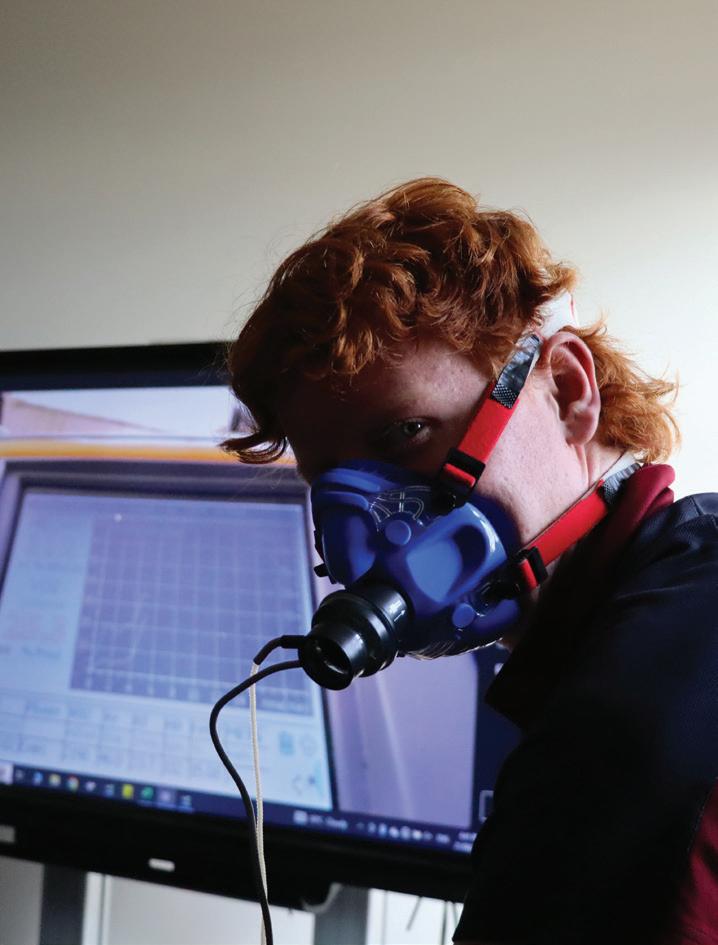
In the exploration of human anatomy relevant to physical activity and sports, students delve into the complexities of muscles, body systems, and their synergistic roles in motion. This study equips learners with insights into major muscles and their function in movement, alongside the fitness components and energy systems crucial for enhancing athletic performance. Through both theoretical knowledge and practical application, students assess human body dynamics during rest and in the throes of exercise, learning to critically analyse sports through subjective and objective lenses. This includes the adept selection of fitness tests and the crafting of specialised training regimens tailored to
specific sports. Key to this curriculum is an understanding of biomechanics—principles governing balance, stability, and motion— and how they underpin effective training strategies. This foundational knowledge paves the way for advanced studies in Physical Education, fostering competencies in analysing sports activities, designing purposeful training programs, and applying biomechanical principles to improve physical activity outcomes. Students emerge with a comprehensive understanding of the human body’s capabilities, informed by the principles of training and biomechanics, ready to apply this knowledge in promoting a healthier lifestyle through both aerobic and anaerobic exercises.
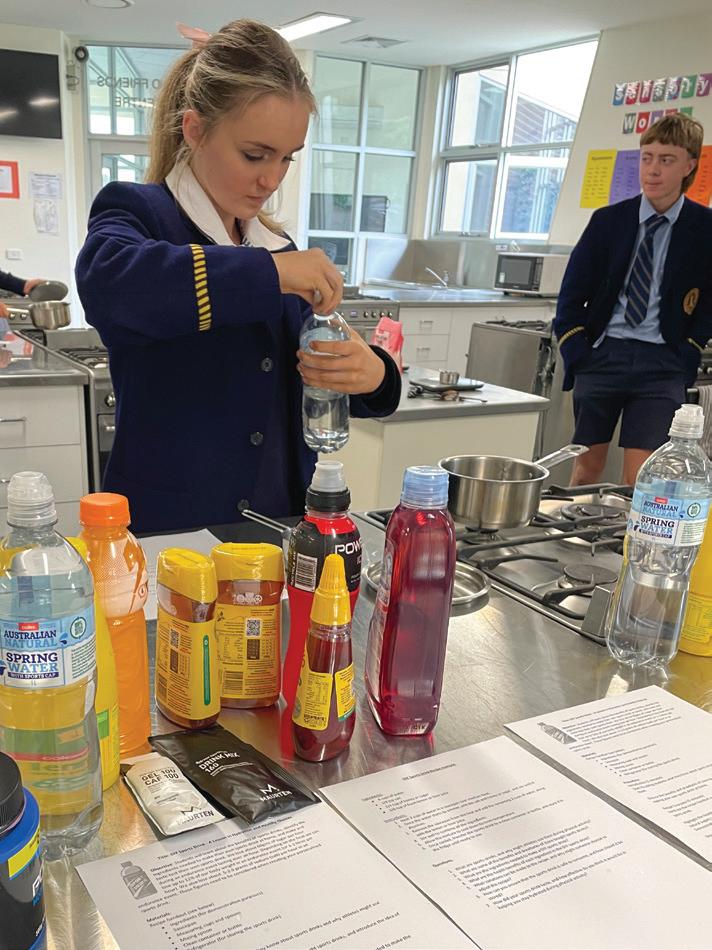

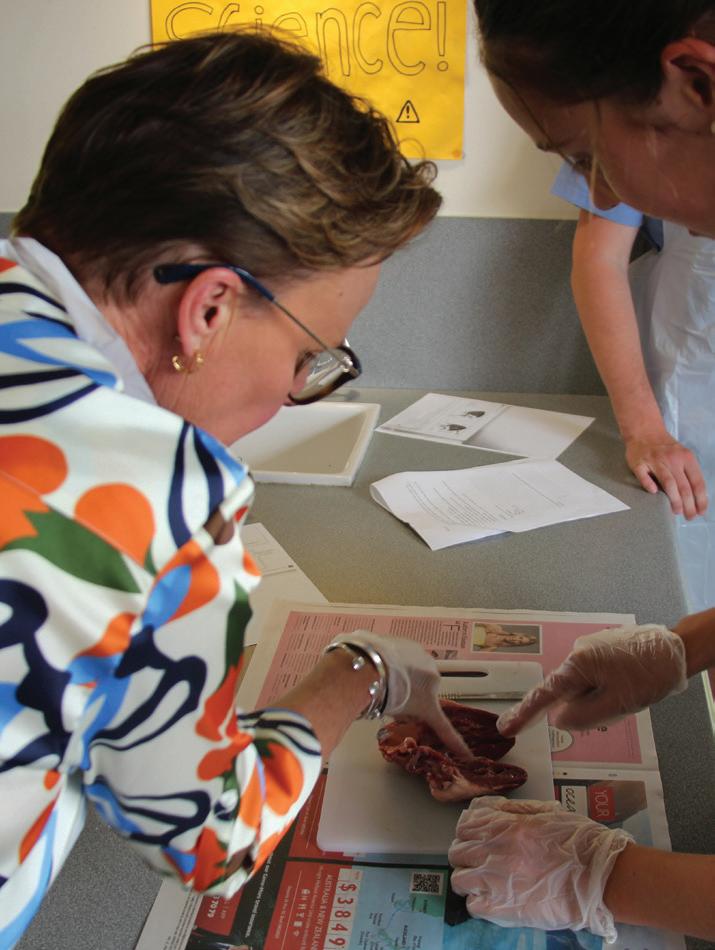

In Semester 1, students participate in a wide range of physical activities including swimming, athletics, fitness, handball, football, volleyball, baseball, a recreation unit, and a fitness assessment. Students learn to apply more specialised movement skills and complex movement concepts and strategies in a range of movement contexts and environments. They are also provided with opportunities to use a range of concepts to evaluate and refine their own and others’ movement performances. Students analyse how physical activity and sport participation can influence an individual’s identities and explore the role participation plays in shaping cultures. Students are involved in practical units of work including volleyball, football,
netball, handball, baseball, and a recreation unit. Students learn to apply more specialised movement skills and complex movement concepts and strategies in a range of movement contexts and environments. They are also provided with opportunities to use a range of concepts to evaluate and refine their own and others’ movement performances. Students analyse how physical activity and sport participation can influence an individual’s identities and explore the role participation plays in shaping cultures.
The human body in motion unit, students explore how the musculoskeletal and cardiorespiratory systems work together to produce movement. Students investigate the role and function of the main structures in each system and how they respond to movement. Through participation in practical activities, students explore and analyse the relationships between the body systems and movement, and how these systems interact and respond at various intensities. Students investigate possible conditions and injuries associated with the musculoskeletal system and recommend and implement strategies to minimise and manage such injuries and conditions. They consider the ethical implications of using permitted and prohibited practices to improve the performance of the body systems, evaluating perceived physiological benefits and describing potential harms.
Physical activity, sport, exercise and society unit explores a series of practical activities, students experience and different types of physical activity promoted within and beyond their community. They gain an appreciation of the movement required for health benefits and the consequences of physical inactivity and sedentary behaviour. Using various methods to assess physical activity and sedentary behaviour, students analyse data to investigate perceived barriers and enablers, and explore opportunities to enhance participation in physical activity. Students explore and apply the socialecological model to critique a range of individual- and settings-based strategies that are effective in promoting participation in regular physical activity. They create and participate in a personal plan with movement strategies that optimise adherence to physical activity and sedentary behaviour guidelines
Movement skills and energy for physical activity, sport and exercise unit introduces students to principles used to analyse human movement from a biophysical perspective. Students use a variety of tools and coaching techniques to analyse movement skills and apply biomechanical and skill-acquisition principles to improve and refine movement in physical activity, sport and exercise. They use practical activities to demonstrate how correctly applying these principles can lead to improved performance outcomes. Students consider the cardiovascular, respiratory and muscular systems and the roles of each in supplying oxygen and energy to the working muscles. They investigate the characteristics and interplay of the three energy systems for performance during physical activity, sport and exercise. Students explore the causes of fatigue and consider different strategies used to postpone fatigue and promote recovery.
Training to improve performance unit focuses on students’ participation and involvement in physical activity will form the foundations of understanding how to improve performance from a physiological perspective. Students analyse movement skills and fitness requirements and apply relevant training principles and methods to improve performance at various levels (individual, club and elite). Students assess fitness and use collected data to justify the selection of fitness tests based on the physiological requirements of an activity, including muscles used, energy systems and fitness components. Students then consider physiological data, training principles and methods to design a training program. The effectiveness of programs is evaluated according to the needs of the individual and chronic adaptations to training.
In the twenty-first century, the world faces many environmental challenges. These challenges can range from a local to a global scale. Understanding how people and their environments interconnect is vital for explaining environmental changes and helps in planning effective management for a sustainable future. Students study the topic of Environmental Change and Management with a focus on ecological footprint, anthropogenic climate change and inland water. The geographies of human wellbeing are also investigated. Human wellbeing
varies from place to place across the world. Students investigate how to measure and compare wellbeing using qualitative and quantitative indicators and learn to explain why there are spatial variations in this across the globe. Students also learn how organisations and governments devise programs that attempt to improve wellbeing for their own, as well as other countries. Case Studies focus on the topics of the Millenium Development and Sustainable Development Goals as well as conflict and indicators of wellbeing such as The Happy Planet Index.
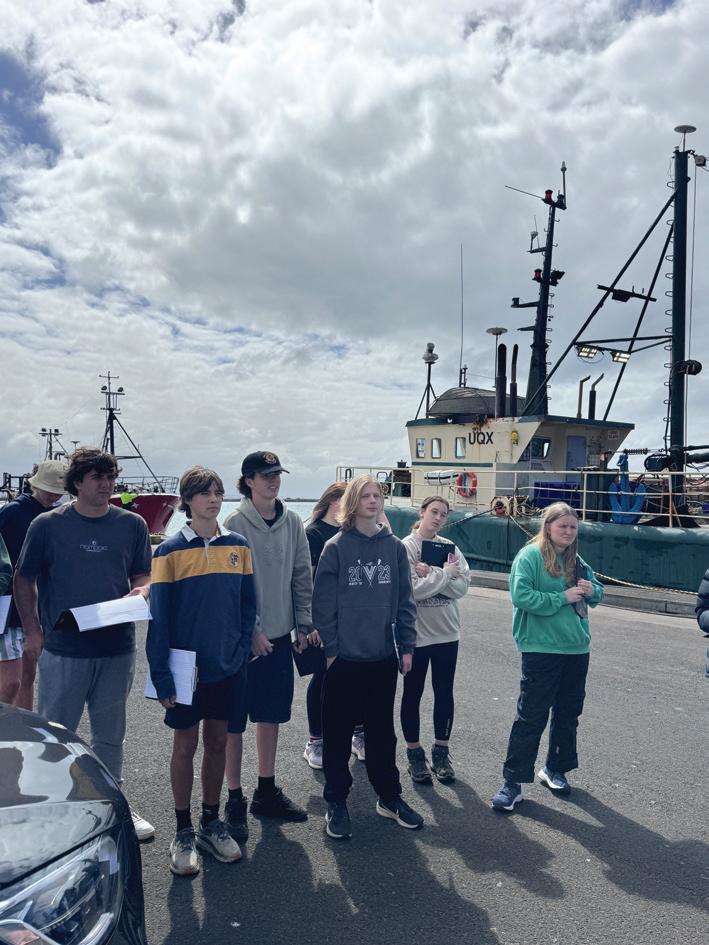
Unit 1 students undertake an overview of hazards and disasters in a variety of classifications, namely geological, hydrometeorological, biological and technological. Hazards on a variety of scales are investigated, including coastal erosion, landslides, floods, invasive species and infectious diseases. Students examine the processes involved with hazards and hazard events, including their causes and impacts and the interconnection between human activities and natural phenomena. Students also investigate how people respond to specific types of hazards, including attempts to reduce vulnerability.
Unit 2 This unit investigates the characteristics of tourism, with emphasis on where it has developed, its various forms, how it has changed and continues to change, and its impacts on people, places and the environment. Students select contrasting examples of tourism from within Australia and elsewhere in the world to support their investigations. A major focus is Ecotourism in Borneo and on the Kamchatka Peninsula in Russia. With both units, students undertake fieldwork and report on it as part of the process of geographic enquiry.
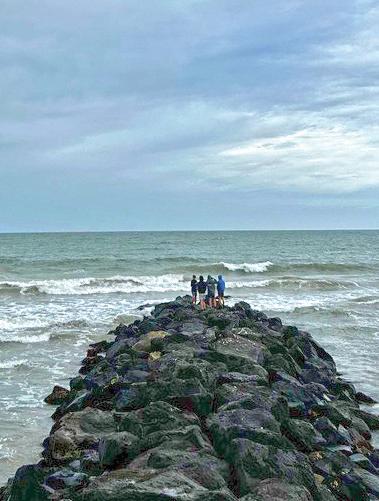
Unit 3 Geography focuses on two investigations of geographical change: change to land cover and change to land use. Natural land cover has been altered by many processes such as geomorphological events, plant succession and climate change. People have modified land cover to produce a range of land uses to satisfy needs such as housing, resource provision, communication, recreation and so on. Students investigate two major processes (deforestation and melting glaciers / ice sheets) that are changing land cover in many regions of the world. In addition, a local case study is investigated at Walker Swamp Restoration Reserve near Dunkeld. The fieldwork conducted here forms the basis of a major fieldwork report.
Unit 4 investigates the geography of human populations. The growth of the world’s population from 2.5 billion in 1950 to over 8 billion has been on a scale without parallel in human history. Students explore the patterns of population change, movement, and distribution, and how governments, organisations and individuals have responded to those changes in different parts of the world. Features of population dynamics are studied and applied to two significant population trends (growing and ageing populations) arising in different parts of the world. Major case studies investigated include the countries of Niger and Japan.
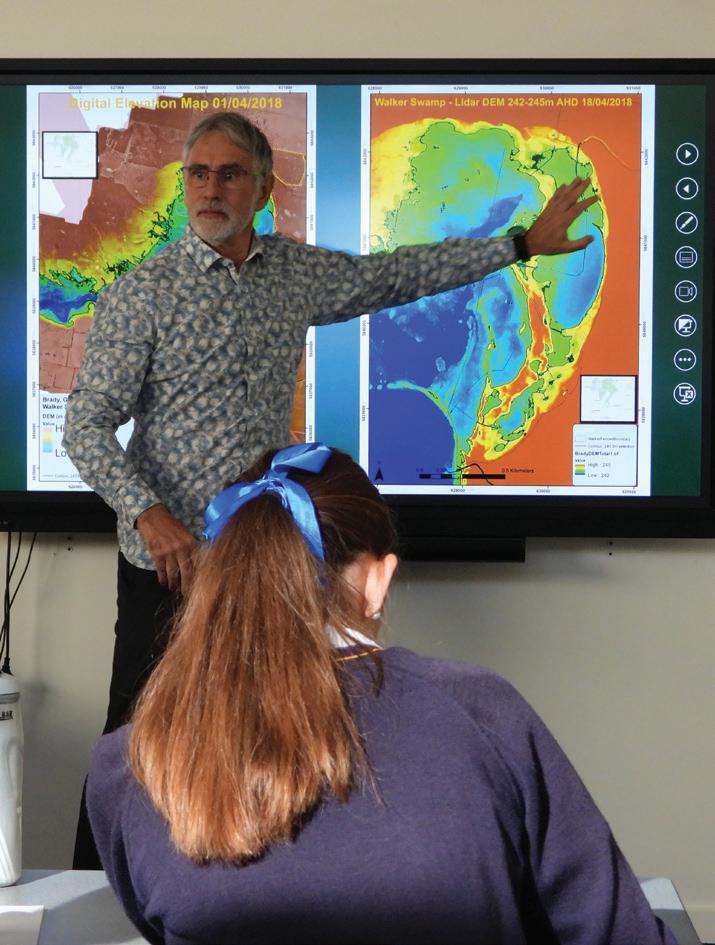
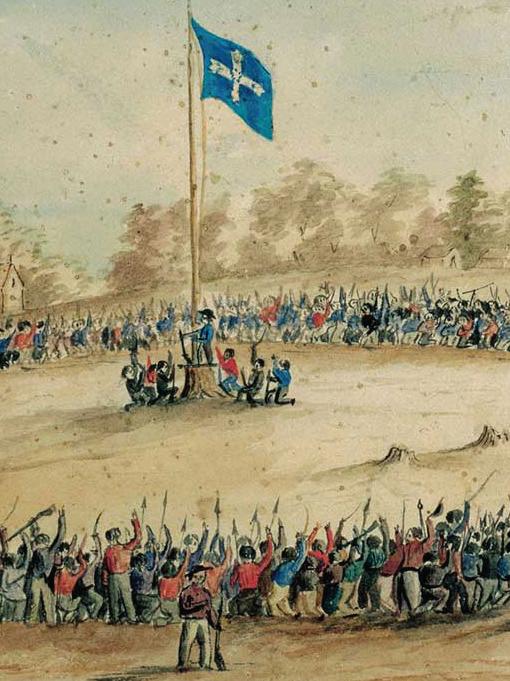
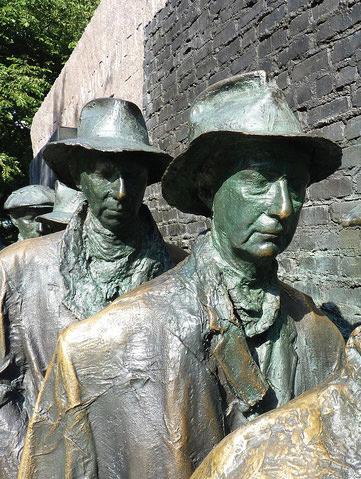

The Year 10 curriculum provides a study of the history of the modern world and Australia from 1918 to the present, with an emphasis on Australia in its global context. The twentieth century became a critical period in Australia’s social, cultural, economic and political development. The transformation of the modern world during a time of political turmoil, global conflict and international cooperation provides a necessary context for understanding Australia’s development, its place within the
Asia-Pacific region, and its global standing. The content provides opportunities to develop historical understanding through key concepts, including evidence, continuity and change, cause and effect, perspectives, empathy, significance and contestability. These concepts are investigated to facilitate an understanding of the past and to provide a focus for historical inquiries, including ideas and political powers, movements of the people and issues for the millennium.
Unit 1, ‘Change and Conflict’ focuses on the period between the wars, which was characterised by significant social and cultural change. While the 1920s was largely marked by optimism and material prosperity, by contrast, the 1930s was a period of severe economic hardship for many, dominated by the impact of the Great Depression. At the end of World War One, new governments led to societies driven by new ideologies and, in some countries, the oppression and persecution of certain groups. In this area of study, students may focus on one or more of the following contexts: Australia, China, France, Germany, Italy, Japan, Russia/USSR, the Ottoman Empire/Turkey, the British Empire/United Kingdom and/or the USA.
Unit 2, ‘The Changing World Order’ focuses on the causes and consequences of the Cold War; the competing ideologies that underpinned events, the consequences on people, groups and nations, and the causes of the end of the Cold War and the collapse of the USSR. While the USA and the USSR never engaged in direct armed conflict, they opposed each other in a range of ways on an international scale. Students consider the reasons for the end of this long-running period of ideological conflict and the collapse of the USSR in 1991, as well as explore the legacy of communism and/or socialism in the post-Soviet era and the emergence of democracy in new nations.
Unit 3 students investigate the debates and perspectives about Australia’s participation in World War One and World War Two. Students analyse the ways in which social, political and economic cohesion of the nation was influenced by the impacts of these conflicts, including different perspectives about participation in war and conflict, enlistment and conscription and the ways that different groups experienced the war. Students investigate Australia’s involvement and reasons for participation in post-World War Two conflicts and the subsequent debates arising from these conflicts. Students consider the impacts of these conflicts on groups in Australian society and the differing ways in which Australians responded. Unit 4 students investigate the changing patterns of migration to and within the colonies and federated Australia, and the social, political and economic factors
influencing the colonies. They examine the attitudes towards Indigenous peoples and the influence of European and Chinese migration on the diverse perspectives about who was included and who belonged. Students examine debates that influenced immigration and forced migration to the colonies and federated Australia, and the treatment of Aboriginal and Torres Strait Islander peoples. Students investigate the ways in which the push to ‘populate or perish’ and attitudes toward Aboriginal and Torres Strait Islander peoples after World War Two changed Australian society. They examine perspectives about who could migrate and belong in the Australian nation, including an expanding concept of citizenship and migration and how that would challenge the White Australia Policy and contribute to a multicultural society.
Unit 3 students focus on the long-term causes and short-term triggers of revolution. They evaluate how revolutionary outbreaks were caused by the interplay of significant events, ideologies, individuals and popular movements, and how these were influenced by the political, social, economic, cultural and environmental conditions of the time. Students analyse significant events and evaluate how particular conditions profoundly influenced and contributed to the outbreak of revolution. Revolutionary ideologies emerged in opposition to the existing and dominant order. These ideologies were utilised by individuals and popular movements to justify revolutionary action and change.
Unit 4 students focus on the consequences of the revolution and evaluate the extent to which the consequences of the revolution maintained continuity and/or brought about change to society. The success of the revolution was not inevitable. Students analyse the significant challenges that confronted the new regime after the initial outbreak of revolution. They evaluate the outcomes of the new regime’s responses to these challenges, and the extent to which the revolution resulted in dramatic and wide-reaching political, social, cultural and economic change, progress or decline.
Year 10 Chinese First Language is designed as a preparation course for the VCE Chinese First Language and Chinese Second Language Advanced program. Students continue to develop their bilingual and bicultural identities. They are immersed in Chinese as Chinese is the language of classroom instruction and interaction. Students use language in a range of contexts across family, school, community and social situations to further develop their skills in communicating with a range of audiences and contexts. Students present, debate and discuss issues as they become more aware of their role as citizens of the world and the
actions they can take to improve the social situation in China and the challenges faced by different Chinese communities. Students read in both simplified and traditional characters, view and listen to a range of print, digital and online text types and resources, including newspaper reports, news websites, magazines, teen fiction, films and documentaries. Students learn how to write objectively in simplified and traditional characters and substantiate their ideas and perspectives in appropriate ways. They learn to transcribe complex spoken texts and develop skills in listening to diverse speakers of Chinese who vary in rhythm and pitch.
The study of VCE Chinese First Language plays a pivotal role in the holistic education of students, particularly enhancing communication skills, cross-cultural understanding, cognitive development, literacy, and general knowledge. It offers insights into the cultures of communities that use the language and fosters an appreciation for diverse attitudes and values both within the wider Australian community and internationally. Throughout the academic year, students explore the impact of modern society and changing lifestyles in various Chinese communities. They reflect on individual contributions to global challenges and engage in meaningful spoken and written exchanges using topical vocabulary and grammatical structures suited for
persuading, explaining, and commenting on issues, both real and imaginary. The curriculum emphasises the organisation of ideas and information, expression across different text types, and adherence to each type’s conventions. It enhances listening and reading skills to extract and respond to information aptly according to the context, purpose, and audience. Additionally, students produce personal responses to texts, employing structures that describe, compare, and substantiate their viewpoints with appropriate evidence. This approach not only augments linguistic abilities but also deepens understanding of cultural nuances and societal shifts within the Chinese-speaking world.
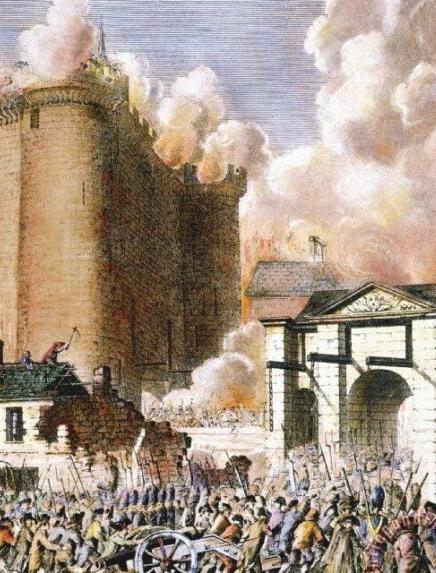
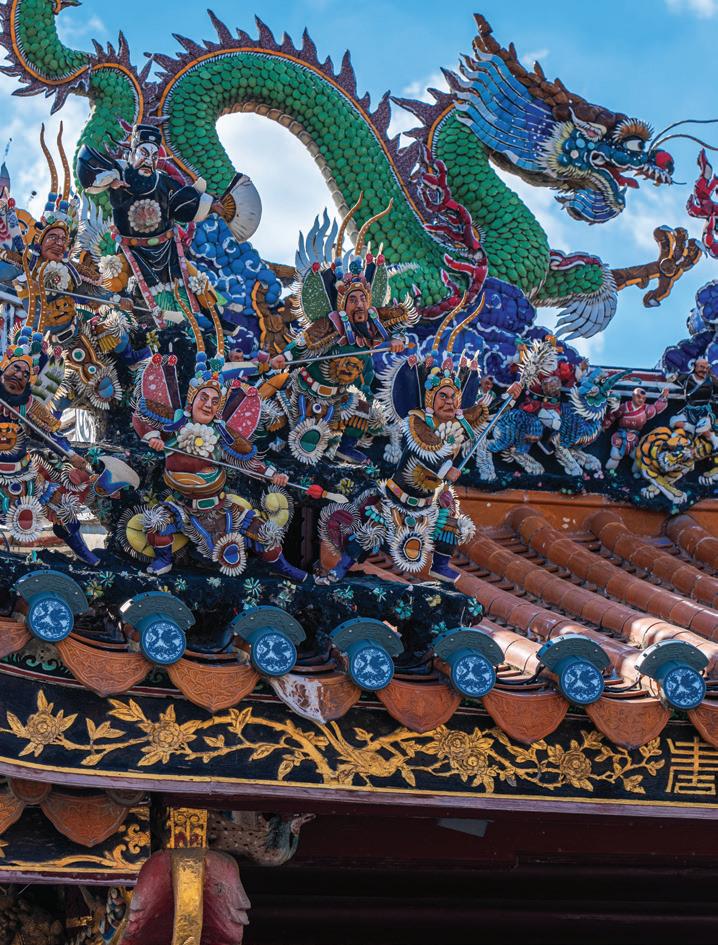



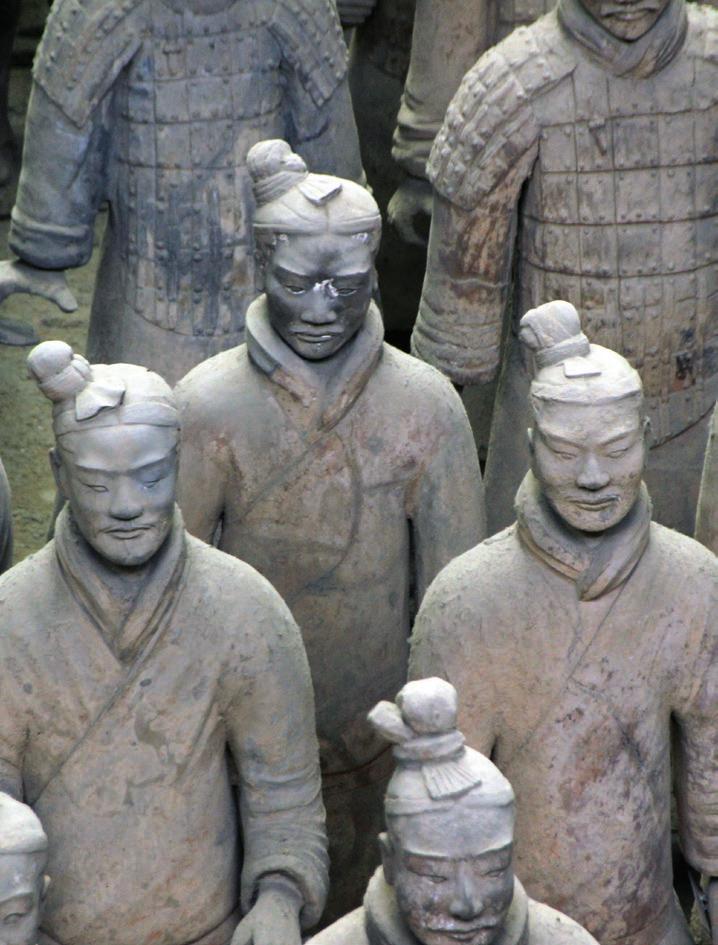
Enriching students’ overall education, emphasising communication, cross-cultural understanding, cognitive development, literacy, and general knowledge. This course grants access to the cultures of Chinese-speaking communities and fosters appreciation for diverse attitudes and values, both within the wider Australian community and globally. Initially, students deepen their grasp of language and culture through prescribed themes and topics, enhancing their ability to access, share, and evaluate information in Chinese. They expand their vocabulary, grammar, and
other language skills while learning to construct and present evaluative arguments and exchange opinions. Students practise acknowledging different viewpoints and negotiating discussions in culturally appropriate ways. As the year progresses, students explore significant Chinese legends, myths, classical literature, and philosophy. They analyse these texts for their relevance to contemporary Chinese society and engage in various communicative tasks, such as debates and interviews, where they justify their ideas and interact with those of others
Over the academic year, students engage deeply with the major philosophical traditions of China, including Confucianism, Daoism, and Buddhism. Initially, the focus is on Confucianism, exploring its foundational role in shaping Chinese moral judgements, societal structures, and contributions to social harmony. Students develop crucial language skills, learning appropriate vocabulary and expressions to interact effectively in Chinese, share information on chosen subtopics, and enhance their listening and reading comprehension. They also produce original Chinese texts expressing personal ideas, opinions, and views. As the year progresses, the study extends to Daoism and Buddhism, examining their significance in Chinese myths and legends. Students conduct research on Chinese cultural
practices related to legend worshipping, gaining insights into how these philosophical teachings are integrated into the daily lives of Chinese-speaking communities. This comprehensive exploration not only deepens students’ understanding of philosophical influences but also enhances their ability to interact in spoken Chinese. They are exposed to various Chinese texts, further consolidating their comprehension, and writing skills to produce contextually appropriate texts. This holistic approach enriches students’ linguistic proficiency and provides a profound appreciation of Chinese cultural and philosophical heritage, equipping them with a nuanced perspective on the interplay between language, culture, and philosophy.
Throughout the academic year, students delve into how traditional Chinese values and philosophies such as Confucianism, Daoism, and Buddhism influence various aspects of culture and society in the Chinesespeaking world. Initially, they investigate these relationships within cultural and social contexts, analysing them in English. Students enhance their language skills by engaging with texts related to selected subtopics, responding to questions in Chinese characters, and developing their ability to produce informative writing. They use their knowledge to interpret and analyse meanings from linguistic and contextual features of Chinese language materials and craft simple textual responses. As the year progresses, the focus shifts to contemporary China, exploring significant themes such
as economic, technological, social, and political changes. Students consider the impact of traditional philosophies and current cultural values on these modern developments. They reflect on their own and others’ cultural values, enhancing their cross-cultural communication abilities. This involves participating in oral interactions in Chinese, engaging with a variety of texts, and emphasising the development of their capacity to convey meaning through imaginative and personal writing in Chinese. This comprehensive approach not only deepens students’ understanding of Chinese culture and its evolution but also bolsters their linguistic proficiency and critical thinking skills, preparing them for a more nuanced global engagement.
Designed as a preparation course for the VCE Chinese Second Language program. In the classroom, Chinese is the language of instruction and interaction. Students bring prior knowledge of Chinese language and culture, and a range of language learning strategies to their learning. They use Chinese for self-expression, to obtain information and present a point of view to others, identifying subtle differences in word use and manipulating language for different purposes and audiences. The likely contexts for interaction are extended to encompass
the exchange of information and opinions on topics that will assist students to develop a deeper appreciation of cultural practices and traditions in diverse Chinese-speaking communities. Such topics include school life, aspects of social life, leisure activities and personal interests, travel, health and personality. Text types include short informative texts from various readers, websites, opinion pieces from personal blogs, and online chat forums conducted in Chinese with users in diverse locations

Over the academic year, students delve into the Chinese language and culture through the themes of The Individual, The Chinese Speaking Communities, and The World Around Us. Initially, they develop an understanding by studying a variety of topics that enhance their ability to access and share information in Chinese. They focus on expanding vocabulary and grammar while consolidating their language skills. This study includes analysing cultural products and practices, which encompass texts, activities, and artistic creations such as stories, poems, plays, songs, films, photographs, and artworks. Students apply their knowledge to new contexts, reflecting on the interplay between language and culture and its impact on meaning and personal language usage for specific audiences. As the year
progresses, students further deepen their knowledge by exploring additional subtopics within these themes. They enhance their abilities in reading, listening, and viewing Chinese texts, applying this information to new situations. The curriculum helps them develop vocabulary and grammar that aid in understanding, interpreting, and conveying information. They learn to recognise and interpret concepts without direct English equivalents and use conventions of various text types for effective communication. Additionally, they research cultural products or practices and prepare oral presentations in Chinese on topics of interest related to the chosen subtopics. This comprehensive approach not only strengthens their linguistic capabilities but also deepens their cultural appreciation and critical thinking skills.
Throughout the academic year, students delve into how traditional Chinese values and philosophies such as Confucianism, Daoism, and Buddhism influence various aspects of culture and society in the Chinesespeaking world. Initially, they investigate these relationships within cultural and social contexts, analysing them in English. Students enhance their language skills by engaging with texts related to selected subtopics, responding to questions in Chinese characters, and developing their ability to produce informative writing. They use their knowledge to interpret and analyse meanings from linguistic and contextual features of Chinese language materials and craft simple textual responses. As the year progresses, the focus shifts to contemporary China, exploring significant themes such
as economic, technological, social, and political changes. Students consider the impact of traditional philosophies and current cultural values on these modern developments. They reflect on their own and others’ cultural values, enhancing their cross-cultural communication abilities. This involves participating in oral interactions in Chinese, engaging with a variety of texts, and emphasising the development of their capacity to convey meaning through imaginative and personal writing in Chinese. This comprehensive approach not only deepens students’ understanding of Chinese culture and its evolution but also bolsters their linguistic proficiency and critical thinking skills, preparing them for a more nuanced global engagement.





Students have prior experience of learning French and bring a range of capabilities, strategies and knowledge that can be applied to new learning. French is increasingly used for classroom interactions and routines, for elements of task participation and for structured discussions. Learners use French to communicate and interact, to access and exchange information, to express feelings and opinions, to participate in imaginative and creative experiences, and to design, interpret and analyse a wider range of texts and experiences. They gain more control of grammatical and textual elements. They use expressive and descriptive language
to talk about feelings and experiences. They develop understanding of the nature of both translation and interpretation, noticing the relationship between language, texts and culture. A balance is maintained between activities that focus on language forms and structures and those that involve communicative tasks, performances and experiences. Learners analyse text more critically, identifying how language choices reflect perspectives and shape meaning. At this level, learners are developing understanding of the relationship between language, culture and identity
Throughout the academic year, students immerse themselves in the language and culture of French-speaking communities, developing a comprehensive understanding through various topics including The Individual, The World Around Us, and French Speaking Communities. They engage with a wide range of cultural products and practices, such as stories, poems, plays, novels, songs, films, photographs, artworks, architecture, technology, food, clothing, sports, and festivals. These materials serve as tools for analysing cultural perspectives and practices, demonstrating how culture varies between communities. Students enhance their vocabulary, grammatical knowledge, and overall language skills by accessing, sharing, and synthesising information from visual, spoken, and written texts. They also develop competencies in informal, personal spoken interactions and in crafting written responses
Throughout the academic year, students deeply explore French language and culture, focusing on how French speakers interpret, express, negotiate, and persuade across various topics. They delve into cultural perspectives and the interplay between language and culture in shaping meaning. This investigation encompasses a broad spectrum of cultural products and practices, ranging from texts to activities and creative expressions, providing rich insights into the values, attitudes, and behaviours influenced by culture, place, and time. Students systematically enhance their vocabulary, grammatical knowledge, and language skills, applying these in practical contexts to interpret information, inform
both in French and English. This involves summarising content, combining information effectively, and presenting it in French tailored to specific contexts and audiences. Additionally, they focus on language usage pertinent to writing with a specific purpose and audience, applying information in new contexts to deepen their cultural understanding. The curriculum enables students to effectively read, listen to, and view French texts, fostering skills to develop thoughtful and contextually appropriate responses. This educational journey not only enhances linguistic proficiency but also provides deep insights into the dynamic nature of Francophone cultures, preparing students to interact meaningfully within these communities
others, and develop persuasive arguments in French. They also reflect on personal observations and insights gained through their studies, considering how this knowledge can be applied in diverse endeavours such as further study, travel, business, and community involvement. By examining the practices, products, and perspectives of French-speaking communities, students gain a multifaceted understanding of how cultural knowledge can enhance interpersonal relations and functionality in a global context. The curriculum not only fosters linguistic proficiency but also prepares students to appreciate and navigate the complexities of multilingual and multicultural environments.
Students will create and present drama works that exhibit a range of refined dramatic skills and processes. We will explore and extend their understanding and use of role, character, relationships and situation while extending the use of voice and movement to sustain belief in character. Students will explore a range of theatre styles and will then use playmaking techniques including research, improvisation, scripting and rehearsal to create a devised ensemble, scripted and solo performance. Students will draw on drama from a range of cultures as they experiment and learn that over time there has been development in different
traditional and contemporary styles of drama forms and elements. They will explore the social, cultural and historical influences of drama as they make and respond to drama. Students will analyse and evaluate their own work and the work of a professional theatre company. Students intending to undertake VCE Drama will find this course beneficial, however, this course will also improve confidence, public speaking, problem solving skill and improve their intrapersonal skills such as caring for others through compassion, collaborating well with others, diplomacy and many others
Throughout the year, students engage in a comprehensive exploration of devised performance, drawing from both contemporary and historical Australian contexts. In Unit 1 students are introduced to various performance styles, focusing on the creation, presentation, and analysis of devised solo and/or ensemble performances. Utilising stimulus material reflecting personal, cultural, and community experiences, students delve into the portrayal of real or imagined characters. They study multiple performance styles from diverse social, historical, and cultural backgrounds, including drama traditions of ritual and storytelling. Through this exploration, students develop an understanding of character portrayal across naturalistic and non-naturalistic styles while investigating
the shaping and meaning of performance. They document their processes, experiment with production areas, and explore dramatic elements and conventions. In Unit 2 students further their exploration by focusing on the construction of a devised solo performance utilising non-naturalistic performance styles. They create, present, and analyse performances based on given stimuli, examining selected performance styles and associated conventions. Additionally, students analyse their own work alongside performances of Australian works by professional actors, gaining insights into performance techniques and theatrical conventions. Throughout the year, students develop their understanding of character, performance, story, and style through practical exploration and critical analysis.
Students focus on extending their musicianship and instrumental performance skills, in solo and group contexts, through the development of stylistic understanding and performance conventions. Scale forms, chords and interval types are explored for theoretical understanding. Ongoing aural comprehension exercises foster musicianship skills. Students study historical influences and styles in music to inform performance and explore and implement the process involved in preparing for a performance.
Students focus on extending their musicianship and instrumental performance skills, in solo and group contexts, through the development of stylistic understanding and performance conventions. Scale forms, chords and interval types are explored for theoretical understanding. Ongoing aural comprehension exercises foster musicianship skills. Students study historical influences and styles in music to inform performance and explore and implement the process involved in preparing for a performance.
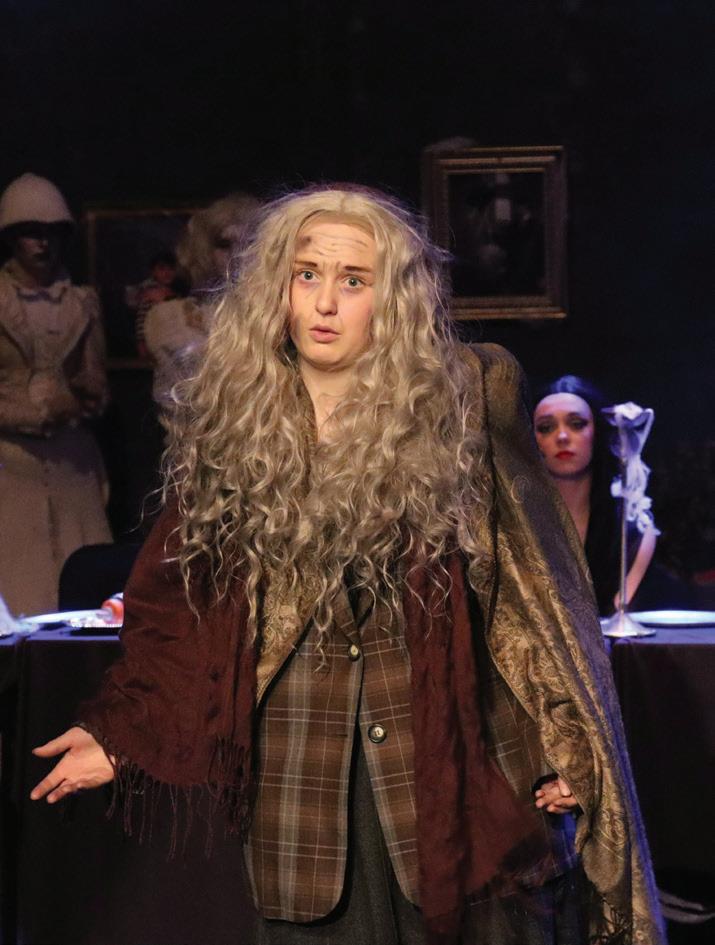
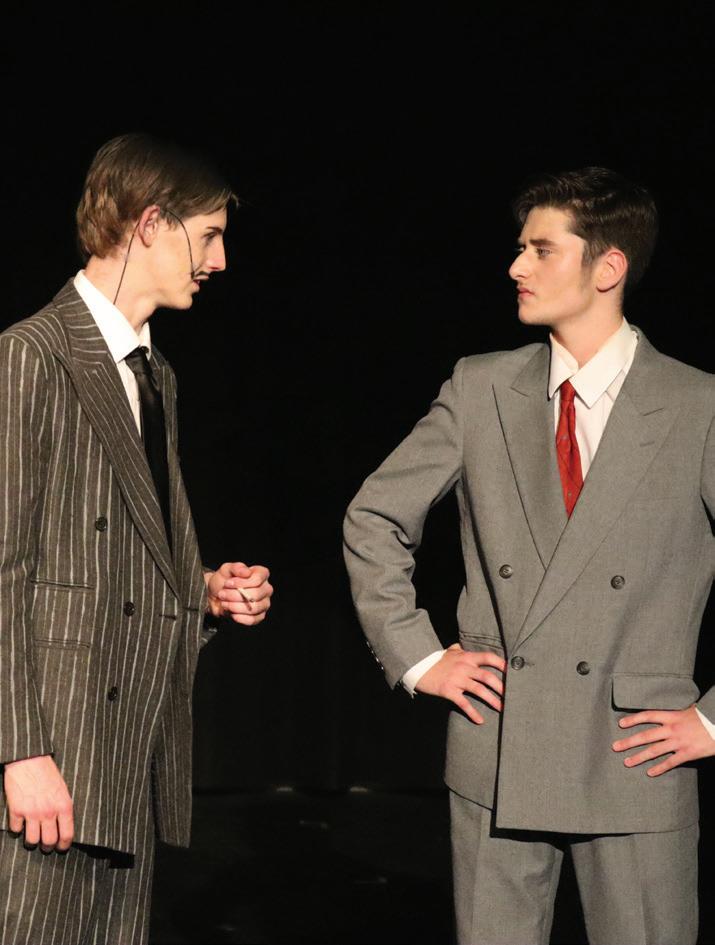
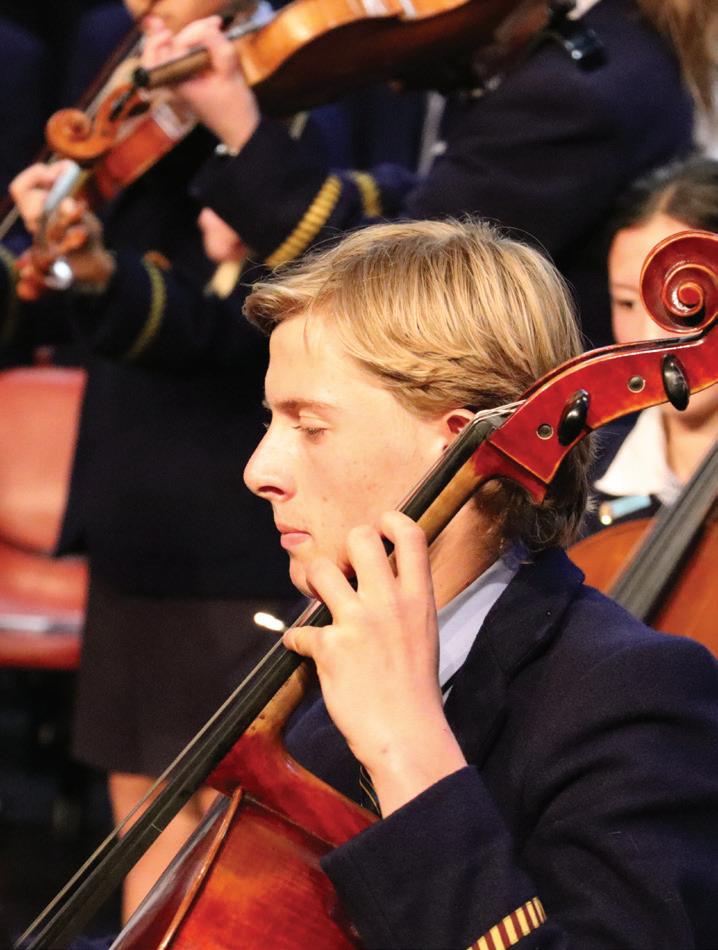
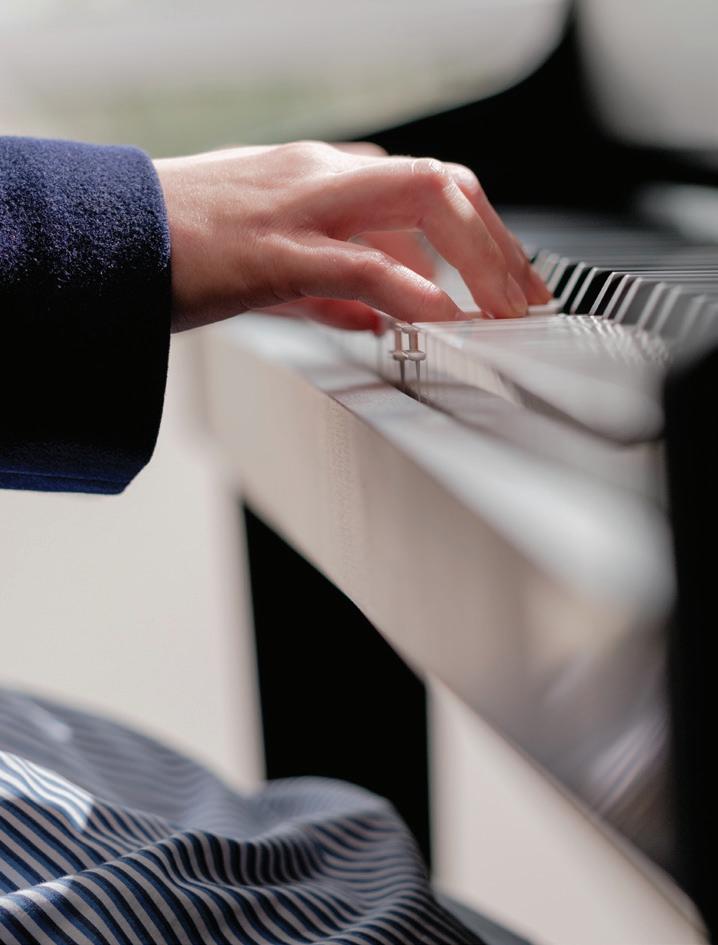

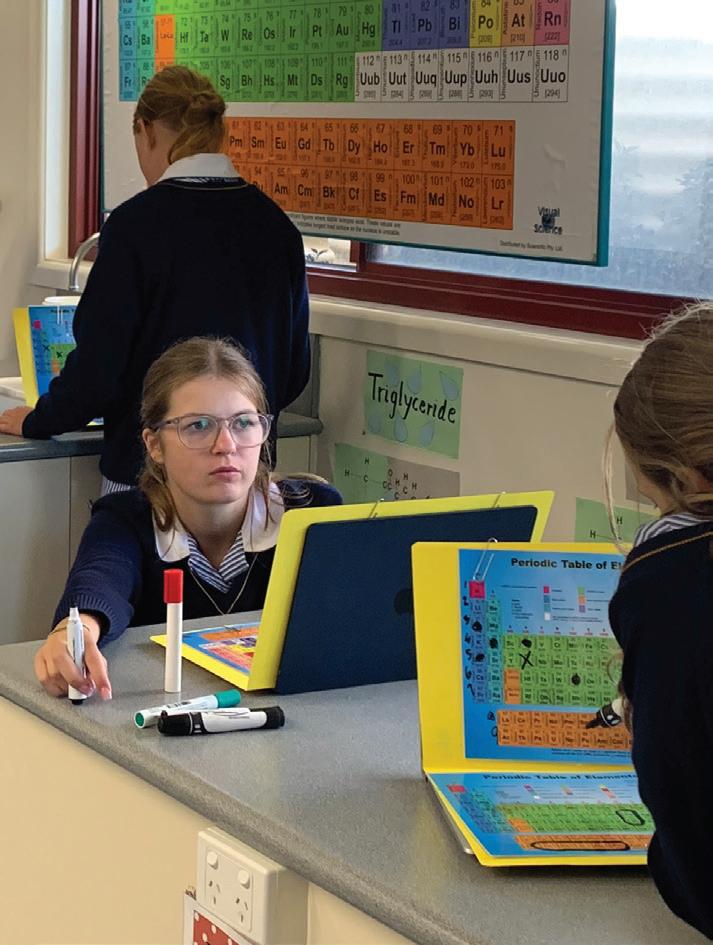
Unit 1 ‘Organisation of Sound Students’ explores and develops students understanding of how music is organised. By performing, creating, analysing and responding to music that exhibits different approaches, students explore and develop their understanding of the possibilities of musical organisation. They prepare and perform musical works to develop technical control, expression and stylistic understanding of their chosen instrument/ sound source. They arrange, compose or improvise short music exercises that reflect their understanding of the organisation of music and the processes they have studied. They develop knowledge of music language concepts as they analyse and respond to a range of music, becoming familiar with the ways music creators treat elements of music and concepts, and use compositional devices to create works that
communicate their ideas. Unit 2 ‘Effect in Music’ sees students focus on the way music can be used to create an intended effect. By performing, analysing and responding to music that creates different effects, students explore and develop their understanding of the possibilities of how effect can be created. Through creating their own music, they reflect this exploration and understanding. Students prepare and perform ensemble and/or solo musical works to develop technical control, expression and stylistic understanding using their chosen instrument/sound source. They create short music exercises that reflect their understanding of the organisation of music and the processes they have studied. They continue to develop their understanding of common musical language concepts by identifying, recreating and notating these concepts
Unit 3 is designed for students whose musical interests are grounded in the recreation and interpretation of notated musical works, and who wish to gain and share knowledge of musical styles and performance practices. Students may present on any instrument for which there is an established repertoire of notated works. They work towards a recital program that demonstrates highly developed technical skills and stylistic refinement as both a soloist and as an ensemble member. They develop the capacity for critical evaluations of their performances and those of others, and an ability to articulate their performance decisions with musical evidence and independence of thought. Unit 4 students identify technical, expressive
and stylistic challenges relevant to works they are preparing for performance and endeavour to address these challenges. They listen and respond to a wide range of music by a variety of performers and study music language concepts such as scales, harmony and rhythmic materials. The works selected for assessment must have sufficient range to convey understanding of the key knowledge and application of the key skills for Outcome 1. Music styles in this study may include (but are not limited to) early music, baroque, classical, romantic, 20th and 21st century art music styles, musical theatre, and classical music outside the Western tradition (for example, Indian, Chinese).
Students undertake two units of study from each of the three main fields of Science –Biology, Chemistry and Physics. Biological concepts are studied within a Genetics unit, where the structure and function of DNA, inheritance patterns, pedigrees and genetic techniques are investigated. A further Biology unit explores the process of evolution and examines the evidence accumulated by scientists regarding our evolutionary history. In the first Chemistry unit, students develop an understanding of The Periodic Table, atomic structure and chemical bonding. They then build on this foundational knowledge, learning about various reaction types and practicing the skill of balancing chemical
equations through practical experimentation. In Physics, students explore the study of motion and forces in the first unit. They then investigate the transfer of energy, exploring concepts such as kinetic energy, gravitational potential energy, and elastic potential energy through hands-on activities and calculations. Students use their knowledge of scientific concepts to draw conclusions that are consistent with evidence collected during practical work. Students also undertake a Forensic Investigations Unit, where they draw upon their knowledge from all areas of science to engage in various scenarios, experiencing the tools and techniques used by forensic scientists.
In Unit 1 Biology, students examine the cell as the structural and functional unit of life, from the single celled to the multicellular organism, including the requirements for sustaining cellular processes. Students focus on cell growth, replacement and death and the role of stem cells in differentiation, specialisation and renewal of cells. They explore how systems function through cell specialisation in vascular plants and animals and consider the role homeostatic mechanisms play in maintaining an animal’s internal environment. In Unit 2 Biology, students focus on cell reproduction and the transmission of biological information from generation to generation through the cell cycle. They compare cell division in both prokaryotic and eukaryotic organisms. Students explore the mechanisms of asexual and sexual reproductive strategies and
In Unit 3 Biology, students investigate the role of nucleic acids and proteins in maintaining life. They learn about the relationship between nucleic acids and proteins and in particular the importance of gene regulation. Students learn about the ways in which DNA can be manipulated and the potential uses of technologies such as CRISPR-Cas9 in bacteria and the role of transgenic organisms to create insulin for human use. Students gain an understanding into the regulation of biochemical pathways in photosynthesis and cellular respiration. In Unit 4 Biology, students study the human immune system and the interactions between its components to provide immunity to a specific pathogen. Students consider how the application of biological knowledge can be used to respond to bioethical issues
In Unit 1 Chemistry, students investigate the chemical structures and properties of a range of materials, including covalent compounds, metals, ionic compounds and polymers. They are introduced to ways that chemical quantities are measured. They consider how manufacturing innovations lead to more sustainable products being produced for society through the use of renewable raw materials and a transition from a linear economy towards a circular economy. Students conduct practical investigations involving the reactivity series of metals, separation of mixtures by chromatography, use of precipitation reactions to identify ionic compounds, determination of empirical formulas, and synthesis of polymers. Throughout this unit students use chemistry terminology including symbols, formulas, chemical nomenclature and equations to
consider the advantages and disadvantages of these two types of reproduction. The role of stem cells in the differentiation, growth, repair and replacement of cells in humans is examined, and their potential use in medical therapies is considered. Students use chromosome theory and terminology from classical genetics to explain the inheritance of characteristics, analyse patterns of inheritance, interpret pedigree charts and predict outcomes of genetic crosses. They explore the relationship between genes, the environment and the regulation of genes in giving rise to phenotypes. They consider the role of genetic knowledge in decision making about the inheritance of autosomal dominant, autosomal recessive and sexlinked genetic conditions. In this context the uses of genetic screening and its social and ethical issues are examined.

and challenges related to disease. Students consider how evolutionary biology is based on the accumulation of evidence over time. They investigate the impact of various change events on a population’s gene pool and the biological consequences of changes in allele frequencies. Students examine the evidence for relatedness between species and change in life forms over time using evidence from palaeontology, structural morphology, molecular homology and comparative genomics. Students examine the evidence for structural trends in the human fossil record, recognising that interpretations can be contested, refined or replaced when challenged by new evidence. The application of ethical understanding in VCE Biology involves the consideration of approaches to bioethics and ethical concepts.
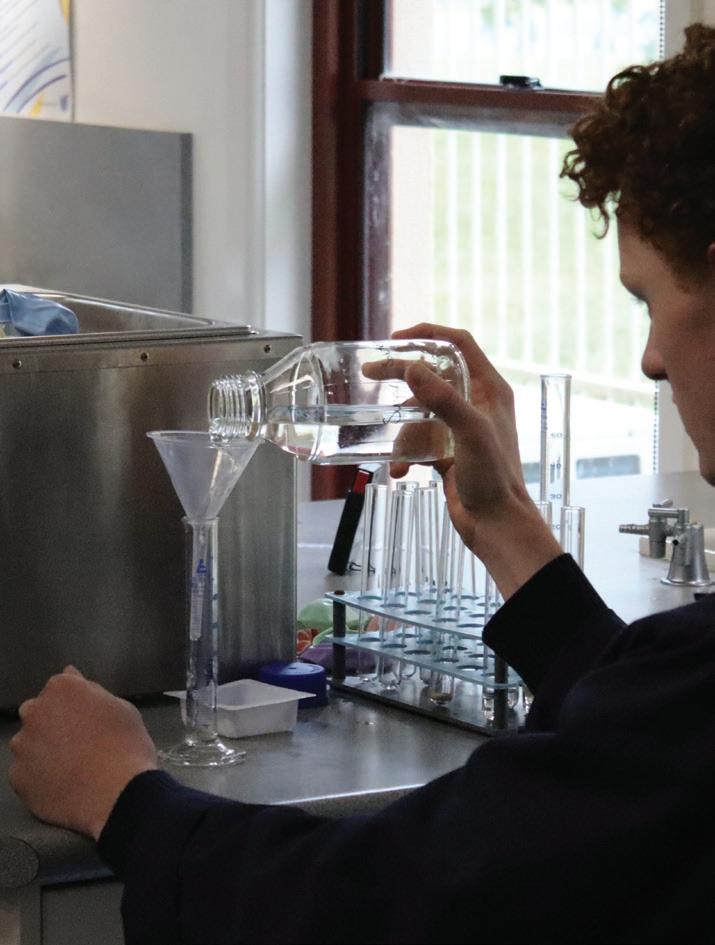
represent and explain observations and data from their own investigations and to evaluate the chemistry-based claims of others. In Unit 2 Chemistry, students analyse and compare different substances dissolved in water and the gases that may be produced in chemical reactions. They explore applications of acidbase and redox reactions in society. Students conduct practical investigations involving the specific heat capacity of water, acidbase and redox reactions, solubility, molar volume of a gas, volumetric analysis, and the use of a calibration curve. Throughout the unit students use chemistry terminology, including symbols, formulas, chemical nomenclature and equations, to represent and explain observations and data from their own investigations and to evaluate the chemistry-based claims of others.

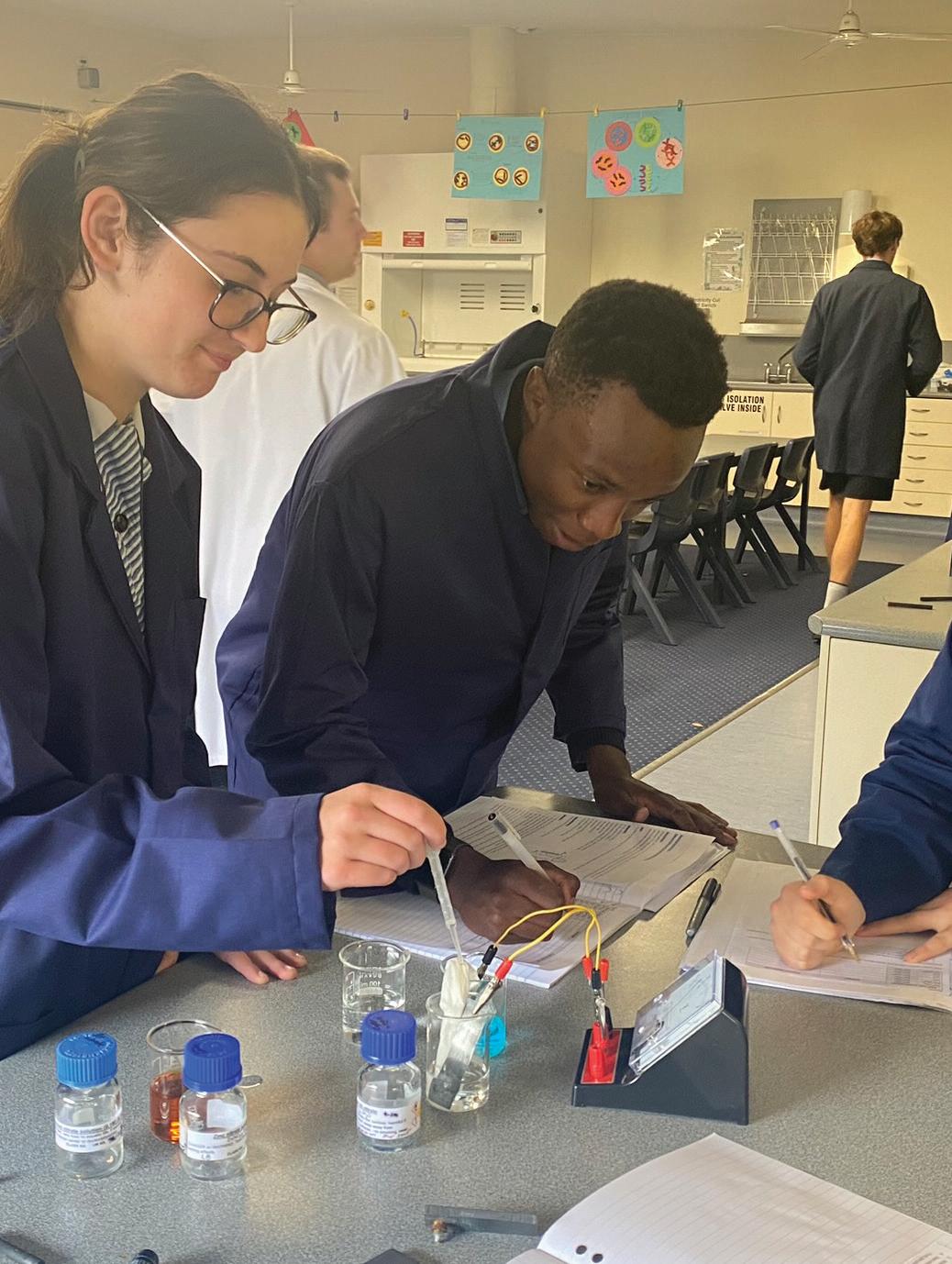
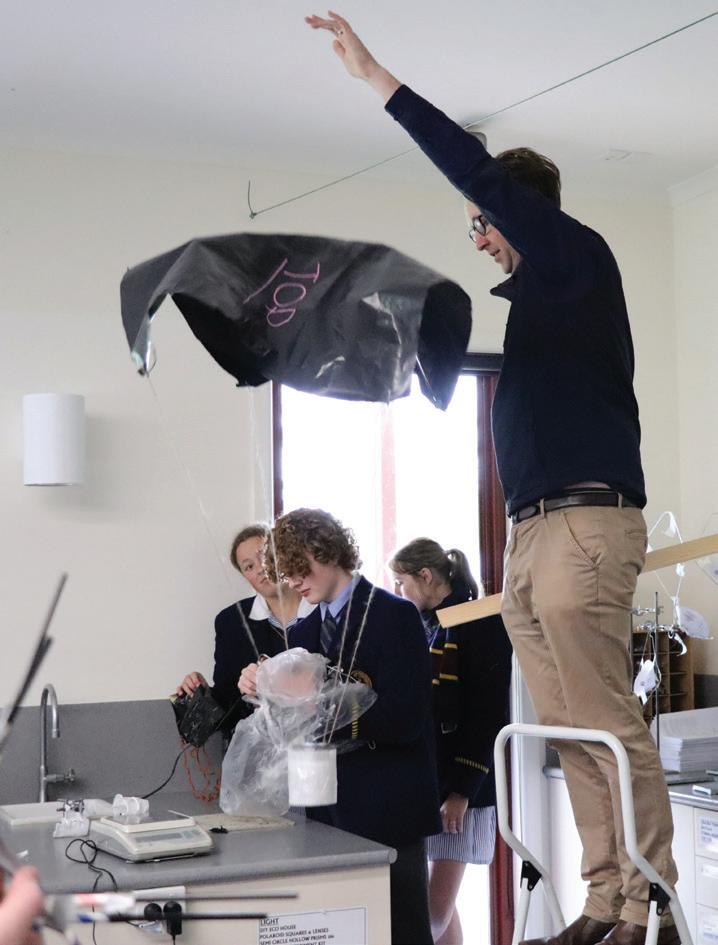
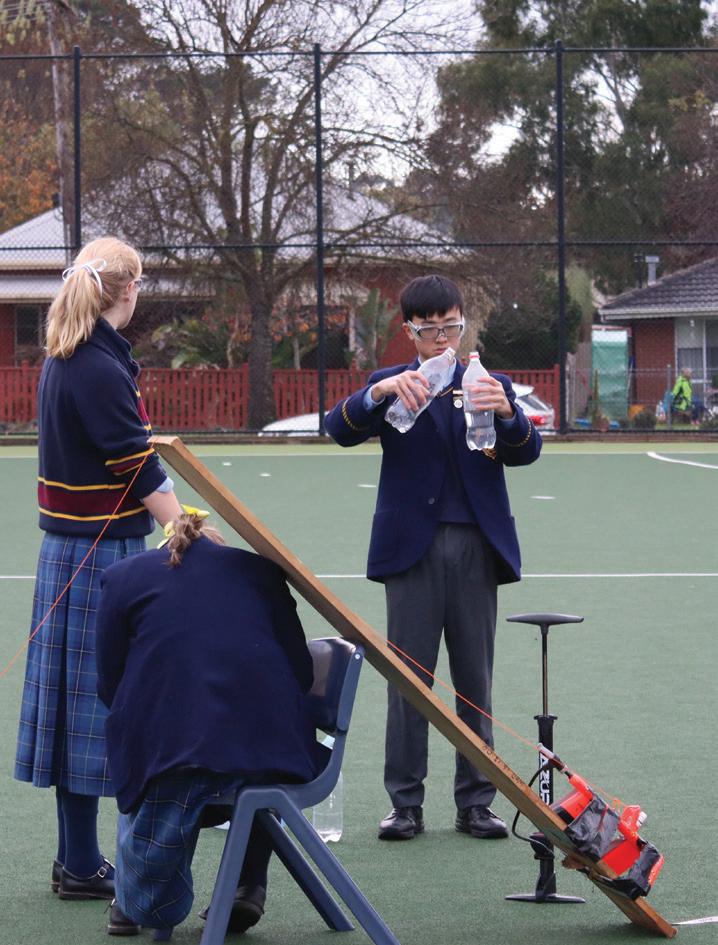
Unit 3 explores how innovation, design and sustainability principles and concepts can be applied to produce energy and materials while minimising possible harmful effects of production. Students analyse and compare different fuels as energy sources for society, with reference to the energy transformations and chemical reactions involved, energy efficiencies, environmental impacts and potential applications. They explore food in the context of supplying energy in living systems. The purpose, design and operating principles of galvanic cells, fuel cells, rechargeable cells and electrolytic cells are considered when evaluating their suitability for supplying society’s needs for energy and materials. They evaluate chemical processes with reference to factors that influence their reaction rates and extent. They investigate how the rate of a reaction can be controlled so that it occurs at the optimum rate while
Unit 1 students study light using the wave model and thermal energy using a particle model forming an understanding of the fundamental physics ideas of reflection, refraction and dispersion. They use these to understand observations made of the world such as mirages and rainbows. They investigate energy transfers and explore how light and thermal energy relate to one another. They apply light ideas to explain how light is used through optical fibres in communication and how physics is used to inform global warming and climate change. Unit 2 students explore the power of experiments in developing models and theories. They investigate a variety of phenomena by making their own observations and generating questions, which in turn lead to experiments. They investigate how forces are involved in moving objects and keeping objects stationary
Unit 3 students use Newton’s laws to investigate motion in one and two dimensions. They explore the concept of the field as a model used by physicists to explain observations of motion of objects not in apparent contact. Students compare and contrast three fundamental fields –gravitational, magnetic and electric – and how they relate to one another. They consider the importance of the field to the motion of particles within the field. Students examine the production of electricity and its delivery to homes. They explore fields in relation to the transmission of electricity over large distances and in the design and operation of particle accelerators. Unit 4 Students explore some monumental changes in thinking in Physics that have changed the
avoiding unwanted side reactions and by-products. Students conduct practical investigations involving thermochemistry, redox reactions, electrochemical cells, reaction rates and equilibrium systems. Unit 4 investigates the structures and reactions of carbon-based organic compounds. They study the metabolism of food and the action of medicines in the body. They explore how laboratory analysis and various instrumentation techniques can be applied to analyse organic compounds to identify them and to ensure product purity. Students conduct practical investigations related to the synthesis and analysis of organic compounds, involving reaction pathways, organic synthesis, identification of functional groups, direct redox titrations, solvent extraction and distillations
and apply these concepts to a chosen case study of motion. Students choose one of eighteen options related to climate science, nuclear energy, flight, structural engineering, biomechanics, medical physics, bioelectricity, optics, photography, music, sports science, electronics, astrophysics, astrobiology, Australian traditional artefacts and techniques, particle physics, cosmology and local physics research. The selection of an option enables students to pursue an area of interest through an investigation and using physics to justify a stance, response or solution to a contemporary societal issue or application related to the option. Finally, a student-adapted or student-designed scientific investigation is undertaken. The investigation involves generating primary data and drawing on the key science skills and key knowledge.
course of how physicists understand and investigate the Universe. They examine the limitations of the wave model in describing light behaviour and use a particle model to better explain some observations of light. Matter, that was once explained using a particle model, is re-imagined using a wave model. Students are challenged to think beyond how they experience the physical world of their everyday lives to thinking from a new perspective, as they imagine the relativistic world of length contraction and time dilation when motion approaches the speed of light. They are invited to wonder about how Einstein’s revolutionary thinking allowed the development of modern-day devices such as the GPS.
Unit 1 students examine the complex nature of psychological development, including the contribution that classical and contemporary knowledge from Western and non-Western societies, such as Aboriginal and Torres Strait Islander peoples. Students investigate the structure and functioning of the human brain and the role it plays in mental processes and behaviour and explore brain plasticity and the influence that brain damage may have on a person’s psychological functioning. A student-directed research investigation into contemporary psychological research is undertaken in this unit which involves the exploration of research, methodology and methods, as well as the application of critical and creative thinking. Unit 2 Students evaluate the role social cognition plays in a person’s attitudes, perception of themselves
Unit 3 investigates how the human nervous system enables a person to interact with the world around them. They explore how stress may affect a person’s psychological functioning and consider stress as a psychobiological process, including emerging research into the relationship between the gut and the brain in psychological functioning. Students investigate how mechanisms of learning and memory lead to the acquisition of knowledge and the development of new and changed behaviours. They consider models to explain learning and memory as well as the interconnectedness of brain regions involved in memory. The use of mnemonics to improve memory is explored, including Aboriginal and Torres Strait Islander peoples’ use of place. Unit 4 students explore the demand for sleep and the influences of
and relationships with others. Students explore a variety of factors and contexts that can influence the behaviour of individuals and groups, recognising that different cultural groups have different experiences and values. Students are encouraged to consider Aboriginal and Torres Strait Islander people’s experiences within Australian society and how these experiences may affect psychological functioning. Students examine the contribution that classical and contemporary research has made to the understandings of human perception and why individuals and groups behave in specific ways. Students investigate how perception of stimuli enables a person to interact with the world around them and how their perception of stimuli can be distorted.
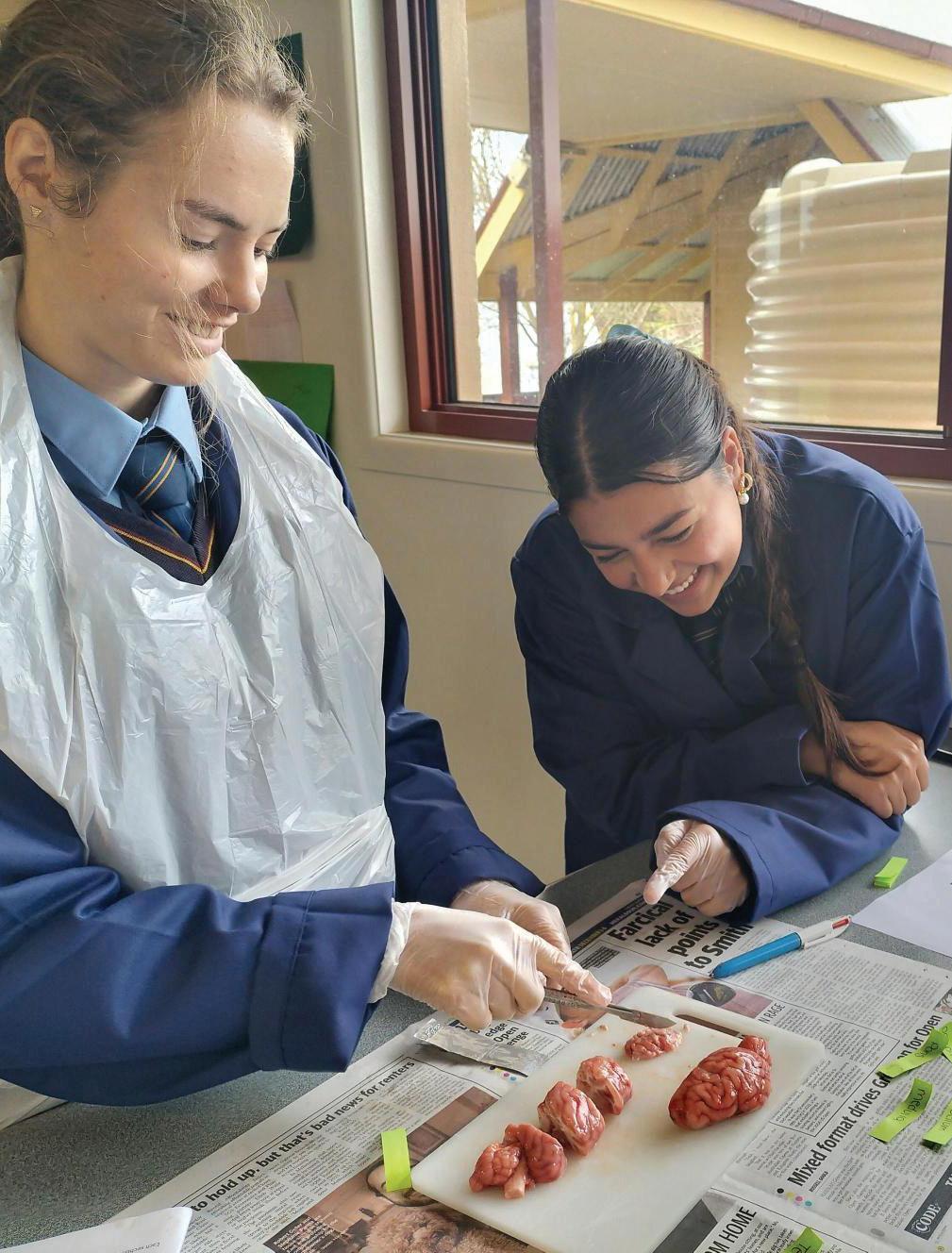
sleep on mental wellbeing. They consider the biological mechanisms that regulate sleep and the relationship between rapid eye movement (REM) and non-rapid eye movement (NREM) sleep across the life span. They also study the impact that changes to a person’s sleep-wake cycle and sleep hygiene have on a person’s psychological functioning and consider the contribution that classical and contemporary research has made to the understanding of sleep. Students consider ways in which mental wellbeing may be defined and conceptualised, including social and emotional wellbeing (SEWB) including the application of the biopsychosocial approach, to understand specific phobia. They explore how mental wellbeing can be supported by protective factors and cultural determinants as integral to the wellbeing of Aboriginal and Torres Strait Islander peoples.
Unit 1 introduces the stages of the problemsolving methodology. Students focus on how data can be used within software tools such as databases and spreadsheets to create data visualisations, and the use of an objectoriented programming (OOP) language to develop a working software solution. As an introduction to data analytics, students respond to teacher-provided solution requirements, designs and data to develop data visualisations. They develop a solution that includes a database, spreadsheet(s) and data visualisations. Students respond to solution requirements to design and develop a working software solution using an OOP language. They develop techniques for debugging and testing their software solution to ensure that it works as intended. Unit 2 students focus on developing an
innovative solution to a problem, need or opportunity that they have identified, and develop an understanding of network environments, cyber security risks, threats to networks and strategies to reduce the risks to data and information. Students work collaboratively and select a topic of interest involving an emerging trend for further study to create an innovative solution. The innovative solution can be presented as a proof of concept, a prototype or a product. Students engage in all areas of the problemsolving methodology while developing this solution. As an introduction to cyber security, students investigate networks and the threats, vulnerabilities and risks to data and information. They propose and justify strategies to protect the security of data and information within a network.



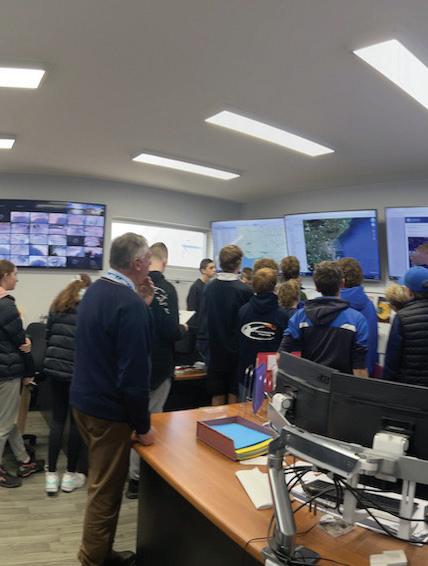
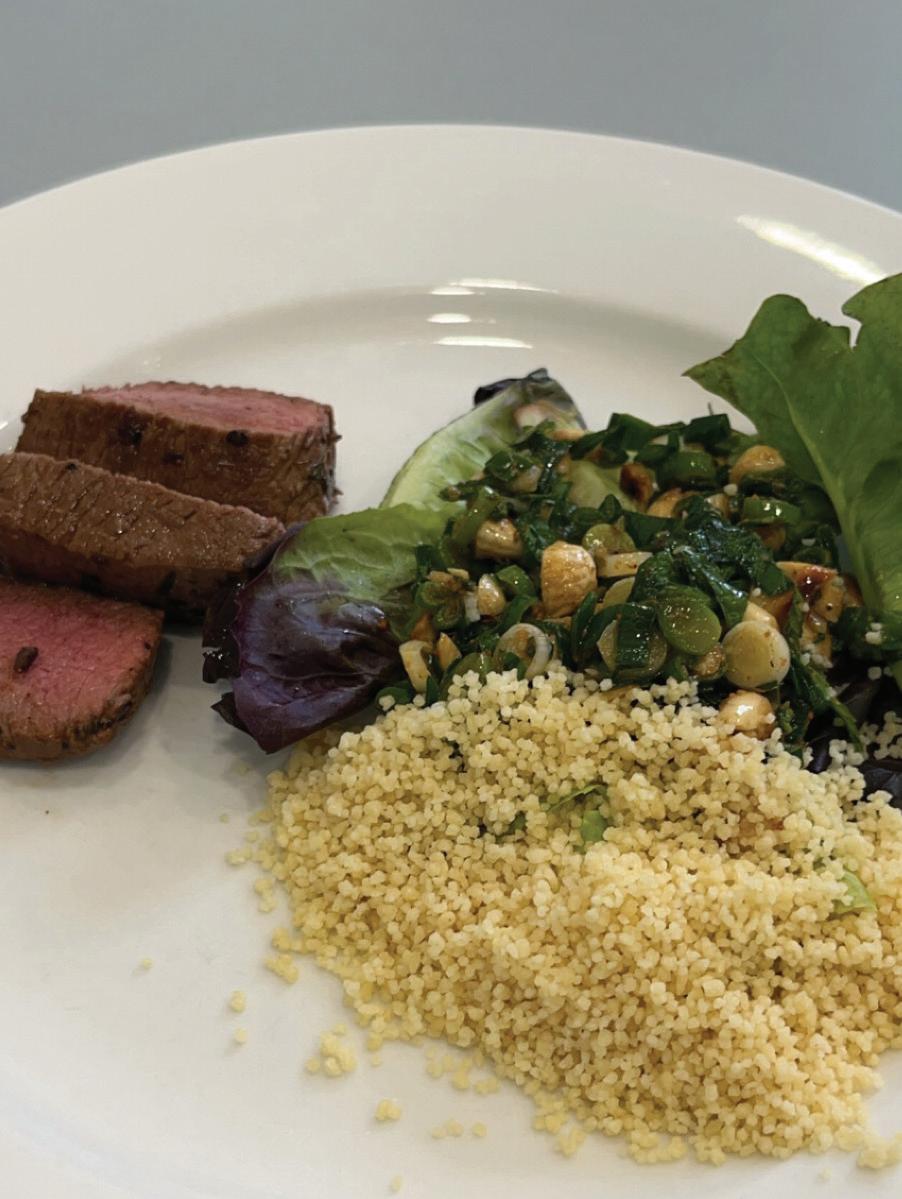
Unit 3 students apply the problemsolving methodology to develop working software modules using an object-oriented programming (OOP) language. Students develop an understanding of the analysis, design and development stages of the problem-solving methodology. Students respond to teacher-provided solution requirements and designs to develop a set of working software modules using an OOP language. Students examine a set of requirements and a range of software design tools in order to apply specific features of an OOP language to create working software modules. Students analyse an identified problem, need or opportunity, prepare a project plan, develop a software requirements specification and design a software solution. In Unit 4, students focus on how the needs of individuals
and organisations are met through the development of software solutions using an object-oriented programming (OOP) language and consider the cyber security risks to organisations because of insecure software development practices. Students apply the problem-solving stages of development and evaluation to develop their preferred design generated into a working software solution. They test and evaluate the solution and assess the project plan. Students examine the current software development practices of an organisation and the risks associated with insecure software development environments and practices. Students evaluate the current security practices and make recommendations to ensure software development environments and practices are secure.
Building on the sustainable agriculture framework explored in the Year 8/9 elective programme, this subject takes the foundational concepts and skills and explores them in greater depth.
Students build skills and knowledge to make informed management decisions around the following areas of farming:
• Grazing
• Animal Production
• Enterprise analysis (student choice)
This year-long course is designed to provide students with a comprehensive understanding of food technology, including food preparation, nutrition, safety, and the cultural and social aspects of food. The course will focus on developing practical skills in the kitchen, fostering creativity, and promoting healthy and sustainable food choices. Students will explore various
food-related topics, engage in hands-on cooking experiences, and develop critical thinking skills through problem-solving and evaluation. Students will study the following areas: Introduction to Food Technology Nutrition and Healthy Eating Food Science and Technology Food, Culture and Sustainability
Unit 1 area of study one focuses on food from historical and cultural perspectives and investigates the origins and roles of food through time and across the world. Students explore how humans have historically sourced their food, progressing from huntergatherer to rural-based agriculture, to today’s urban living and global trade in food. Area of study two focuses on Australia and explores Australian Indigenous food prior to European settlement, and how our food patterns have changed particularly through the influence of food production, processing and manufacturing industries and immigration. Students investigate cuisines that are part of Australian’s culinary identity today, and reflect on the concept of an Australian cuisine.
Unit 2 area of Study One focuses on Australia’s food systems in contemporary Australia, commercial food production industries, understanding the significance of food industries and the Australian economy, and the capacity to provide safe, high-quality food that meets needs of consumers evaluating and comparing food to commercial products. Area of study two focuses on food makers. Students look at food production in the domestic or small-scale setting. They consider the effective provision and preparation of food in the home and analysing the benefits and challenges of developing and using practical food skills in daily life, exploring the cost of living, expenses of families, budgeting, and economical meal preparation.
Students engage in a variety of artistic mediums, including drawing, painting, printmaking, and photography. Through hands-on activities and projects, students learn to communicate their ideas and emotions through art, fostering both artistic proficiency and critical thinking skills. Students experiment with different materials and techniques, gaining a deeper understanding of the artistic process and discovering their own unique artistic practice. The curriculum also includes the
study of art history and the work of diverse artists, providing valuable insights into cultural perspectives and artistic traditions from around the world. By exploring these influences, students broaden their understanding of art and its significance in society. This course encourages creative expression but also promotes confidence, problem-solving abilities, and appreciation for the arts. It allows students to explore their creativity and develop a lifelong passion for artistic exploration.

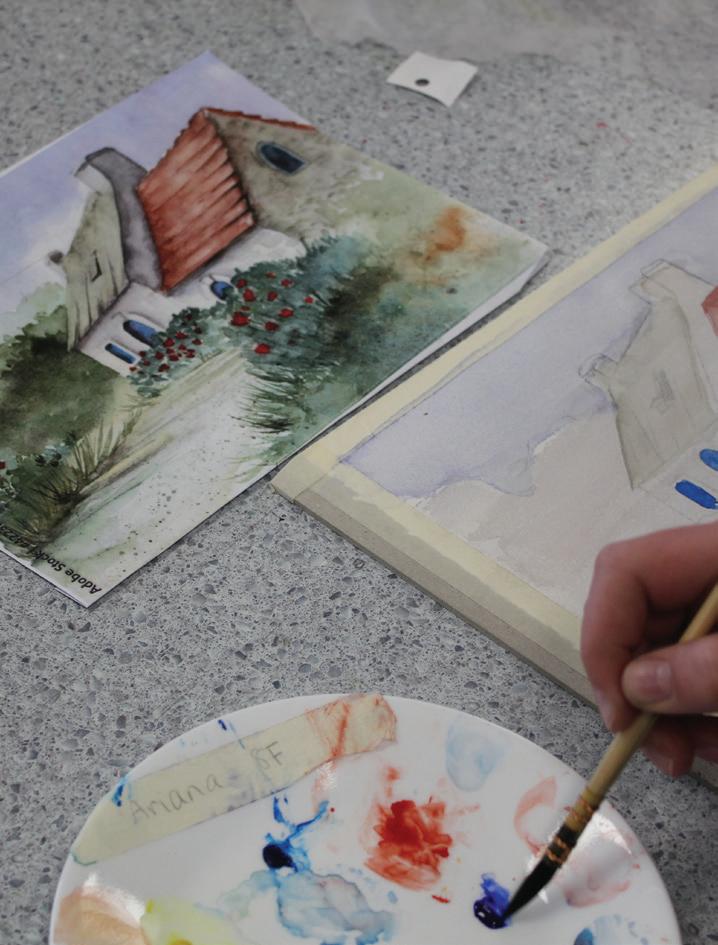
Explore a range of art forms, including drawing, ceramics, sculpture, and installations, each offering unique avenues for artistic expression. Through hands-on experiences, students develop essential skills in spatial reasoning, tactile manipulation, and conceptual development. From sketching initial designs to crafting intricate sculptures and exploring large-scale installations, students will be encouraged to explore their creativity and push the boundaries of traditional artistic practices. By studying the techniques and methods of established artists, students will gain valuable insights into the creative process, learning to
research, plan, and execute their own original artworks. Through experimentation and problem-solving, students will explore the interplay between form, space, and meaning, nurturing their artistic practice. In addition to creating their own pieces, students will analyse and evaluate three-dimensional artworks from diverse cultural and historical contexts, deepening their understanding of art’s significance in society. This course provides a foundation in three-dimensional visual expression, fostering creativity, critical thinking, and a deeper appreciation for the rich diversity of artistic practices.
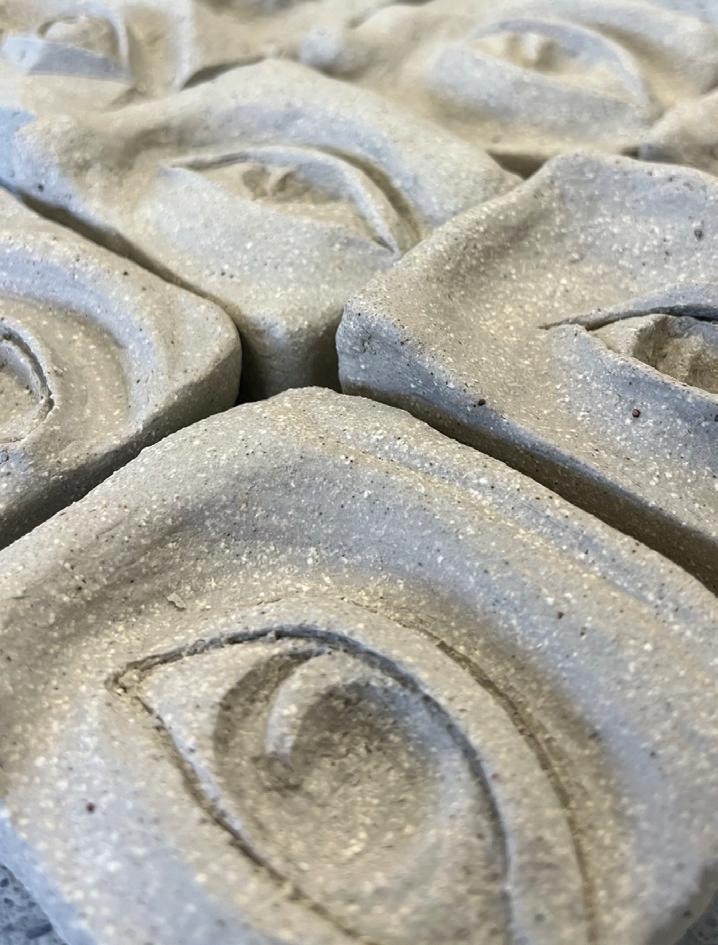


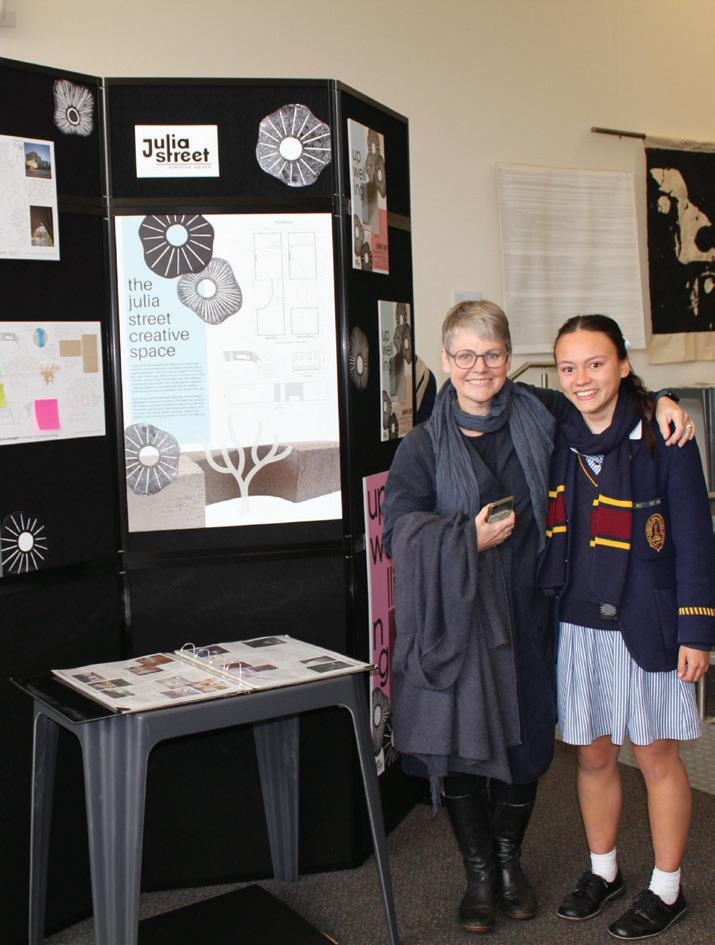
Students undertake a comprehensive exploration into the world of art, encompassing both theory and practice. Students embark on a journey of exploration, expanding their understanding of materials, techniques, and historical developments within various art forms. Through inquirybased learning, they investigate how artists utilise materials and techniques to convey ideas, while ensuring safe practice. Students document their experimentation and reflection in a Visual Arts journal, laying the foundation for further exploration. As their practice develops, students delve deeper into the artistic process, focusing on understanding aesthetic qualities, style development, and thematic exhibitions. Students learn to develop their own ideas, employing art elements and principles to create aesthetic qualities in their work. They investigate thematic exhibitions, analysing
the selection and display of artworks, and even curate their own proposed exhibition, demonstrating their comprehension of art’s contextual significance. Throughout both units, students engage in practical tasks, from experimental artworks to finished pieces, all documented in their Visual Arts journal. They refine their technical skills, explore diverse artistic influences, and develop a personal artistic style. Students research Australian artists, honing their ability to critically analyse artworks and understand their societal impact. Art Making and Exhibiting provides a dynamic platform for students to immerse themselves in the multifaceted world of art, fostering creativity, critical thinking, and a deeper appreciation for artistic expression. Through hands-on exploration and academic inquiry, students cultivate in valuable skills that extend beyond the realm of art, enriching their overall educational experience.
Embark on an immersive journey into the world of visual arts, providing them with the tools and techniques necessary to create and present their own artworks. Students actively engage in art making using different materials, techniques, and processes while exploring contexts and ideas. They research artists, artworks, and inspirations to develop their own style and subject matter, documenting their progress in a Visual Arts journal. Through critiques and peer feedback, students refine their artworks and prepare for exhibition visits, where they gain insights into curatorial practices and exhibition design. Students continue to build upon the skills, focusing on consolidating, presenting, and conserving artworks. Students refine their ideas, resolve finished artworks, and plan their presentation in specific exhibition spaces. They critically evaluate their work,
considering the use of visual language, materials, and techniques. Additionally, students explore the conservation and care of artworks, applying this knowledge to their own creations. Throughout the course, students visit exhibitions, gaining exposure to diverse artistic practices and learning about the presentation and preservation of artworks. They research and plan their own exhibitions, selecting artworks and designing exhibition spaces. By the end of the course, students develop a deeper understanding of the creative process, exhibition practices, and the importance of conservation in the art world. Art Making and Exhibiting equips students with valuable skills in art creation, curation, and conservation, fostering creativity, critical thinking, and appreciation for the visual arts.
Explore the multifaceted world of design. This course delves into the practices and processes employed by designers to identify, reframe, and resolve human-centred design problems. Through a comprehensive curriculum, students gain insight into how design can enhance life for individuals, communities, and societies, evolving their understanding of what constitutes good design across various disciplines and contexts. Unit 1 focuses on foundational concepts, introducing students to the phases of the isual Communication and Design design process and modes of divergent and convergent thinking. They engage in practical projects centred on message and object design, honing their skills in problemsolving and collaboration. Students learn to conduct research, identify communication needs, and prepare design briefs, laying the groundwork for future design endeavours.
In Unit 2, students delve deeper into design contexts and connections, exploring the intersection of design with time, place, and culture. They investigate how design reflects and responds to its environment while considering ethical and legal responsibilities, particularly in relation to Indigenous knowledge and practices. Through interactive experiences and interface design projects, students apply the Visual Communication and Design process to create inclusive and impactful design solutions. Throughout the course, assessment tasks are carefully crafted to allow students to demonstrate their understanding and skills across the key outcomes. By the end of the study, students emerge equipped with a rich understanding of design principles, practical skills, and ethical considerations, ready to navigate the complex landscape of visual communication in the modern world.
Explore the dynamic world of contemporary design practice. Through a blend of theoretical study and practical application, students investigate the multifaceted nature of visual communication, analysing the methods, processes, and aesthetic decisions employed by designers across various fields. In Unit 3, students examine professional design practice. They analyse the contextual landscape within which designers operate, examining the roles of visual language, ethical considerations, and evolving design practices in shaping the profession. Engaging in practical exercises, students develop their skills in visual communication, experimenting with diverse methods, media, and materials relevant to their chosen design fields. Unit 4 investigates the delivery of design solutions, guiding students through the refinement
and resolution of design concepts. Through iterative cycles of ideation, students refine their ideas, employing both manual and digital tools to materialise their visions. They learn to articulate and justify their design decisions through persuasive pitches, demonstrating a nuanced understanding of design principles and the ability to meet client briefs effectively. Throughout the course, students are encouraged to think critically, analyse design examples, and apply their learning to real-world scenarios. By the end of the study, students emerge equipped with not only practical design skills but also a sound understanding of the complex interplay between visual communication, technology, ethics, and societal influences in the contemporary design landscape.
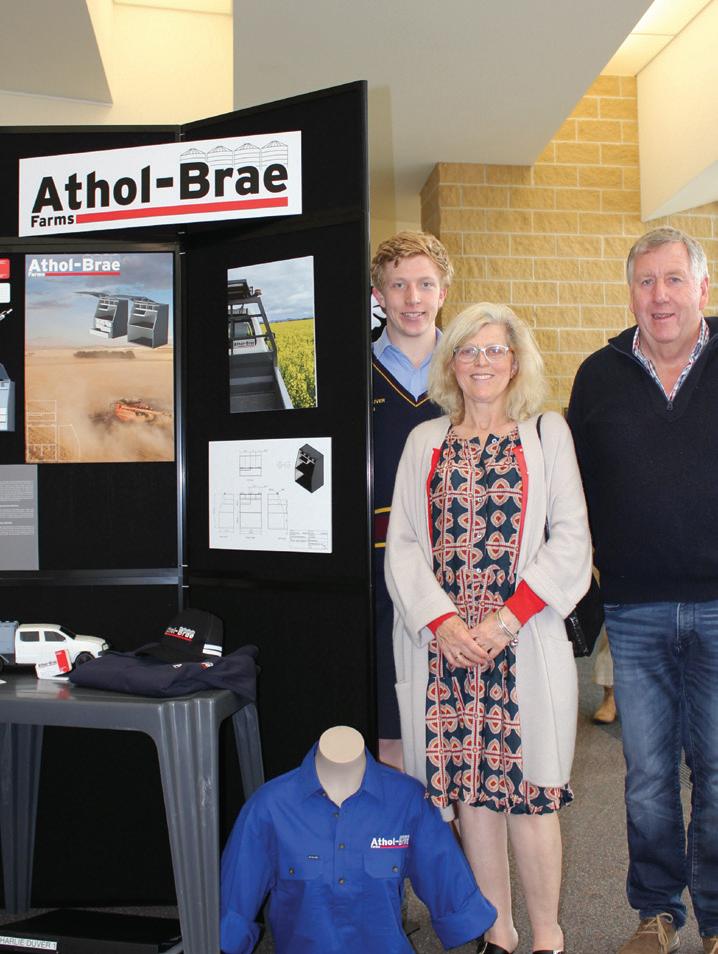
Choosing subjects is exciting, but it is also difficult making choices that may influence your future.
There are more than 1,000 different occupations in Australia. For every job, you will acquire the skills for 13 other jobs, and it is important to remember that there are many pathways to achieve a goal or passion. Learning is ongoing, as we upskill and reskill to future proof a career that can take many turns. You will embrace change as you come to know yourself, to be able to view yourselves in different contexts and build on your transferrable skills, developing an optimistic mindset, to allow you to succeed in an automated and globalised workplace.
Class sessions in Year 10 allow students to participate in career assessments and explore work experience opportunities, post-secondary transition pathways and make study choices that build the skills that will grow in demand. Students will access online tools to help them develop a knowledge bank for the many transitions that will take place in your constantly changing future.
In Year 11 and 12, students benefit from individual and small group careers sessions. The Careers Faculty provides a space where students can investigate, analyse and learn about themselves and what different career paths align with their interests and passions.
Students benefit from dedicated time with our Careers Practitioner, as well as collaborative with students and their families in the decision-making process around career decisions. There is focused assistance with applications to courses, training pathways and employment, and investigation of the Jobs Clusters model and additional skill sets to help manage career transitions.
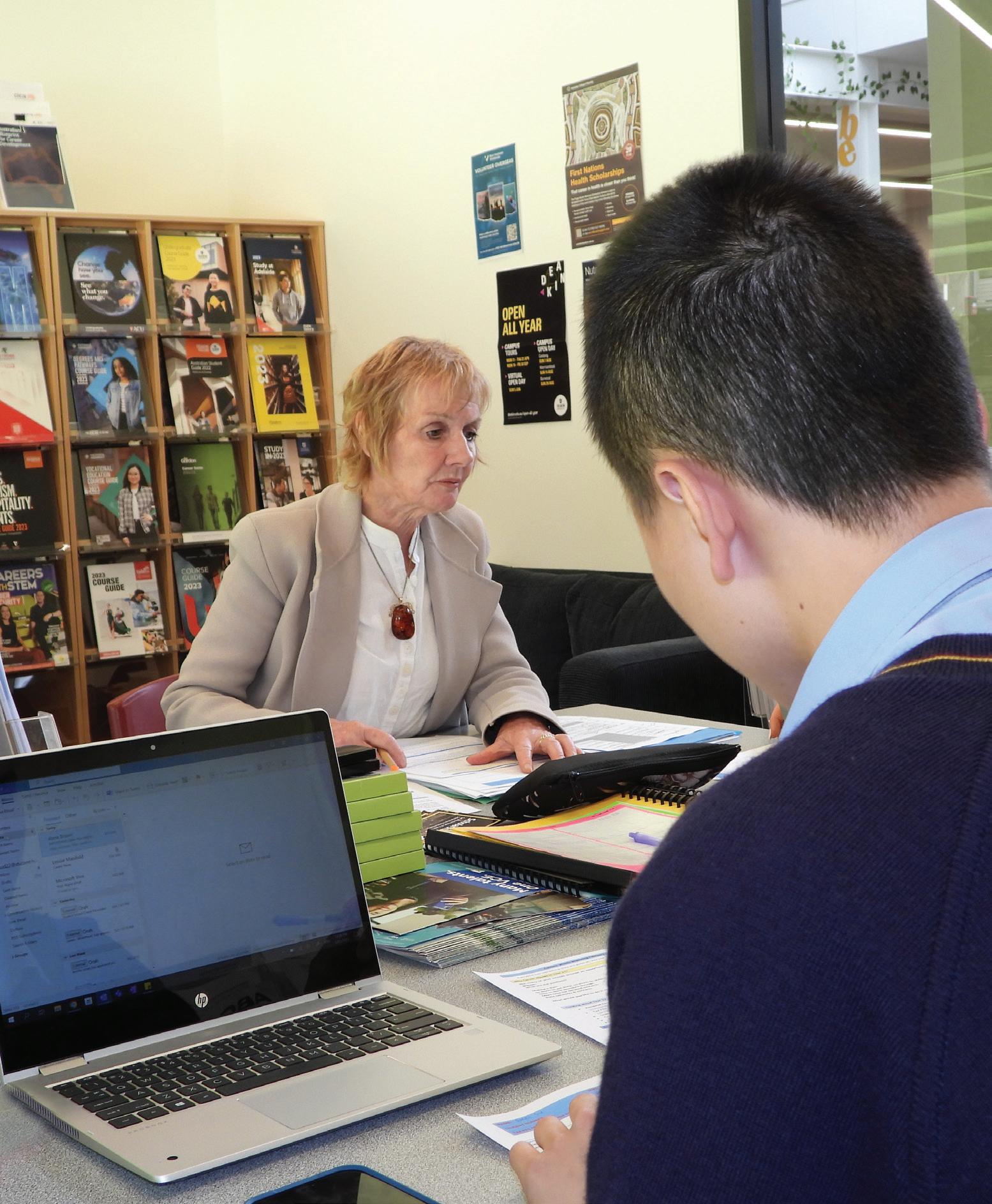
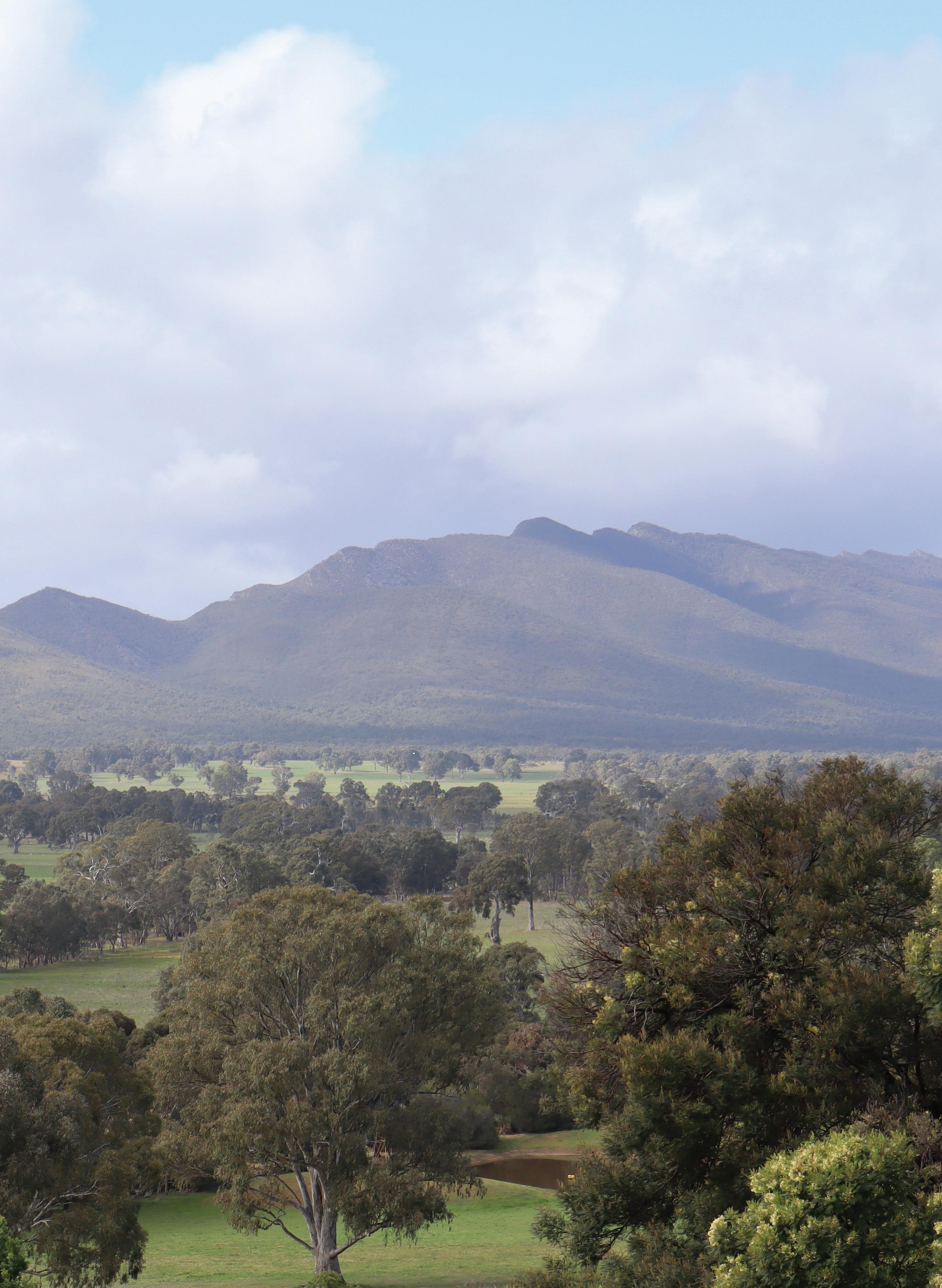
INTRODUCTION
Bullying is unacceptable in all its forms. Members of The Hamilton and Alexandra College Community have a right to a safe and caring environment.
This policy is also contained in the Record Book.
DEFINITION
Bullying is when people use their power to hurt or scare others. It can be done by an individual or by a group. It can be carried out physically, verbally or emotionally. People bully because they feel bad about themselves or to gain popularity. Sometimes even for pleasure.
(Year 10 students, “Stop Bullying” Vic Health Publication)
FORMS OF BULLYING
• PHYSICAL: Physical bullying is unwelcome and may include: fighting; hitting; invasion of personal space; taking, hiding or damaging personal property; or any other form of unwelcome physical contact.
• VERBAL: Verbal bullying is unwelcome and may include: name calling; offensive language; putting people down; picking on people for any reason such as race, gender, religious creed, physical or intellectual attributes, ridiculing or sexual innuendo. This communication could occur verbally, visually or by any form of written or electronic media.
• EMOTIONAL (PSYCHOLOGICAL): This form of bullying is unwelcome and may include: repeated exclusion; threats, rumour-mongering; or the use of nonverbal gestures to hurt people. It also includes all the forms of physical and verbal bullying.
PROCEDURE
Members of The Hamilton and Alexandra College Community have a right and a responsibility to report incidents of bullying.
• Students should report any bullying or harassment to a person in authority with whom they feel comfortable. That person should then inform the students’ teachers/tutors.
• Parents should formally report incidents of bullying to a member of staff.
• Teachers who observe incidents of bullying should deal with them on the spot and report them to the students’ teacher/tutors.
Action will include:
• all reported incidents of bullying being investigated by mentors or Heads of Houses or the Director of Boarding or the Head of Years who may refer the matter to the Deputy Principal and/or the Principal;
• All bullying incidents will be documented and the documents retained;
• these incidents will be mentioned at Pastoral Care meetings.
Action may include:
• interviews with victims, perpetrators and onlookers;
• parent or guardian being notified;
• meeting of all the above with the relevant staff;
• counselling and ongoing monitoring of all the people involved;
• referral to a trained counsellor
• appropriate punishment;
• suspension
Repeated offences will not be tolerated. Any person guilty of bullying may be subject to legal processes.
It is the aim of The Hamilton and Alexandra College to raise awareness of the inappropriateness of bullying through educative and preventative programs which foster an atmosphere that values the worth of each individual and allows each the security to develop fully.
The Hamilton and Alexandra College believes the teaching of cybersafe and responsible online behaviour is essential in the lives of students and is best taught in partnership between home and school. 21st century students spend increasing amounts of time online, learning and collaborating. To be safe online and to gain the greatest benefit from the opportunities provided through an online environment, students need to do the right thing by themselves and others online, particularly when no one is watching. Safe and responsible behaviour is taught at school and parents/carers are requested to reinforce this behaviour at home.
Social Media refers to all social networking sites including but not limited to mobile phone texting, Facebook, X, Pintrest, Threads, Linked-in, You Tube, Instagram, instant messaging services and Myspace.
Some online activities are illegal and as such will be reported to police.
The Hamilton and Alexandra College will develop and maintain rigorous and effective Cybersafety practices which aim to maximise the benefits of the Internet and ICT devices/ equipment to student learning and to the effective operation of the school, whilst minimising and managing any risks.
These Cybersafety practices will aim to not only maintain a cyber safe school environment but also to address the need for students and other members of the school community to receive education about the safe and responsible use of present and developing information and communication technologies.
Associated issues the School will continue to address include the need for relevant education about Cybersafety for the school community, implications for the design and delivery of the curriculum, the deployment of staff, professional development and training, disciplinary responses appropriate to breaches of Cybersafety, the availability of appropriate pastoral support and potential employment issues.
Cybersafety is a key component of the Health and Well-being curriculum at The Hamilton and Alexandra College and lessons are delivered to Years 7-10. Educational sessions are arranged for students in Years 11 and 12.
The Hamilton and Alexandra College takes seriously its responsibility in providing robust policy, guidelines and education for students in relation to what is deemed acceptable and appropriate online behaviours.
• The school name, motto, crest, logo and/ or uniform must not be used in any way which would result in a negative impact for the school and its community.
• Students must not post photos of themselves and/or other students which clearly identity them as a member of The Hamilton and Alexandra College community, nor post photos taken during any school sanctioned activity. This includes off campus events such as sports days and camps.
• Members of the school community also have a responsibility to ensure that all online communications are in keeping with the schools expectations in relation to appropriate and respectful interactions with teaching and nonteaching staff.
• Students will not post inappropriate comments about members of the College community which, if said in person, would result in disciplinary action being taken.
“Cyberbullying is a way of delivering covert psychological bullying. It uses information and communication technologies to support deliberate, repeated and hostile behaviour, by an individual or group that is intended to harm others.” (Belsey 2007)
Cyberbullying includes, but is not limited to, the following misuses of technology: harassing, teasing, intimidating, threatening, another person by sending or posting inappropriate and hurtful e-mail messages, instant messages, text messages, phone messages, digital pictures or images, or Web site postings (including blogs).
The forwarding of private emails, messages, pictures or videos or otherwise inappropriately communicating personal or private information belonging to another person or logging on and pretending to be someone else as well as sending sexually explicit images (‘sexting’) and intentionally excluding others from an online group all constitute cyberbullying and if this occurs either during school time or after school hours, will constitute a breach of school policy and as such a student will be subject to disciplinary action.
Students must be aware that in certain circumstances where a crime has been committed, they may also be subjected to a criminal investigation by Police over which the school will have no control.
In the event of inappropriate material being forwarded to either staff or student’s electronic devices (computers / phone), which places the recipient of being at risk of being ‘in possession of child pornography’, this must be reported to the Principal to be communicated to the appropriate authorities.
Members of the College community who feel that they have been the victims of such misuses of technology should save and store the offending material on their computer, mobile phone or other device. They should then print a copy of the material and immediately report the incident to a teacher. Staff who may have been cyberbullied or threatened online should immediately report such incidences to a member of the School Leadership Team.
All reports of cyberbullying and other technology misuses will be investigated fully and may result in a notification to Police where the school is legally obliged to do so. School sanctions may include, but are not limited to, the loss of computer privileges, detention, suspension, or expulsion and these sanctions will be determined at the Schools’ discretion.
This policy and related procedures are to be read in conjunction with the School’s Bullying Policy and Procedure and The Hamilton and Alexandra College Student Computer Network, Internet Services and Mobile Phones Acceptable Use Policy.
Child safety and protection is of the utmost importance to us here at The Hamilton and Alexandra College. It is important that we all play a role in ensuring the safety of every child.
If a student ever has concerns for themselves or any other student it is imperative that they let a staff member
Students in Years 7-12 are not permitted to use their mobile phone between the hours of 8:30am-3:30pm:
• If the mobile phone is brought to school, it must remain locked in the student’s locker between the hours of 8:30am-3:30pm.
• an exemption may be granted for a student to have their phone in class for a medical or psychological issue if approved by a qualified medical practitioner, counsellor, or psychologist.
• an exemption may also be granted if it is required by the organizing staff member to be used in class, on excursions/fieldtrips or camps.
• Air pods and earphones are not permitted during class time unless specifically authorised by the teacher.
• All Orah requests must be finalised prior to 8.30 am. Orah is a student engagement platform used by Boarding students.
Inappropriate Use of the Mobile Phone:
• If a phone is misused, it will be immediately confiscated by the teacher. The phone will be handed to the front office and may only be collected by the student or guardian at the end of the school day.
• The Mentor will be informed and the incident recorded on SIMON.
• Recurrence of misuse of the mobile phone will incur further sanctions and is likely to result in the student losing any permission to have their phone at school.
know immediately. All concerns will be dealt with appropriately and confidentially.
Our full suit of child safety policies can be found at: https://tha.ac/ childsafepolicies
